Burial
1. Compaction
Condensed benthic foraminifera grainstone with Lepidocyclina (centre right), Nummulites (centre left), Miogypsinoides (upper and lower left) and bryozoans (lower right corner) from inner to middle ramp of early Oligocene age with mechanical compaction features due to burial diagenesis: a) broken skeletal grains, b) compenetrated concave-convex grain contact, c) drusy mosaic of blocky sparite (left corner).
Thin section kindly provided by T. Geel, Vrije Universiteit, Amsterdam

HIDE INFO

SHOW INFO
2. Compaction
Condensed crinoidal packstone with carbonate mud and argillaceous matrix sutured at grain contacts from a Mississippian mound flank facies in the middle ramp.
Mississippian, New Mexico, USA

HIDE INFO

SHOW INFO
3. Compaction
Condensed skeletal packstone with rotalids, echinoderms, Lepidocyclina and coralline red algae rhodoids from Oligocene middle ramp facies with concave-convex and sutured grain contacts due to burial compaction.
Thin section kindly provided by T. Geel, Vrije Universiteit, Amsterdam

HIDE INFO

SHOW INFO
4. Compaction
Condensed skeletal packstone with Nummulites, rotalids, echinoderms, Lepidocyclina, bryozoans and coralline red algae rhodoids from Oligocene middle ramp facies with concave-convex and sutured grain contacts due to burial compaction.
Thin section kindly provided by T. Geel, Vrije Universiteit, Amsterdam

HIDE INFO

SHOW INFO
5. Compaction
Fitted skeletal grainstone with Nummulites, Lepidocyclina and rotalids with broken foraminifera (centre right) and sutured grain contacts due to burial compaction. Facies from lower Oligocene inner ramp.
Thin section kindly provided by T. Geel, Vrije Universiteit, Amsterdam

HIDE INFO

SHOW INFO
6. Compaction
Skeletal packstone with miliolids (centre right), alveolinids (centre left), rotalids (left corner), echinoderms and grains with micrite envelopes from a lagoon of Eocene age. Grain contacts are concave-convex and the alveolinid has been deformed due to partial dissolution.
Thin section kindly provided by T. Geel, Vrije Universiteit, Amsterdam

HIDE INFO

SHOW INFO
7. Stylolite
Stained (alizarin red, K ferricyanide) thin section of an ooidal grainstone with thin rims of possibly early marine cement (pink), followed by a mosaic of blocky ferroan calcite (blue) of burial origin. The deposit shows a well-developed stylolite crossing in diagonal the thin section. The dark material (Fe oxides, clay minerals) within the stylolite represents the insoluble residue of the pressure solution process.
Pennsylvanian, Asturias, N Spain, cf. Bahamonde et al. (2015, 2017)

HIDE INFO

SHOW INFO
8. Burial Cement
Stained (alizarin red, K ferricyanide) thin section of an ooidal grainstone with a fracture breaking up the large ooid in the centre. Interparticle space and fracture have been filled by mostly blue-stained ferroan blocky calcite precipitated in burial (reducing) diagenetic environment.

HIDE INFO

SHOW INFO
9. Burial Cement
Stained (alizarin red, K ferricyanide) thin section of an ooidal grainstone cemented by large crystals of ferroan calcite (blue) with poikilotopic fabric precipitated in burial (reducing) environment. Cementation follows mechanical compaction.

HIDE INFO

SHOW INFO
10. Burial Cement
Stained (alizarin red, K ferricyanide) thin section of an ooidal grainstone showing compaction related concave-convex grain contacts followed by burial cement (blue stained ferroan calcite) from a Visean inner ramp facies belt.
Mississippian, South Wales, UK

HIDE INFO

SHOW INFO
11. Burial Cement
Stained (alizarin red, K ferricyanide) thin section of an ooidal grainstone showing compaction related concave-convex grain contacts and burial cement (blue stained ferroan calcite) from a Visean inner ramp facies belt. The crinoid ossicle in the centre exhibits the growth of syntaxial calcite (cement grown in optical continuity with the crystalline axis of the echinoderm fragment).
Mississippian, South Wales, UK

HIDE INFO

SHOW INFO
12. Burial Cement
Stained (alizarin red, K ferricyanide) thin section of a skeletal coated grain (ooids and cortoids) grainstone with blue-stained ferroan calcite. Some of the coated grains have quartz detrital grains as nuclei. The deposit is crossed by a fracture filled by burial ferroan calcite.

HIDE INFO

SHOW INFO
13. Burial Cement
Stained (alizarin red, K ferricyanide) thin section of a skeletal (gastropods, brachiopods, bivalves) coated grain (ooids and cortoids) grainstone showing a mosaic of blue-stained blocky ferroan calcite. Some of the coated grains have quartz detrital grains as nuclei.

HIDE INFO

SHOW INFO
14. Burial Cement
Stained (alizarin red, K ferricyanide) thin section of an ooidal grainstone cemented by a thin (a few microns) isopachous rim of bladed cement (phreatic marine origin?) and equant blocky sparite of possible burial origin (blue-purple staining).

HIDE INFO

SHOW INFO
15. Burial Cement
Stained (alizarin red, K ferricyanide) thin section of an ooidal grainstone with large crystals of poikilotopic (growing beyond the grain boundaries and including more grains within the same crystal) ferroan calcite common in burial diagenetic environment.

HIDE INFO

SHOW INFO
16. Burial cement
Stained (alizarin red, K ferricyanide) thin section of an ooidal (micritised and broken) skeletal grainstone that was compacted (concave-convex grain contact) previous to cementation by burial ferroan calcite (blue). On the left side, some non-ferroan (pink) syntaxial and blocky calcite had been precipitated before deep burial and there are no evidences of chemical-mechanical compaction.

HIDE INFO

SHOW INFO
17. Burial cement
Stained (alizarin red, K ferricyanide) thin section of an ooidal (partly micritised ooids) grainstone likely cemented in the meteoric phreatic zone (pink rims of non-ferroan equant calcite) and in the burial diagenetic environment (blue equant blocky sparite).

HIDE INFO

SHOW INFO
18. Burial Cement
Stained (alizarin red, K ferricyanide) thin section of a skeletal ooidal grainstone showing a gastropod mould in the centre filled by zoned calcite crystals. The staining puts in evidence the successive phases of growth of the crystals and the alternation of redox conditions of the precipitating fluid between reducing (ferroan calcite, blue) and oxidising (non ferroan calcite, pink).

HIDE INFO

SHOW INFO
19. Burial Cement
Stained (alizarin red, K ferricyanide) thin section of a skeletal ooidal grainstone showing a gastropod mould in the centre filled by zoned calcite crystals. The staining highlights the successive phases of growth of the crystals and the alternation of redox conditions of the precipitating fluid between reducing (ferroan calcite, blue) and oxidising (non ferroan calcite, pink).

HIDE INFO

SHOW INFO
20. Drusy Cement
Skeletal and cortoid (grains with micrite envelopes) grainstone showing in the centre the micrite envelope lining a dissolved mollusc shell. The blocky calcite spar exhibits locally a drusy fabric with increasing crystal size towards the centre of the pore.

HIDE INFO

SHOW INFO
21. Drusy Cement
Skeletal packstone with a gastropod mould filled by drusy sparite with crystal size increasing towards the pore centre precipitated during burial diagenesis.
Thin section kindly provided by T. Geel, Vrije Universiteit, Amsterdam

HIDE INFO

SHOW INFO
22. Drusy Cement
Skeletal, peloidal and cortoid (grains with micrite envelopes) grainstone showing in the centre the micrite envelope lining a dissolved bioclast. The mosaic of calcite spar exhibits a drusy fabric with increasing crystal size towards the centre of the biomold.
Thin section kindly provided by T. Geel, Vrije Universiteit, Amsterdam

HIDE INFO

SHOW INFO
23. Syntaxial Cement
Coated grain and superficial ooid grainstone with two echinoderm plates (centre right) showing syntaxial growth of calcite cement. Syntaxial cement can form in phreatic meteoric, burial and possibly in marine environments.
Thin section kindly provided by T. Geel, Vrije Universiteit, Amsterdam

HIDE INFO

SHOW INFO
24. Syntaxial Cement
Previous image in crossed polarisers. Coated grain and superficial ooid grainstone with two echinoderm plates in the centre right showing syntaxial growth of calcite cement. The image shows the simultaneous extinction of the echinoid plate and the syntaxial cement.
Thin section kindly provided by T. Geel, Vrije Universiteit, Amsterdam

HIDE INFO

SHOW INFO
25. Syntaxial Cement
Previous image in crossed polarisers. Coated grain and superficial ooid grainstone with two echinoderm plates in the centre right showing syntaxial growth of calcite cement. The image shows the simultaneous extinction of the echinoid plate and the syntaxial cement.
Thin section kindly provided by T. Geel, Vrije Universiteit, Amsterdam

HIDE INFO

SHOW INFO
26. Silicification
Coated grain skeletal packstone-grainstone with quartz grains (centre left) showing in the centre an echinoderm fragment with syntaxial cement and silicification.
Thin section kindly provided by T. Geel, Vrije Universiteit, Amsterdam

HIDE INFO

SHOW INFO
27. Silicification
Skeletal (foraminifera) grainstone with silicification: white patches in parallel polarised light.
Thin section kindly provided by T. Geel, Vrije Universiteit, Amsterdam

HIDE INFO

SHOW INFO
28. Silicification
Previous image viewed in crossed polarised light showing the skeletal (foraminifera) grainstone with silicification: patches with grey-white interference colours of fibrous chalcedony.
Thin section kindly provided by T. Geel, Vrije Universiteit, Amsterdam

HIDE INFO

SHOW INFO
29. Silicification
Image viewed in crossed polarisers of a crinoidal grainstone with dominant syntaxial cement and silicification processes on some ossicles.
Mississippian, New Mexico, USA

HIDE INFO

SHOW INFO
30. Silicification
Example of silica replacement by megaquartz of a rudist shell (calcite mineralogy, pink because stained with Alizarin red) viewed in parallel polarized light.
Upper Cretaceous (Turonian), Miskar Field, offshore Tunisia

HIDE INFO

SHOW INFO
31. Silicification
Previous image in cross polarisers, example of silica replacement by megaquartz of a rudist shell (calcite mineralogy, pink because stained with Alizarin red).
Upper Cretaceous (Turonian), Miskar Field, offshore Tunisia

HIDE INFO

SHOW INFO
32. Mechanical compaction
Skeletal and coated grain grainstone with isopachous rims of marine fibrous cement that has been broken up by mechanical compaction. Field of view appoximately 2 mm wide.
Carboniferous, Karachaganak Field, Kazakhstan

HIDE INFO

SHOW INFO
33. Concave-convex grain contacts
Coated grain grainstone with evidence of chemical compaction with pressure solution of carbonate grains against more resistant quartz grains and concave-convex grain contacts.
Jurassic, Oxfordshire, UK

HIDE INFO

SHOW INFO
34. Fitted fabric
Open-packed, well-cemented oolitic grainstone with early marine cement overlain by a skeletal packstone with fitted fabric because of compaction in absence of previous cementation (transgressive skeletal intraclast deposit). Field of view approximately 4.8 mm wide.
Mississippian, Gilwern Oolite, Llanelly Fm., South Wales, UK

HIDE INFO

SHOW INFO
35. Stylolite
Stylolite marked by insoluble bitumen following pressure solution/chemical compaction in Nummulites-rich packstone.
Eocene, El Garia Formation, Hasdrubal Field, offshore Tunisia

HIDE INFO

SHOW INFO
36. Stylolite
Stylolite in ooidal grainstone following pressure solution/chemical compaction.
Jurassic, southern England, UK

HIDE INFO

SHOW INFO
37. Fitted fabric
Eocene Nummulites-dominated fitted fabric grainstone where grain contacts are fully sutured due to compaction and pressure solution.
Eocene, El Garia Formation, Hasdrubal Field, offshore Tunisia

HIDE INFO

SHOW INFO
38. Syntaxial cement
Echinoderm grainstone showing syntaxial cement.
Carboniferous, Karachaganak Field, Kazakhstan

HIDE INFO

SHOW INFO
39. Authigenic quartz
Image in crossed polarisers of peloidal wackestone with formation of authigenic quartz crystals in a Carboniferous mud mound facies.
Mississippian, Waulsortian mounds, Ireland

HIDE INFO

SHOW INFO
40. Silicification
Image in plane polarised light of a calci-mudstone with diffuse silicification of the micrite.
Permian, Capitan Reef, New Mexico, USA

HIDE INFO

SHOW INFO
41. Silicification
Previous image in crossed polarizers showing a calci-mudstone with diffuse silicification of the micrite.
Permian, Capitan Reef, New Mexico, USA

HIDE INFO

SHOW INFO
42. Neomorphic microsparite
Neomorphism of original micrite recrystallized in microsparite in a skeletal grainstone/packstone with Orbitolinid foraminifer (Lower Cretaceous).
Thin section kindly provided by T. Geel, Vrije Universiteit, Amsterdam

HIDE INFO

SHOW INFO
43. Neomorphic microsparite
Previous image in crossed polarizers with neomorphic microsparite due to recrystallization of micrite in a skeletal grainstone/packstone with Orbitolinid foraminifer (Lower Cretaceous).
Thin section provided by T. Geel, Vrije Universiteit, Amsterdam

HIDE INFO

SHOW INFO
44. Blocky sparite
Blocky mosaic of equant sparite of burial origin following a scalenohedral calcite cement rim.

HIDE INFO

SHOW INFO
45. Drusy fabric
Burial calcite spar can display drusy fabric with increase of crystal size towards the centre of the pore.

HIDE INFO

SHOW INFO
46. Drusy fabric
Calcite cement in a coral with a drusy fabric where the crystal size increases towards the pore centre.

HIDE INFO

SHOW INFO
47. Drusy fabric
Burial calcite spar can display drusy fabric with increase of crystal size towards the centre of the pore.

HIDE INFO

SHOW INFO
48. Etched cement
Etched late burial cement and intercrystalline porosity.
Upper Cretaceous, Miskar Field, offshore Tunisia

HIDE INFO

SHOW INFO
49. Burial corrosion
Burial corrosion is a type of limestone selective dissolution occurring in the burial diagenetic environment. Extensive selective dissolution has taken place after cementation (sparite filling miliolid intraparticle porosity) and after pressure solution with the preferential removal of walls of miliolid foraminifera.
Bassein Limestone, Eocene, Mukta Field, Bombay High, offshore India

HIDE INFO

SHOW INFO
50. Burial corrosion
Corroded cement from mouldic pores in rudist grainstone. Field of view approximately 0.5 mm wide.
Cretaceous, Mishrif Formation, Dubai, UAE

HIDE INFO

SHOW INFO
51. Burial corrosion
Extensive selective dissolution has taken place after cementation. In this image corroded sparite dissolution took place after pressure solution. The clay mineral dickite (green) was precipitated in some of the dissolution pores.
Bassein Limestone, Eocene, Mukta Field, Bombay High, offshore India

HIDE INFO

SHOW INFO
52. Burial corrosion
Some calcite-filled veins and micrite were affected by burial dissolution taking place after pressure solution.
Bassein Limestone, Eocene, Mukta Field, Bombay High, offshore India

HIDE INFO

SHOW INFO
53. Burial corrosion
Extensive selective dissolution of micrite has taken place after cementation and pressure solution.
Bassein Limestone, Eocene, Mukta Field, Bombay High, offshore India

HIDE INFO

SHOW INFO
54. Burial corrosion
Burial corrosion after cementation has almost completely removed the foraminifera grains and has left a framework of relict cements.
Bassein Limestone, Eocene, Mukta Field, Bombay High, offshore India

HIDE INFO

SHOW INFO
55. Dickite
View in parallel (left) and cross (right) polarized light of dickite (clay mineral; high temperature kaolinite) cement filling secondary pore space formed due to partial dissolution of the burial zoned cements (stained).

HIDE INFO

SHOW INFO
56. Saddle dolomite
Example of burial corrosion on saddle dolomite cement formed in fracture. Dissolution took place late in the burial diagenesis, probably at depths of > 2 km.
Eocene, Mukta Field, Bombay High, offshore India

HIDE INFO

SHOW INFO
57. Saddle dolomite
Late burial diagenesis with saddle dolomite in a fracture that includes pyrite and dickite.
Eocene, Mukta Field, Bombay High, offshore India

HIDE INFO

SHOW INFO
58. Dickite
Corroded saddle dolomite and dickite formed during burial diagenesis in a fracture. Saddle dolomite has undergone corrosion followed by dickite precipitation (thin section stained with Alizarin red).
Eocene, Mukta Field, Bombay High, offshore India

HIDE INFO

SHOW INFO
59. Anhydrite
Replacive anhydrite in Cretaceous skeletal packstone (stained with Alizarin red).
Upper Cretaceous (Turonian), Miskar Field, offshore Tunisia

HIDE INFO

SHOW INFO
60. Prismatic calcite
Prismatic calcite in a fracture and silicification of bioclasts in a micrite coated grain and skeletal packstone.
Thin section provided by T. Geel, Vrije Universiteit, Amsterdam

HIDE INFO

SHOW INFO
61. Silicification
Previous image in cross-polarized light with prismatic calcite in a fracture and silicification on bioclasts.
Thin section provided by T. Geel, Vrije Universiteit, Amsterdam

HIDE INFO

SHOW INFO
62. Dickite
Dickite cement filling pore space after partial dissolution of the burial zoned cements. Note etched cement crystal edges. Image in plane (left) and crossed (right) polarizers.

HIDE INFO

SHOW INFO
IMAGE INDEX
1. Compaction
2. Compaction
3. Compaction
4. Compaction
5. Compaction
6. Compaction
7. Stylolite
8. Burial Cement
9. Burial Cement
10. Burial Cement
11. Burial Cement
12. Burial Cement
13. Burial Cement
14. Burial Cement
15. Burial Cement
16. Burial cement
17. Burial cement
18. Burial Cement
19. Burial Cement
20. Drusy Cement
21. Drusy Cement
22. Drusy Cement
23. Syntaxial Cement
24. Syntaxial Cement
25. Syntaxial Cement
26. Silicification
27. Silicification
28. Silicification
29. Silicification
30. Silicification
31. Silicification
32. Mechanical compaction
33. Concave-convex grain contacts
34. Fitted fabric
35. Stylolite
36. Stylolite
37. Fitted fabric
38. Syntaxial cement
39. Authigenic quartz
40. Silicification
41. Silicification
42. Neomorphic microsparite
43. Neomorphic microsparite
44. Blocky sparite
45. Drusy fabric
46. Drusy fabric
47. Drusy fabric
48. Etched cement
49. Burial corrosion
50. Burial corrosion
51. Burial corrosion
52. Burial corrosion
53. Burial corrosion
54. Burial corrosion
55. Dickite
56. Saddle dolomite
57. Saddle dolomite
58. Dickite
59. Anhydrite
60. Prismatic calcite
61. Silicification
62. Dickite

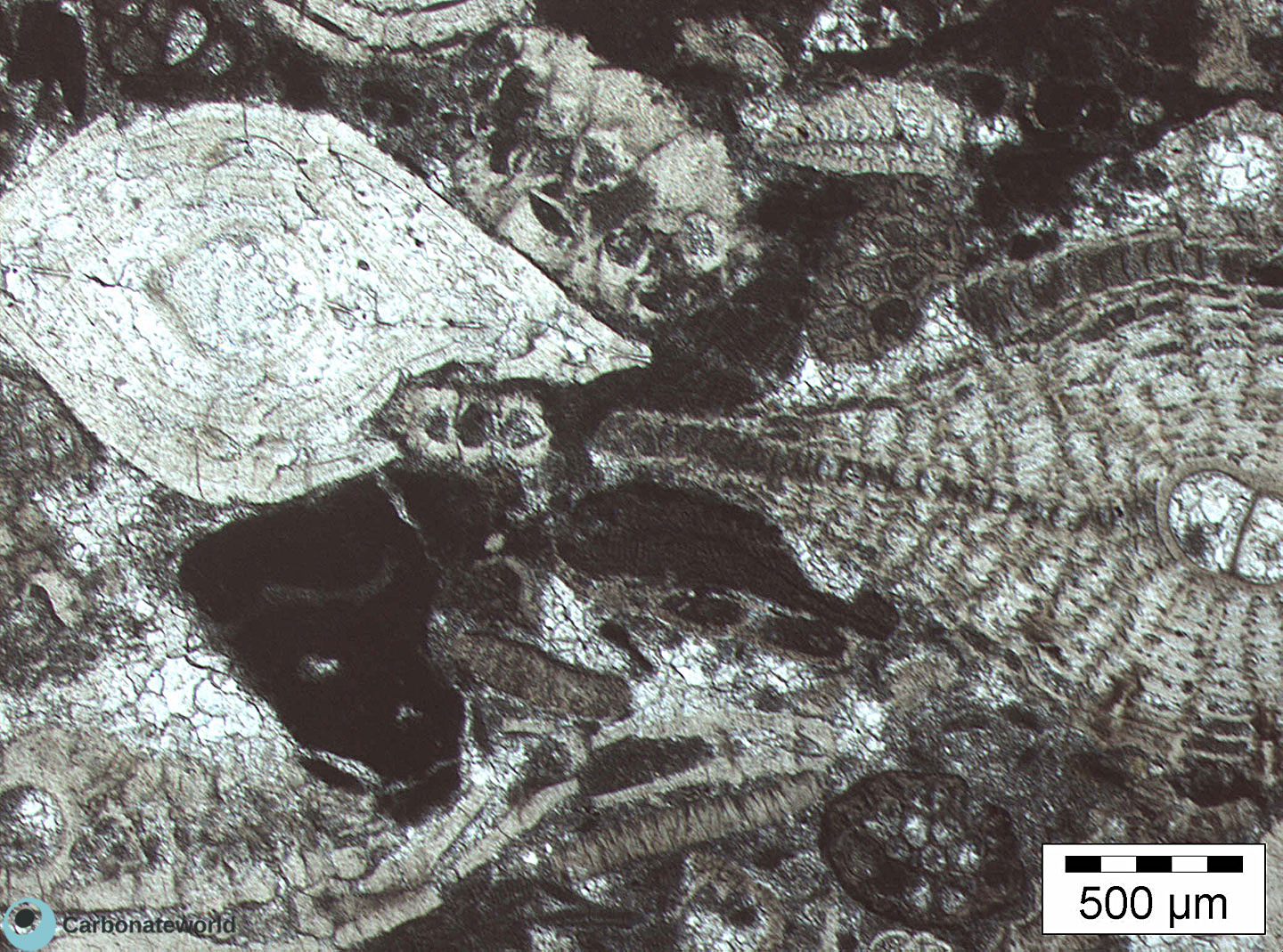

Concave-convex grain contact

Drusy sparite
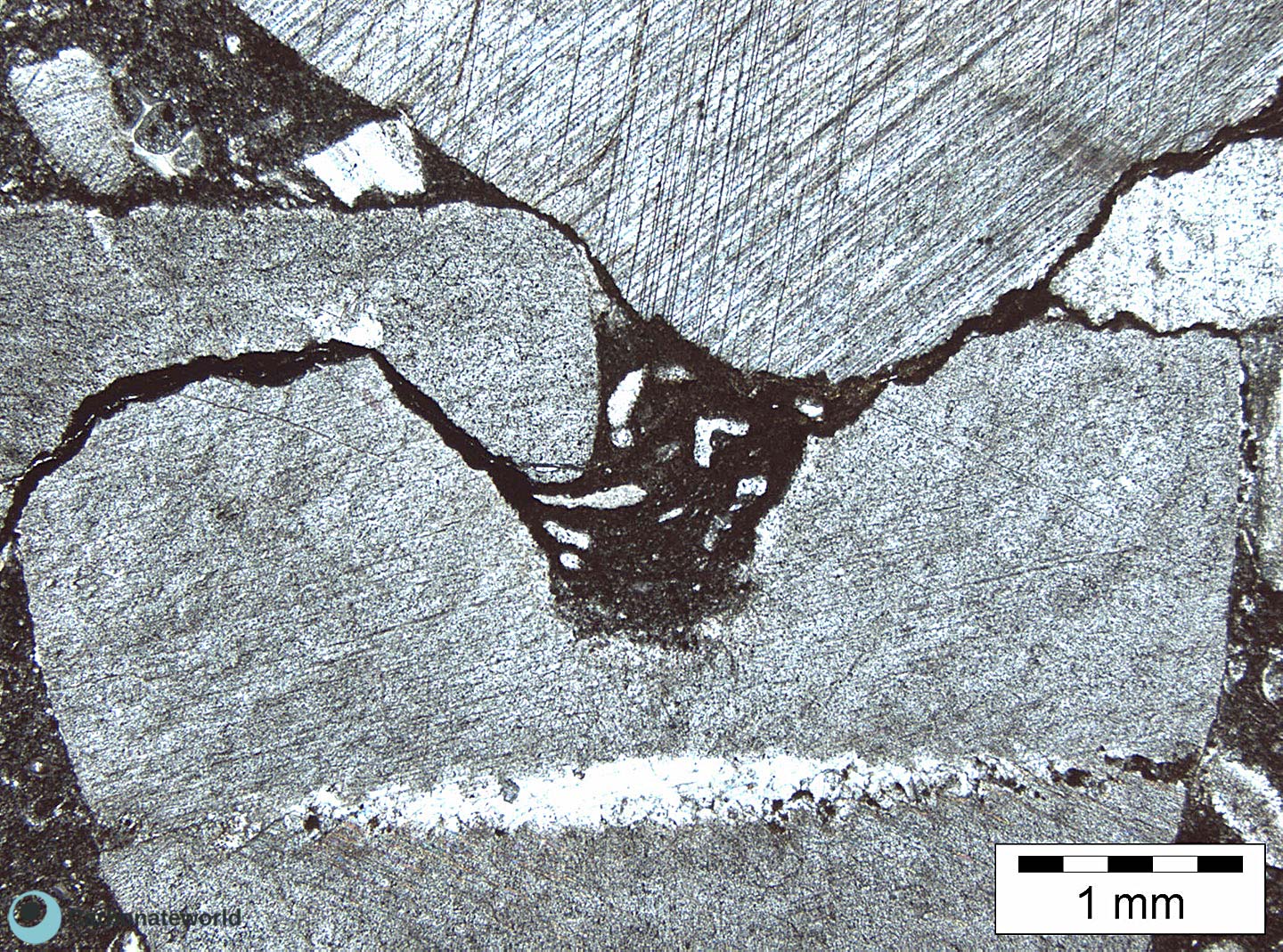

Sutured grain contact
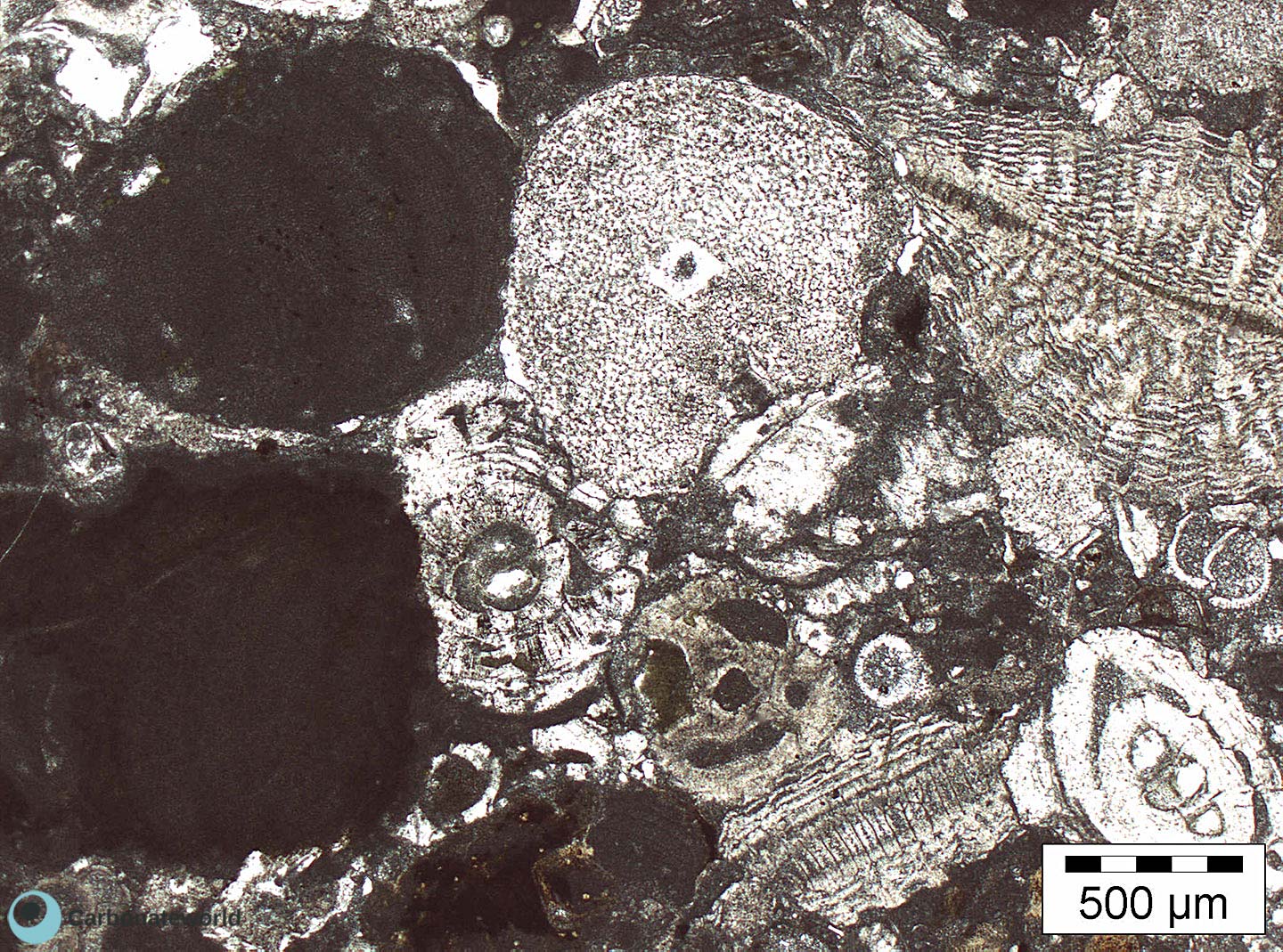

Sutured grain contact
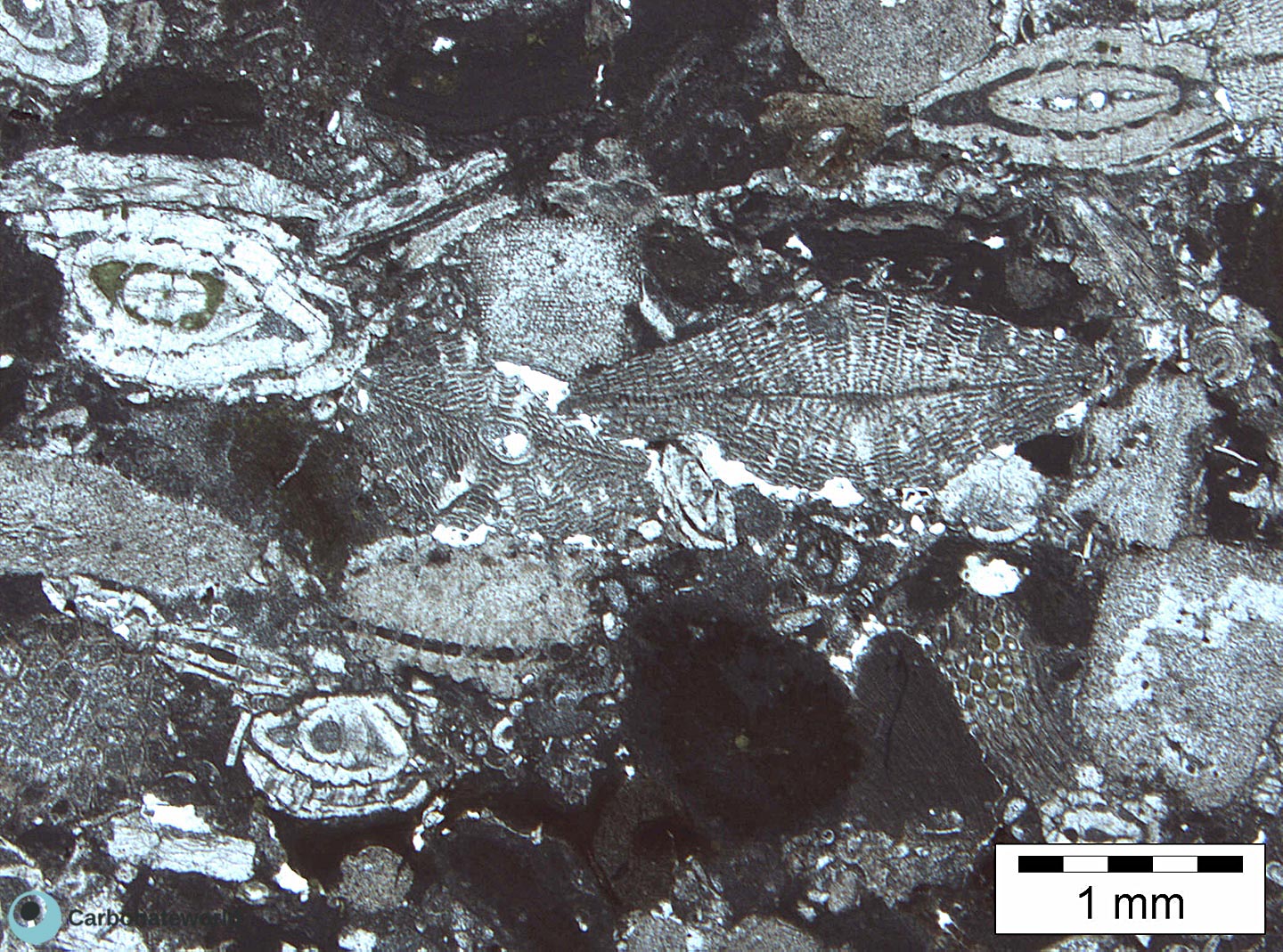

Concave-convex grain contact
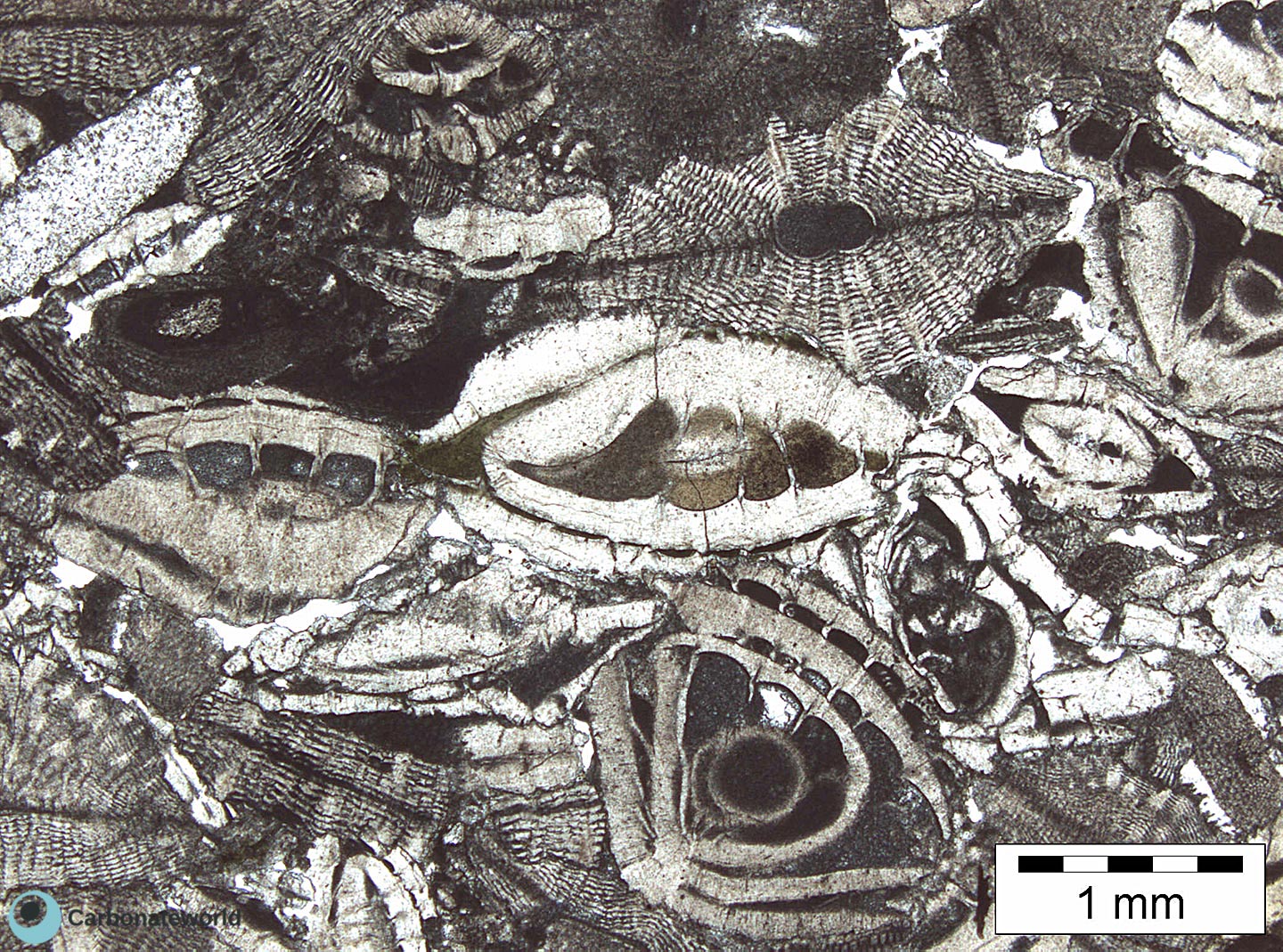

Sutured grain contacts
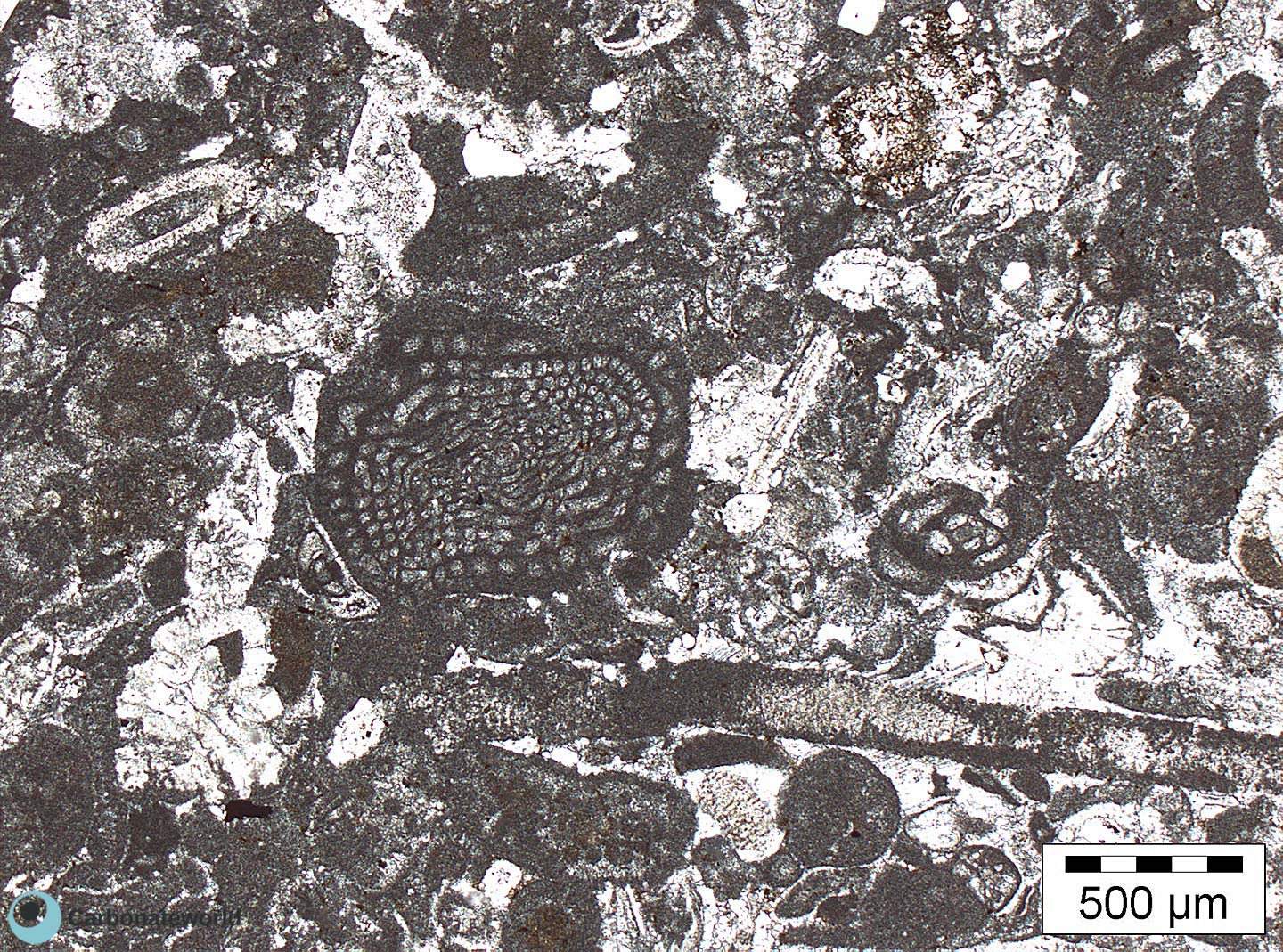

Deformed alveolinid
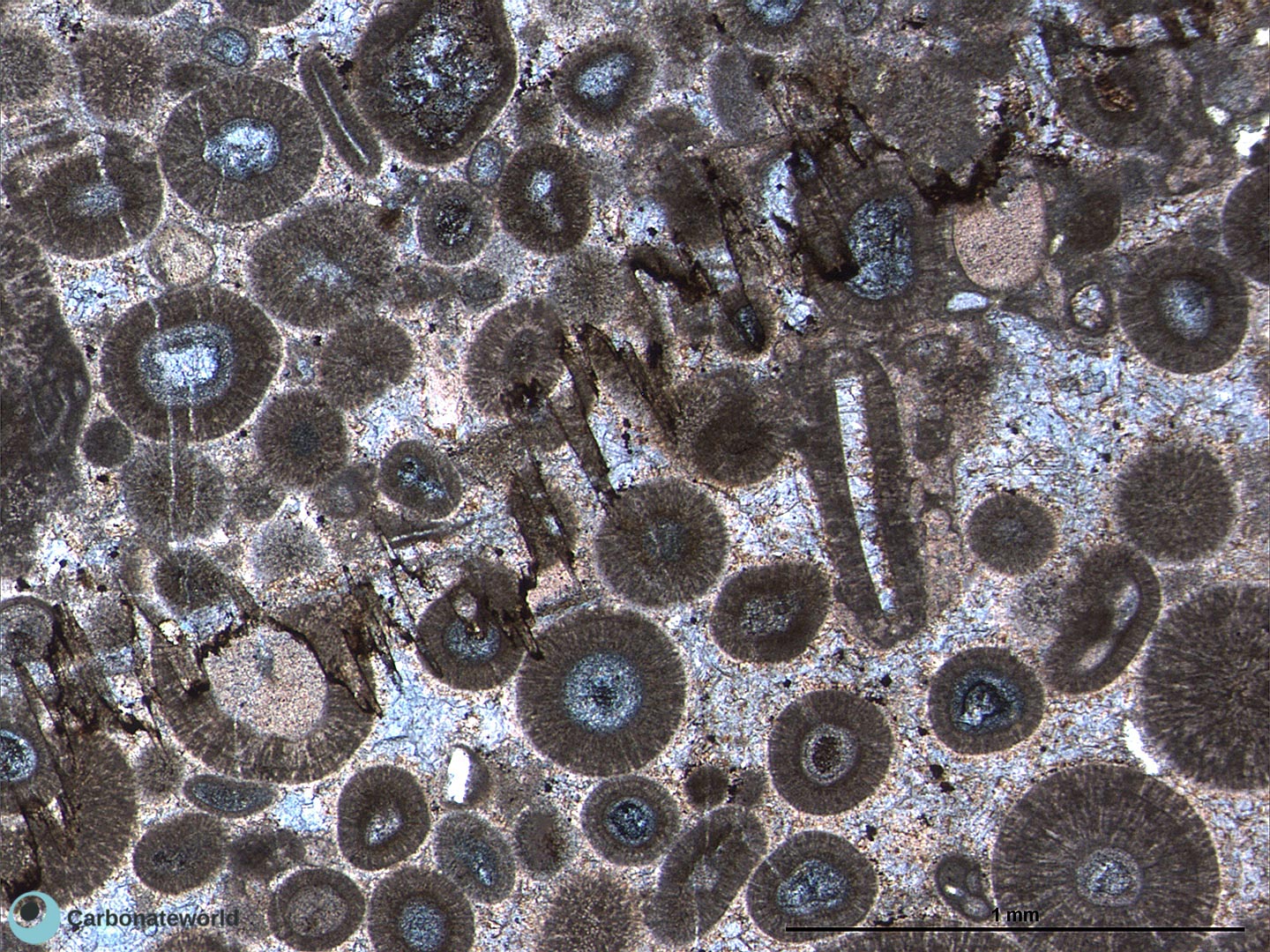

Stylolite

Blocky ferroan calcite
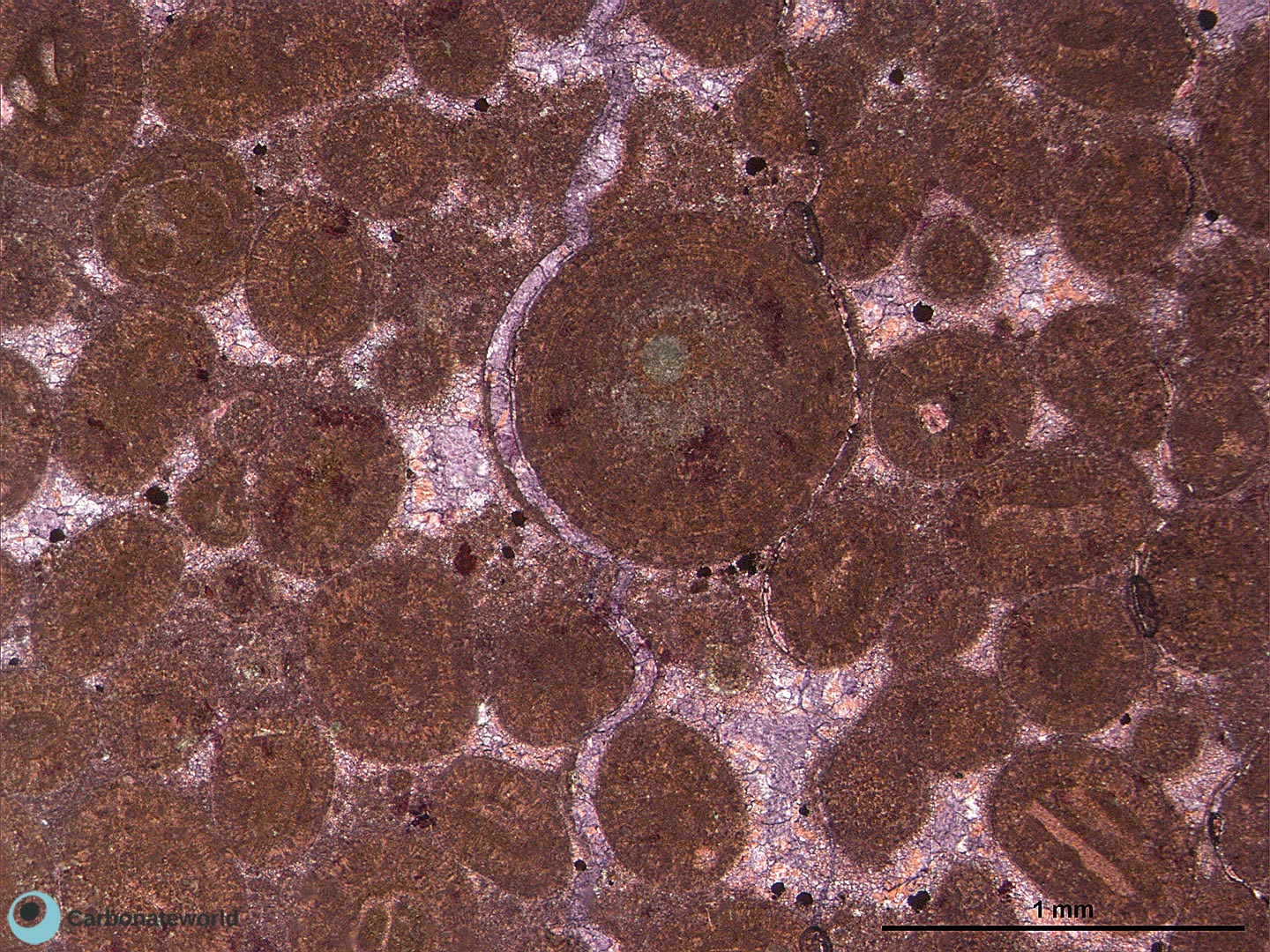

Ferroan calcite spar
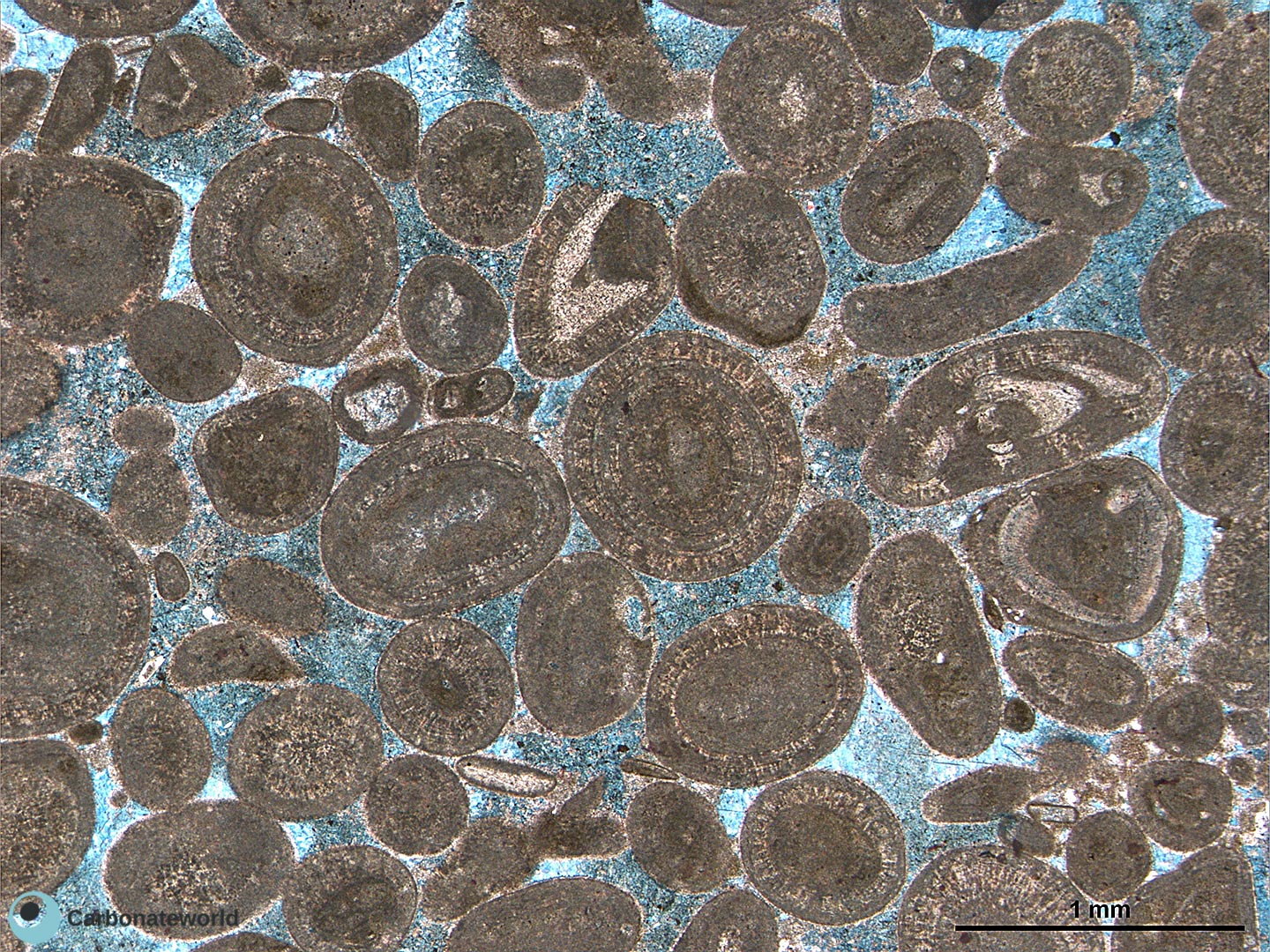

Poikilotopic ferroan calcite spar
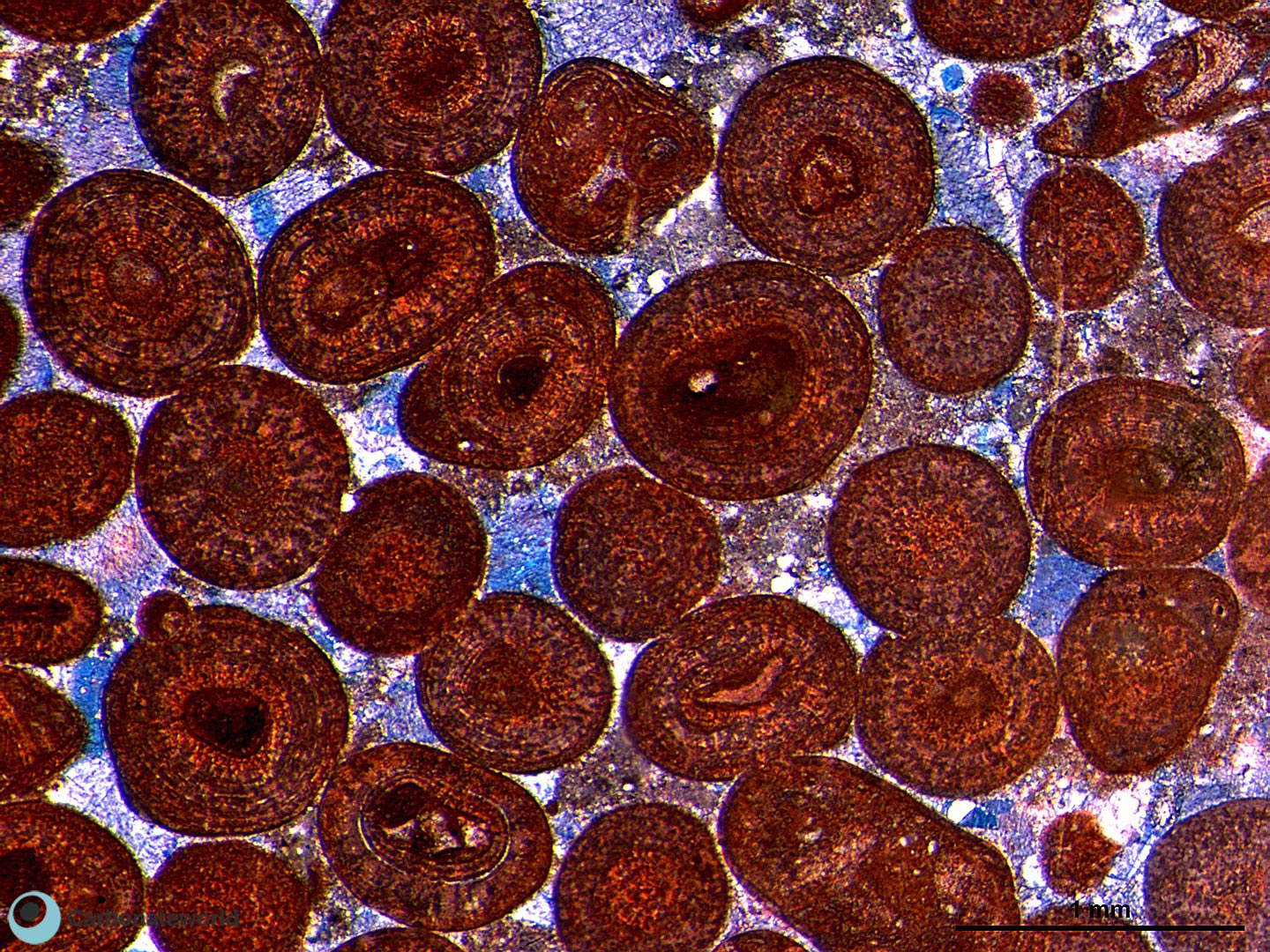

Ferroan calcite spar
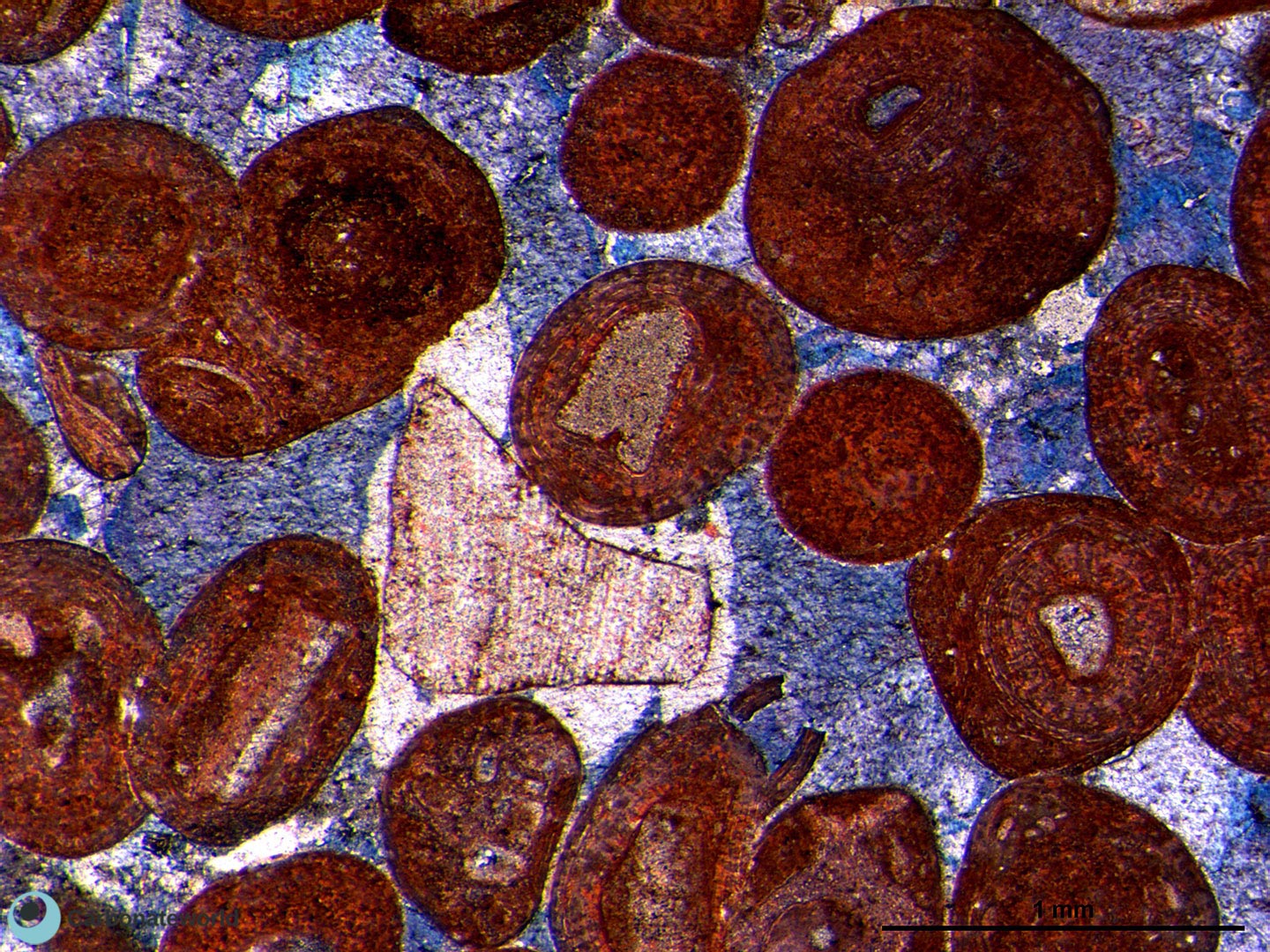

Ferroan calcite spar

Non ferroan syntaxial cement
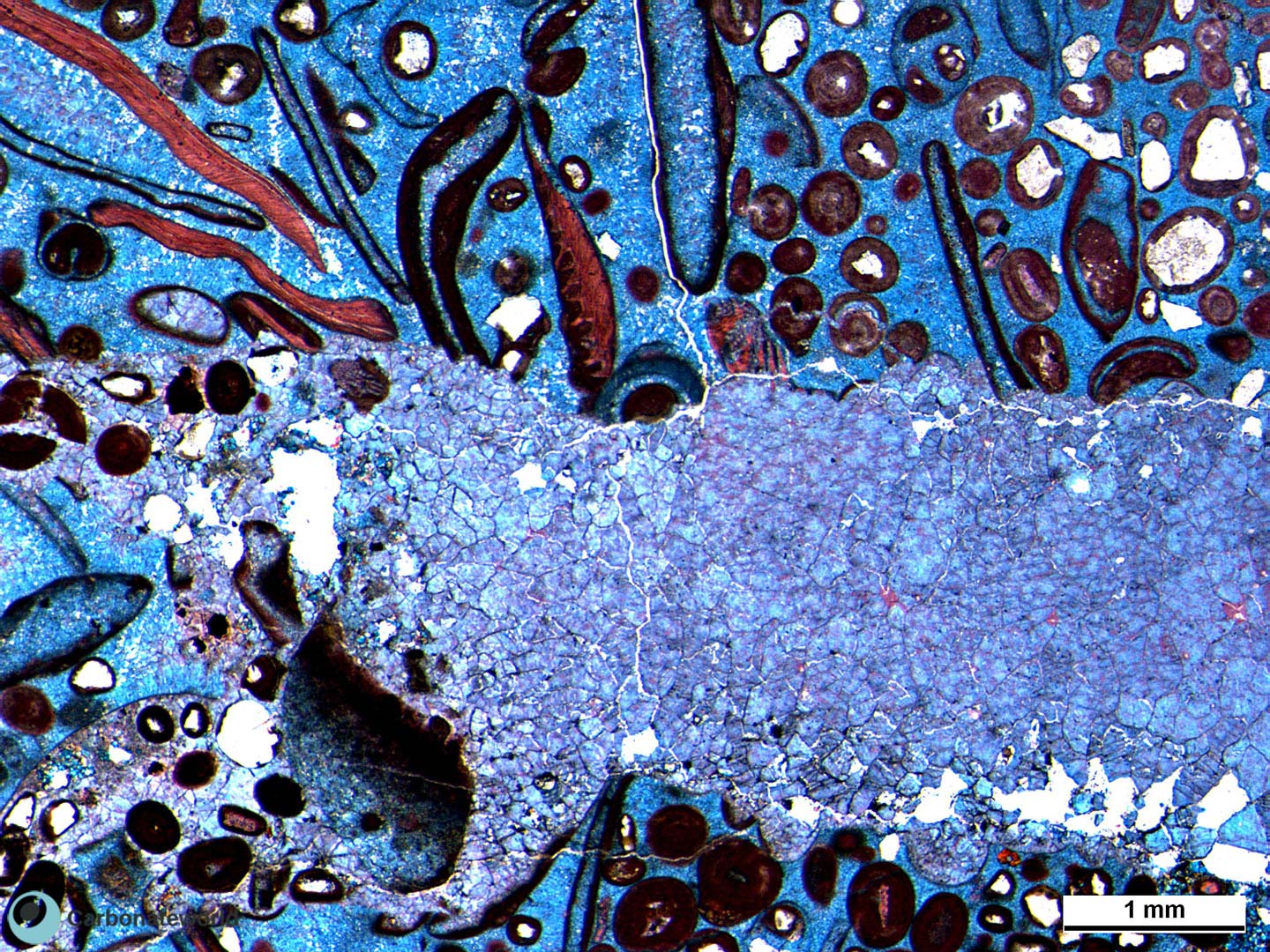

Ferroan calcite spar in fracture
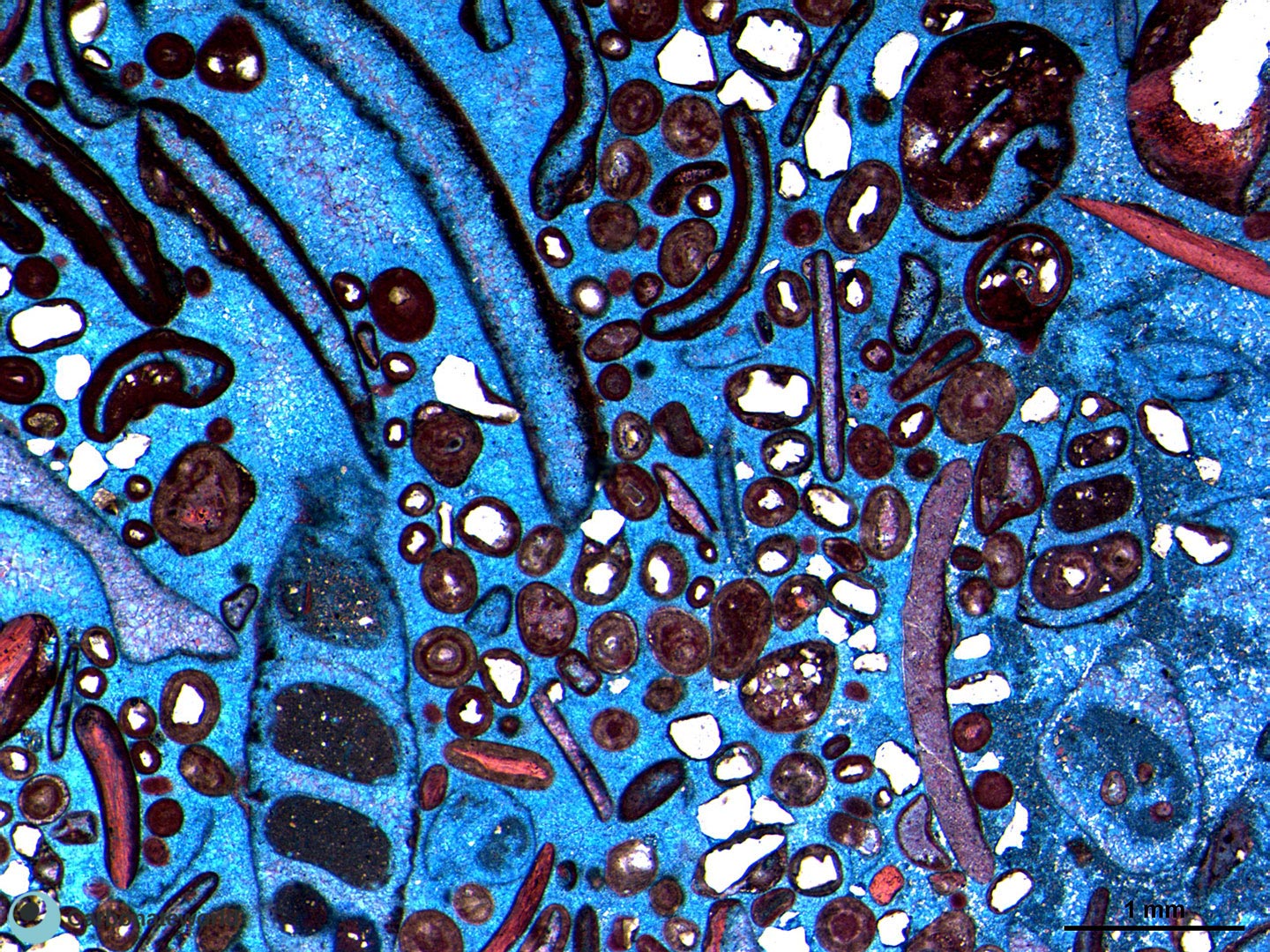

Ferroan calcite

Coated quartz grain
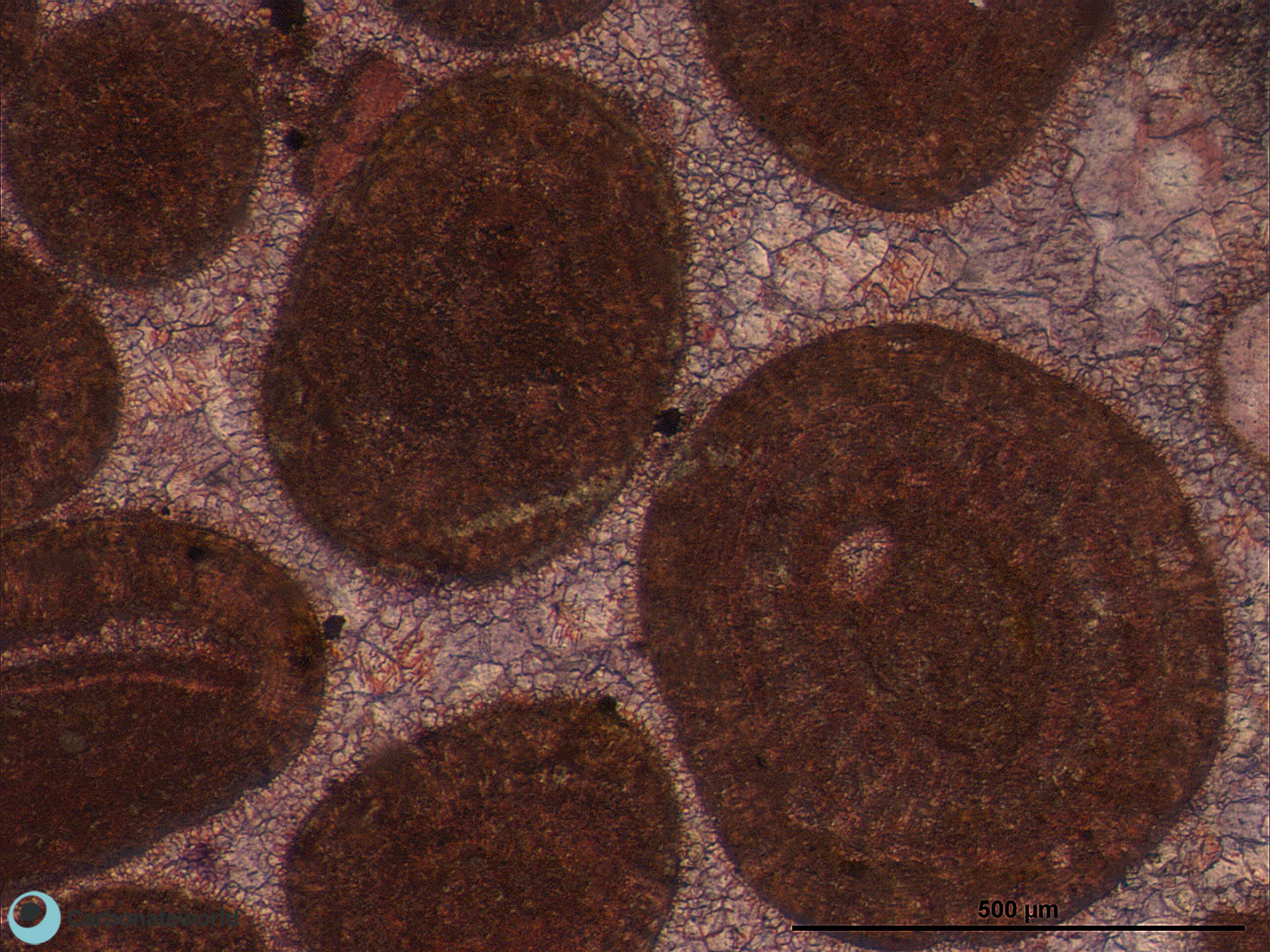

Pink isopachous rims

Equant blocky sparite
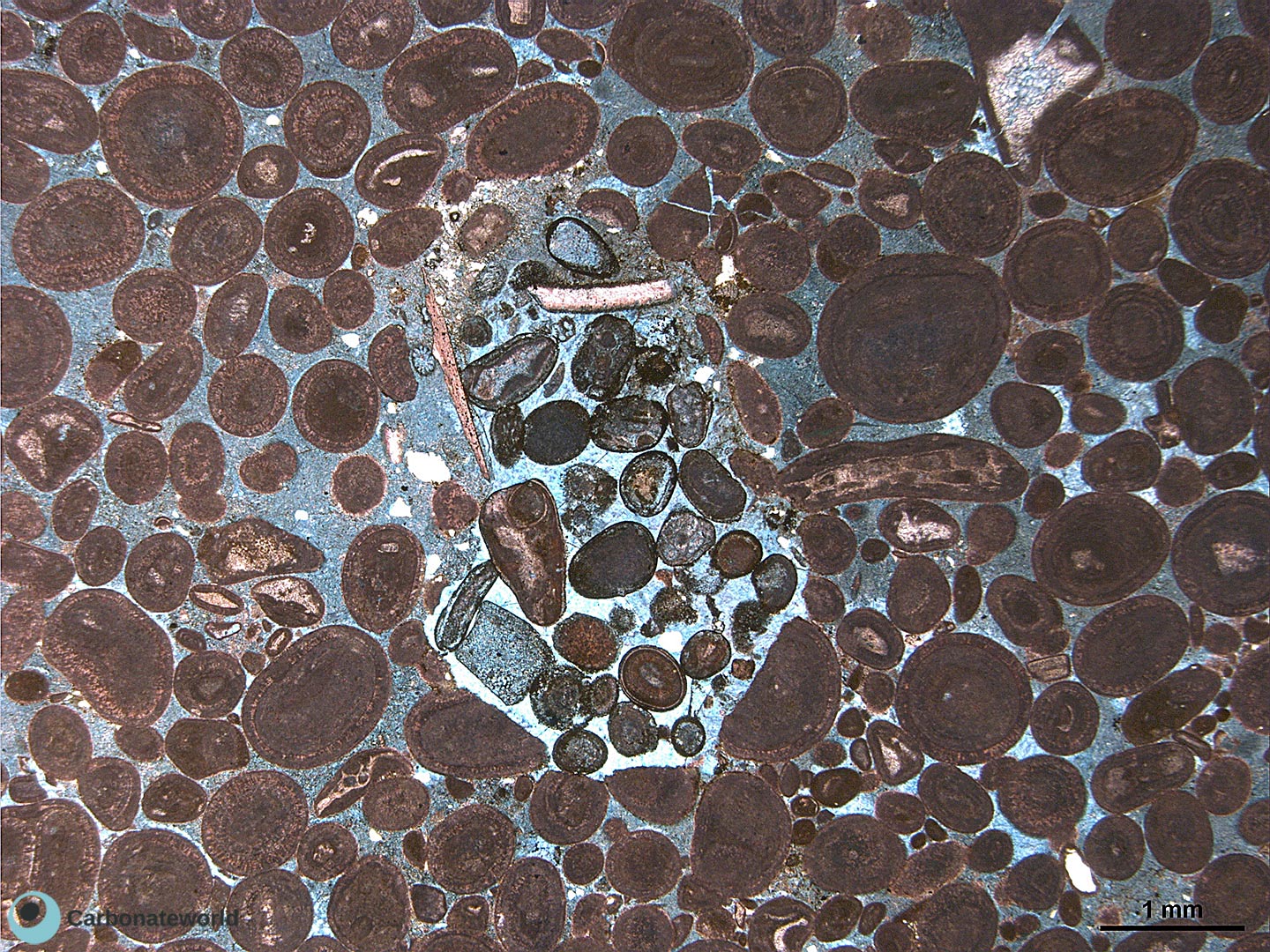

Poikilotopic ferroan calcite
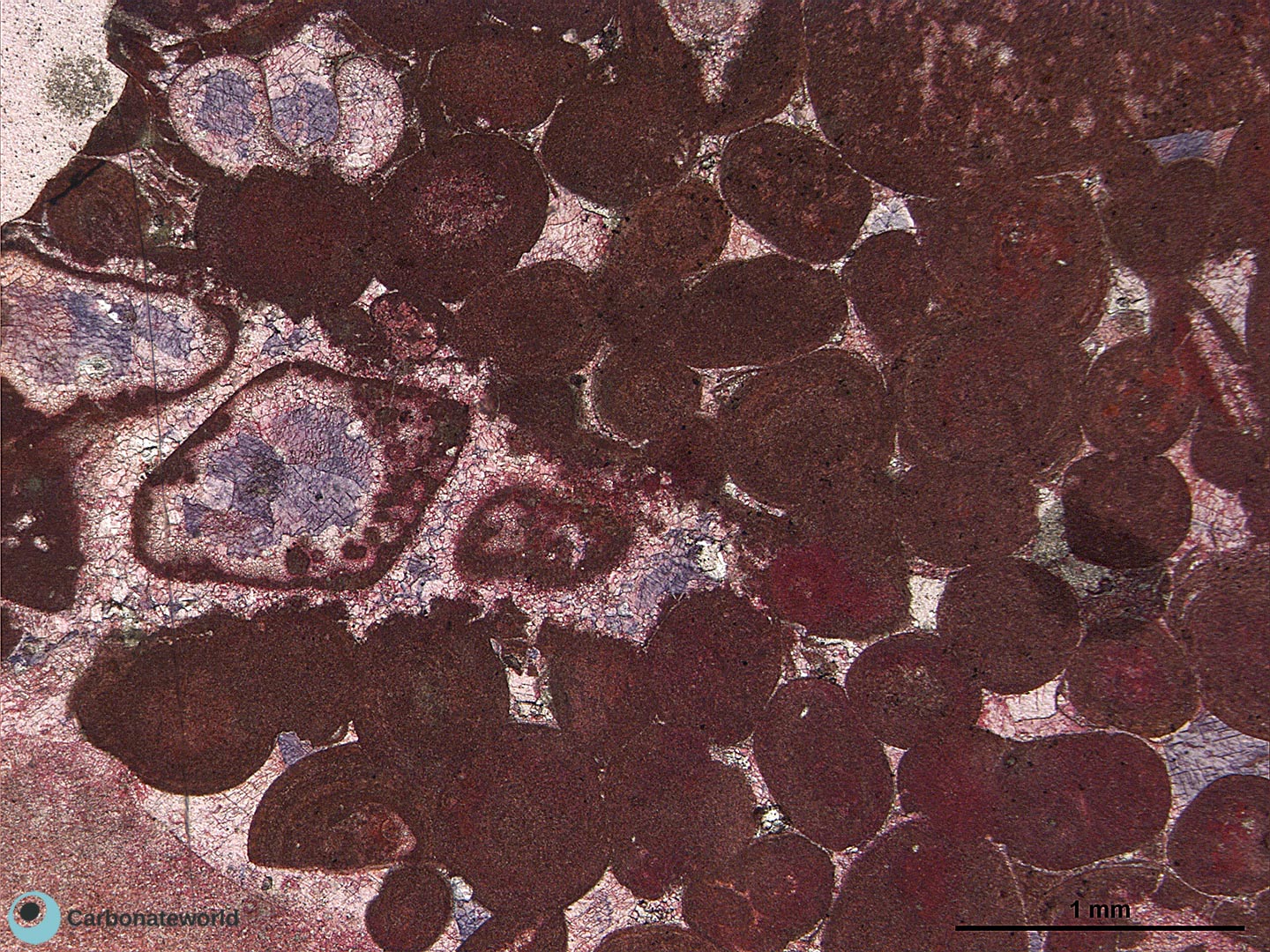

Concave-convex grain contact

Ferroan calcite
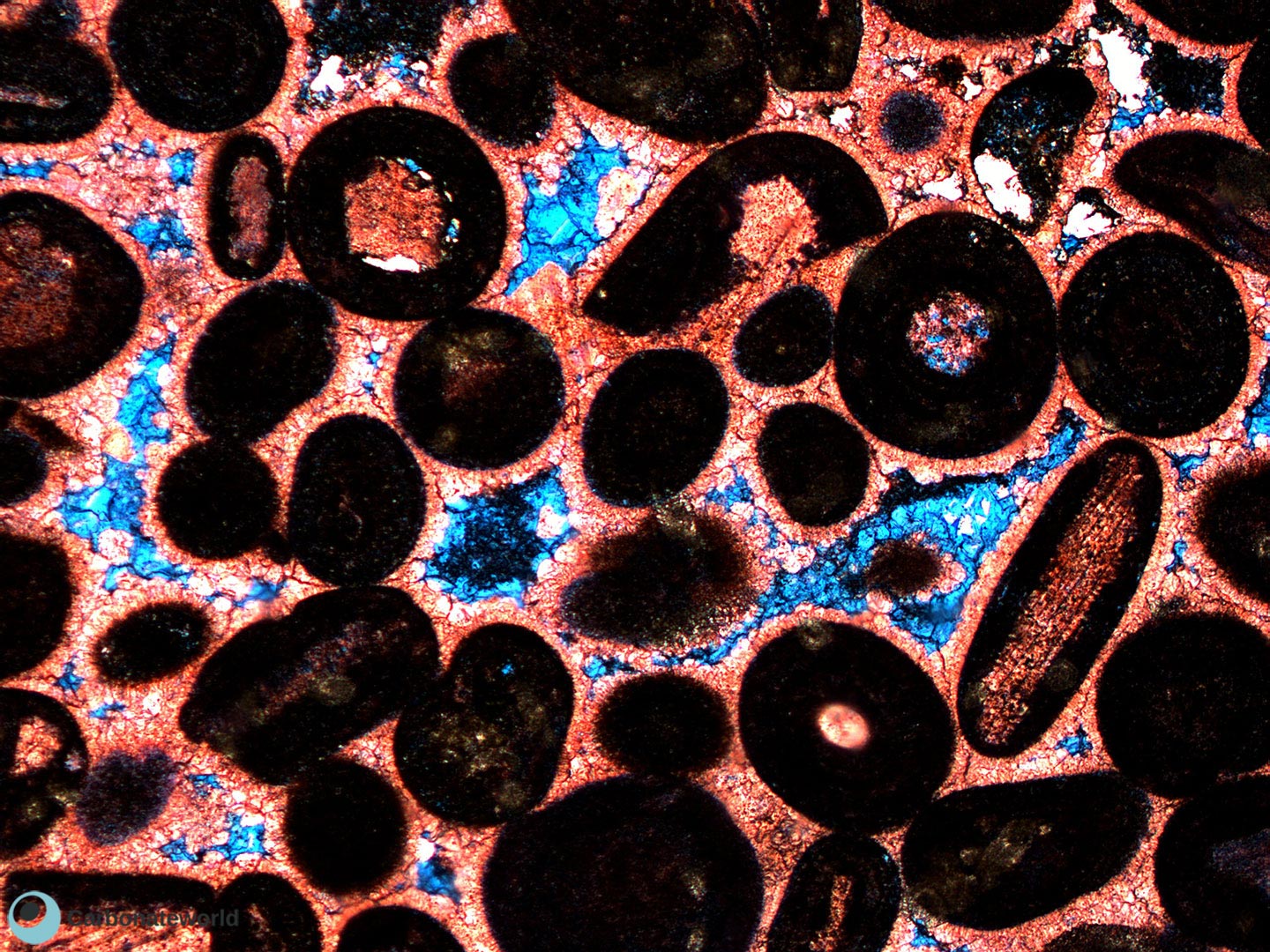

Isopachous rims of equant non ferroan calcite

Ferroan calcite cement
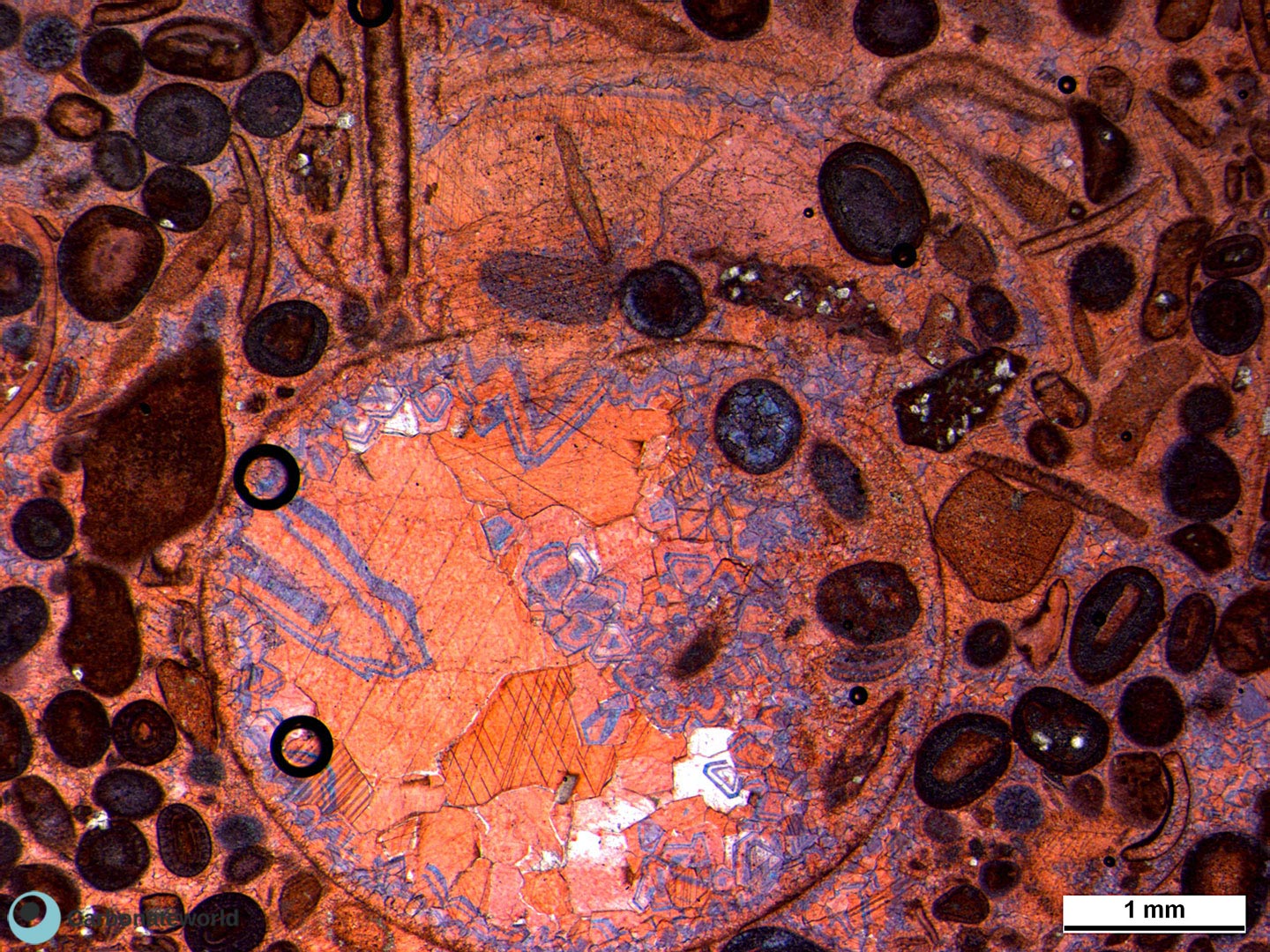
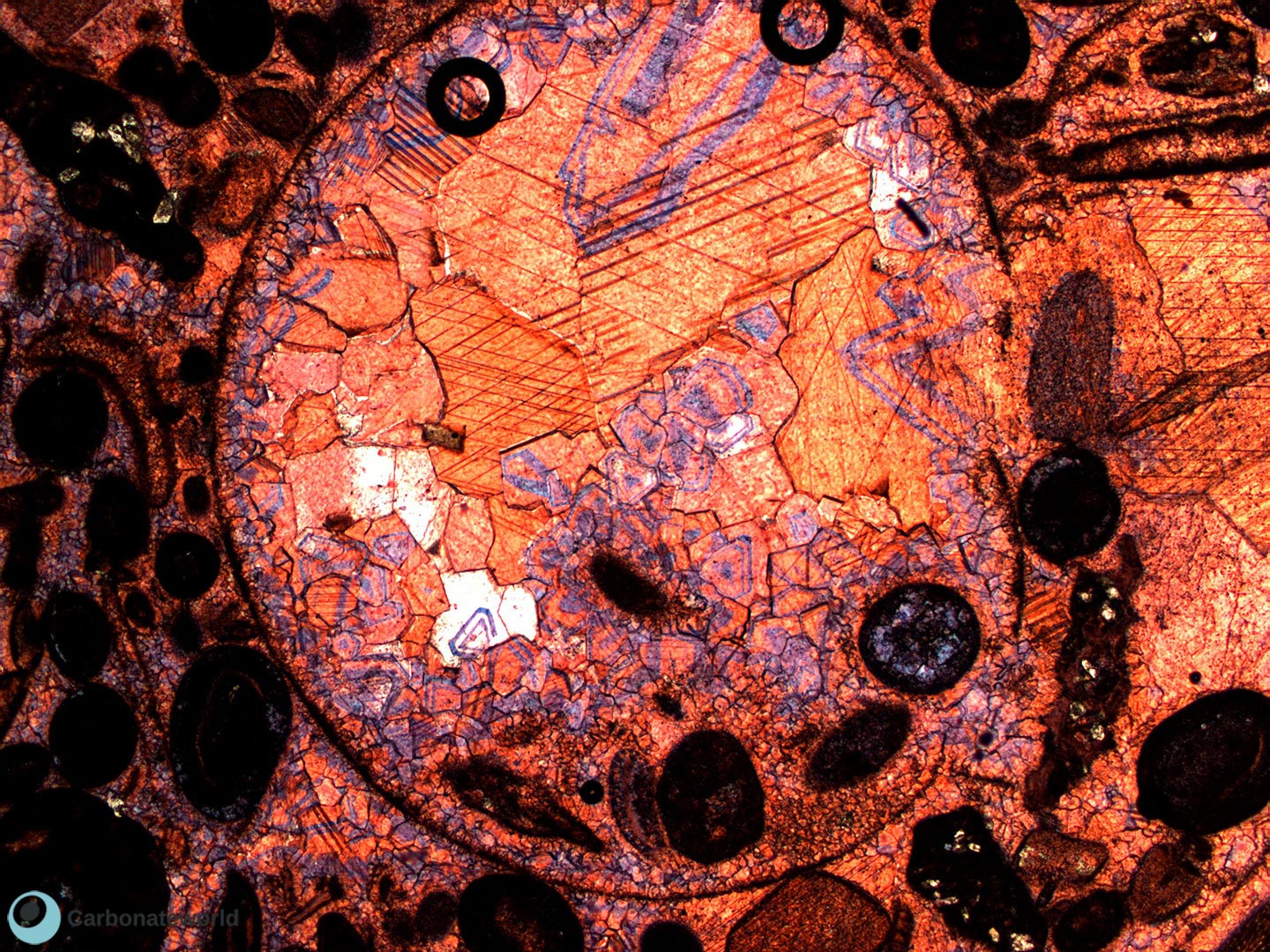
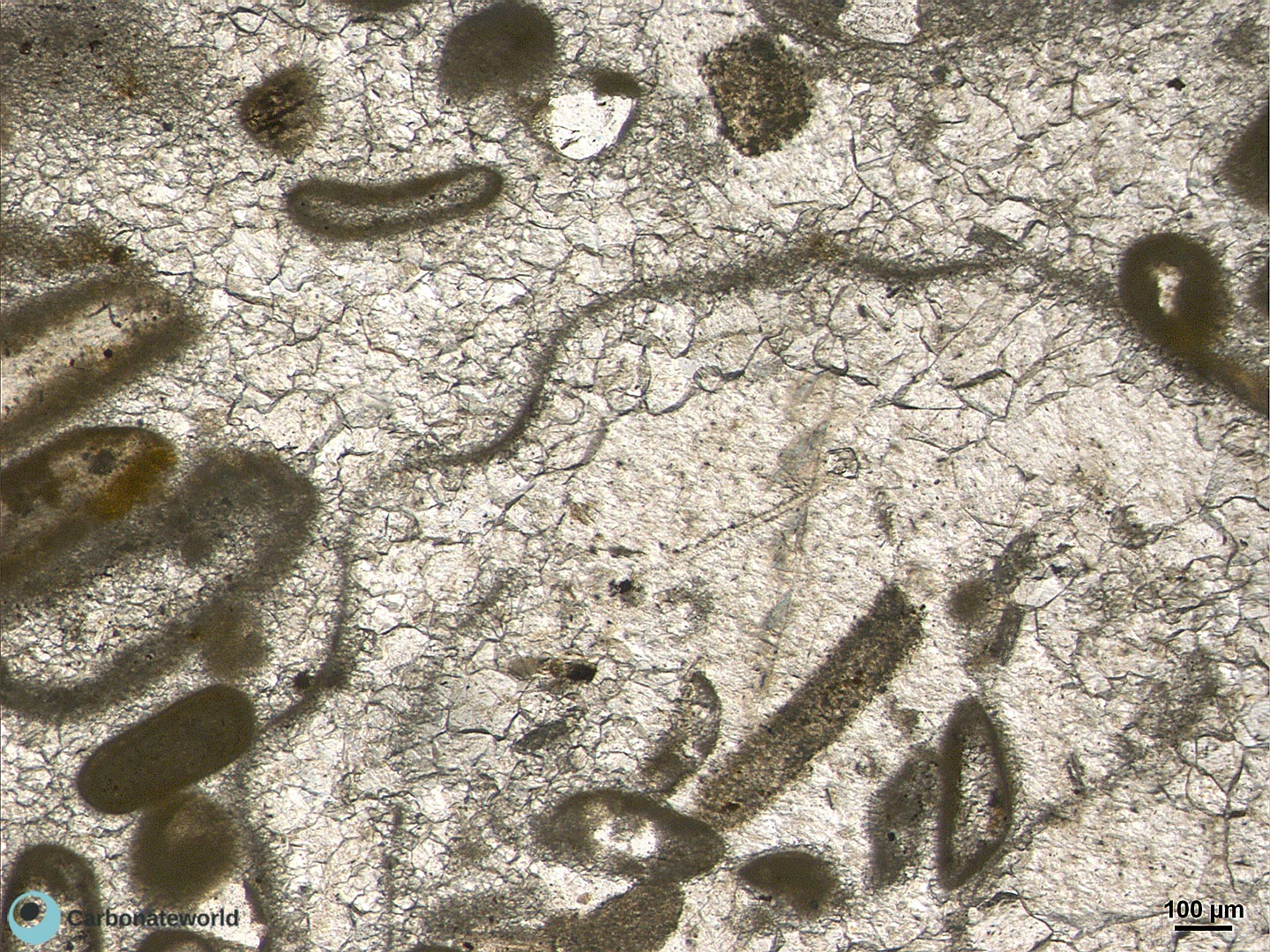

Drusy calcite
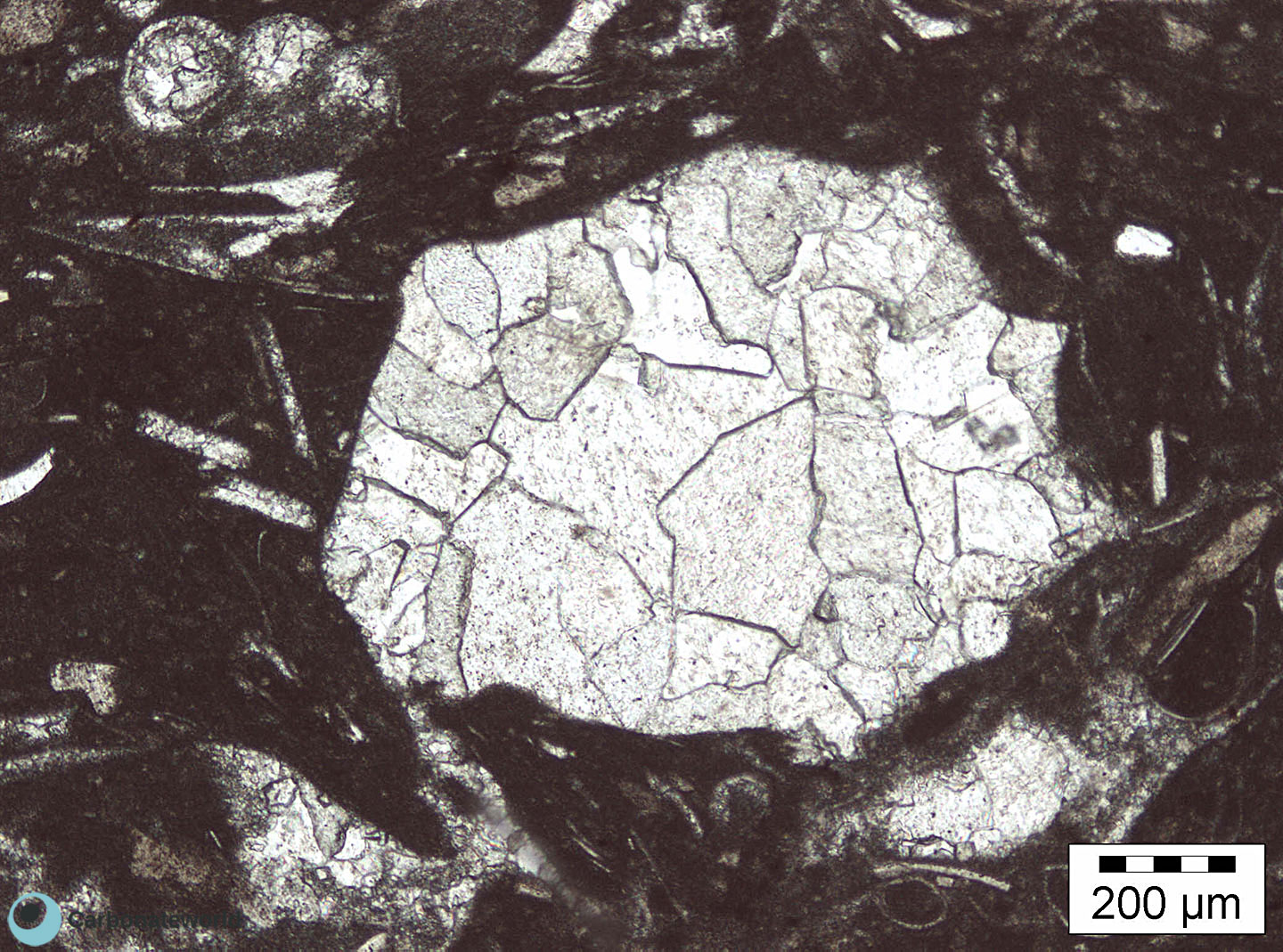

Drusy calcite
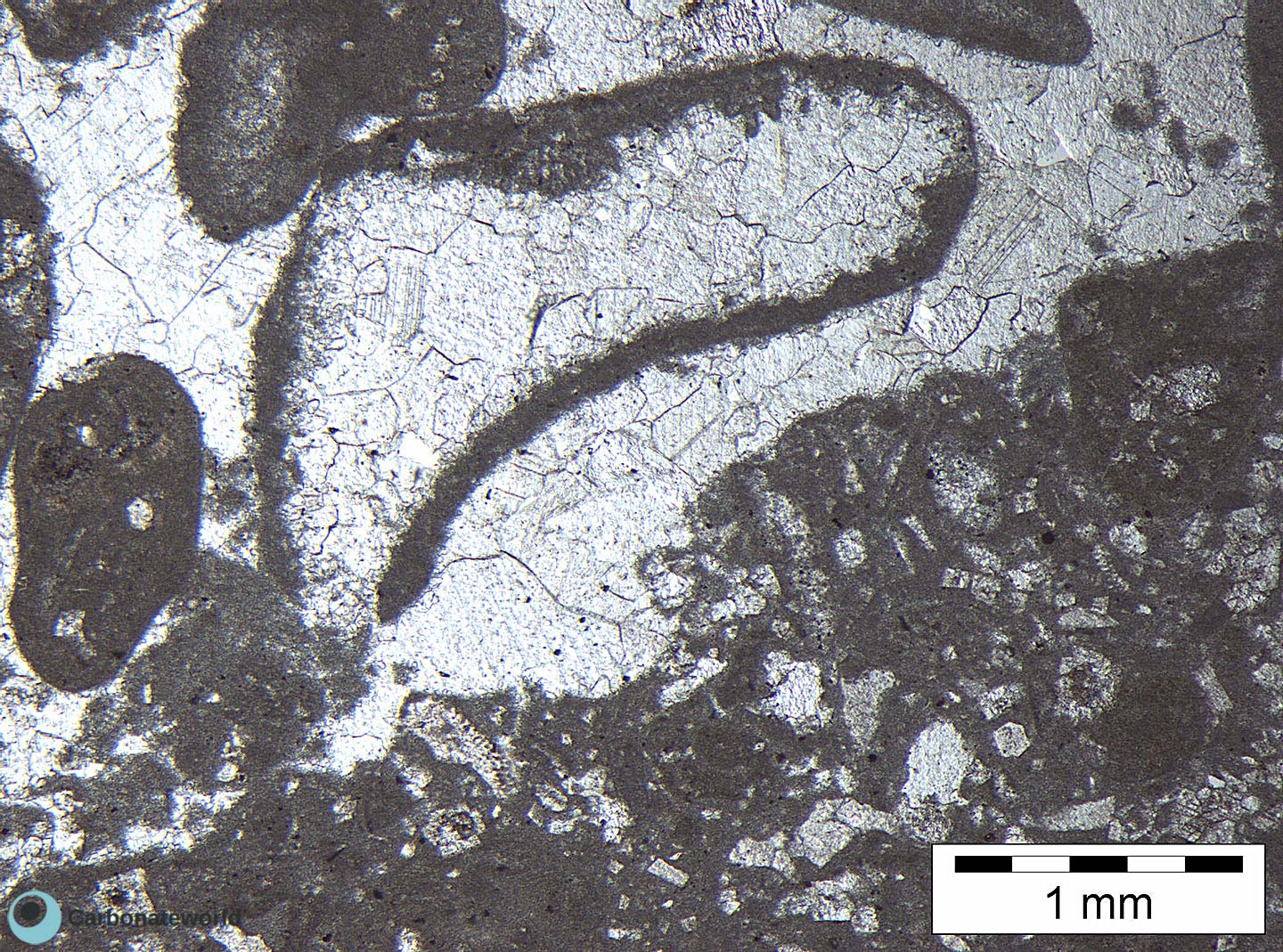

Drusy calcite
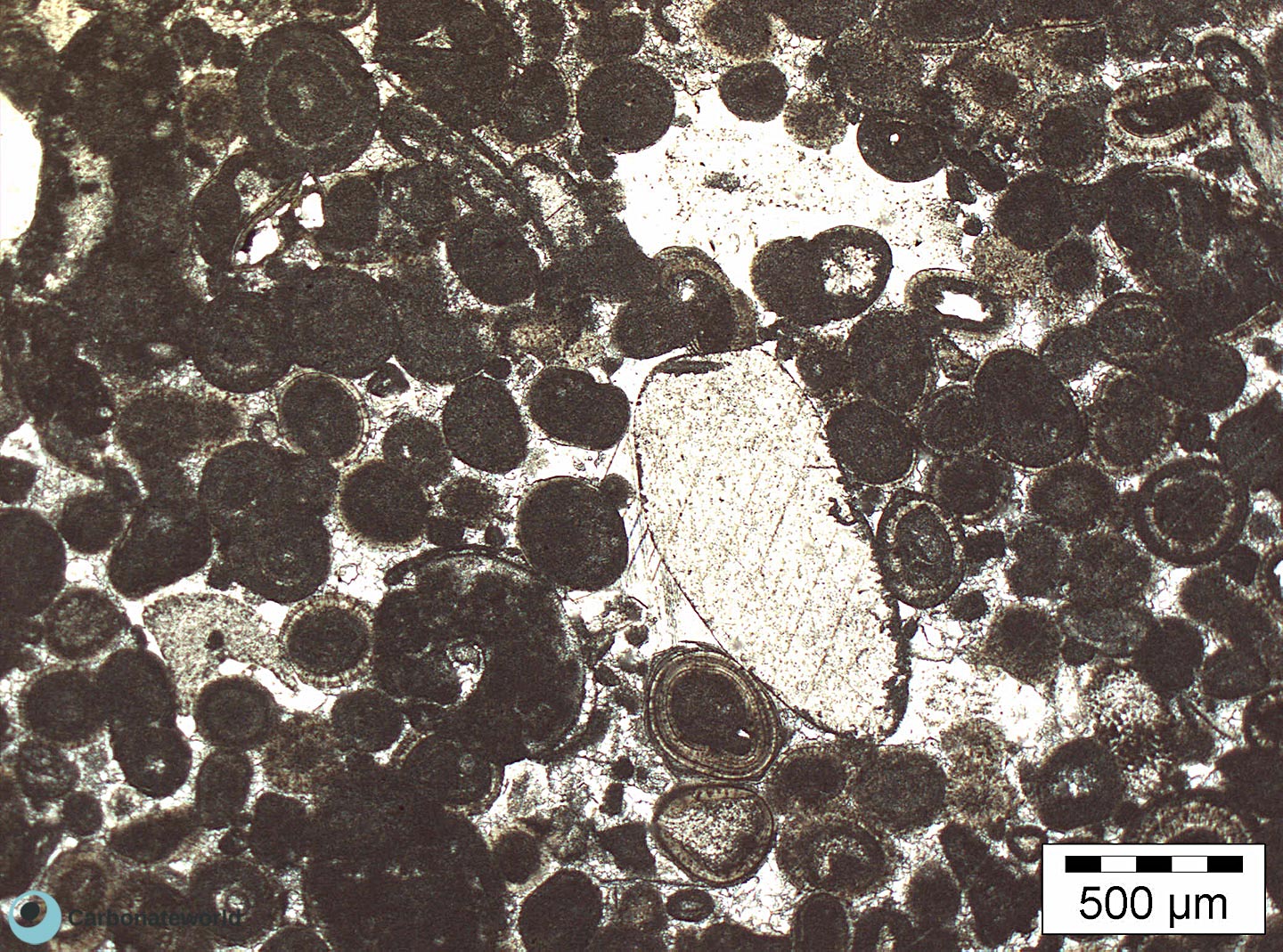

Syntaxial cement on crinoid
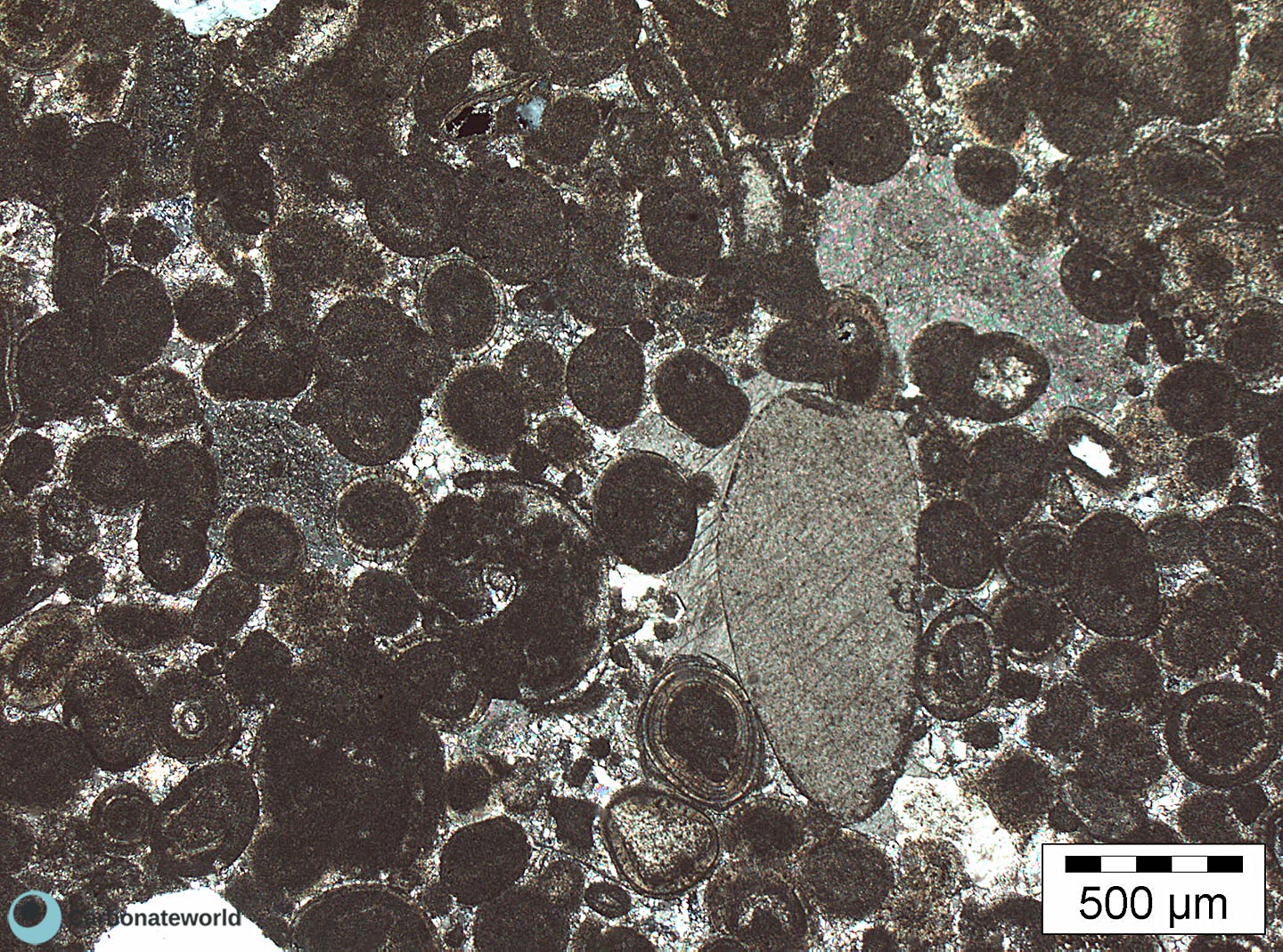

Syntaxial cement on crinoid
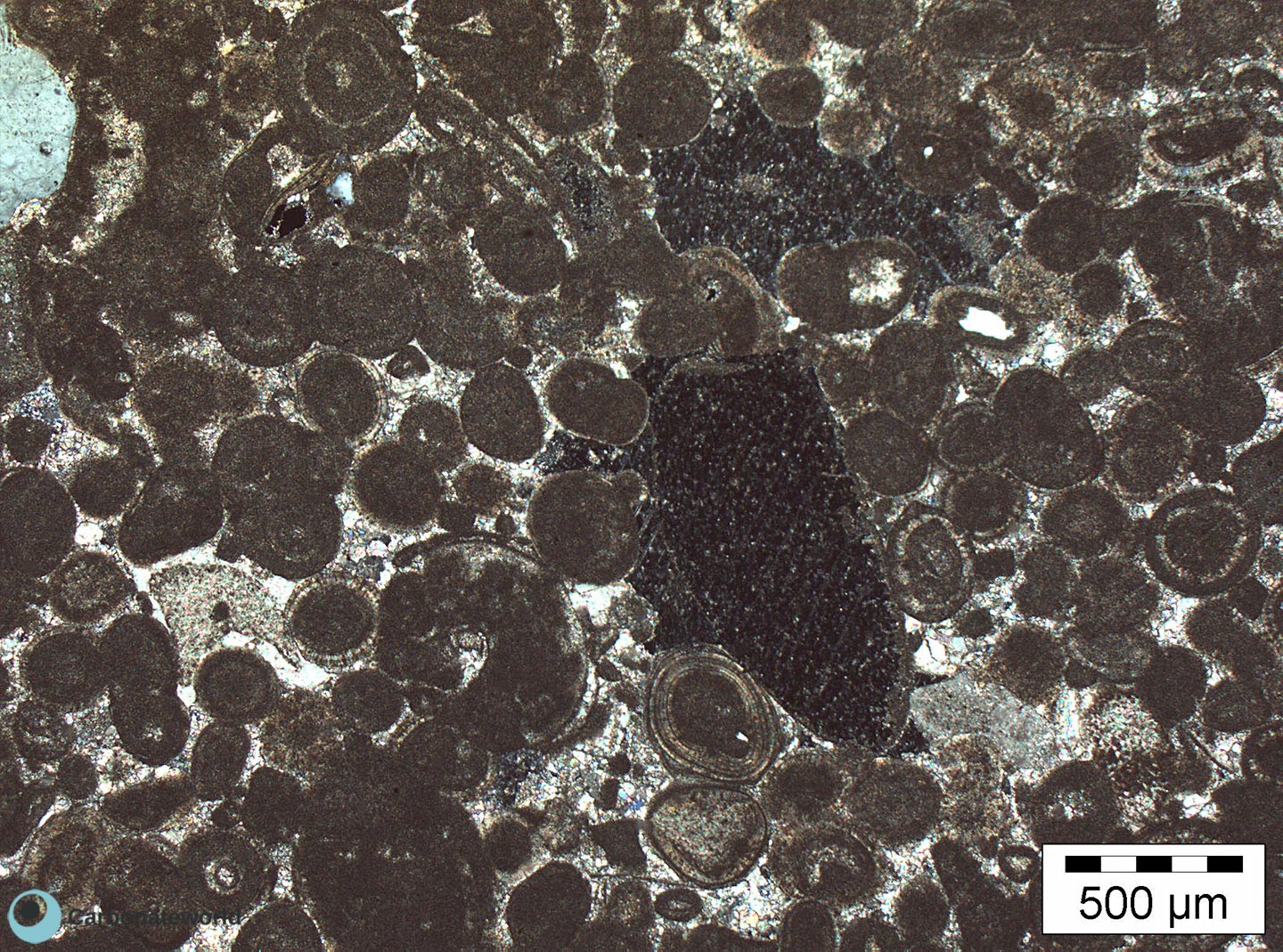

Syntaxial cement on crinoid
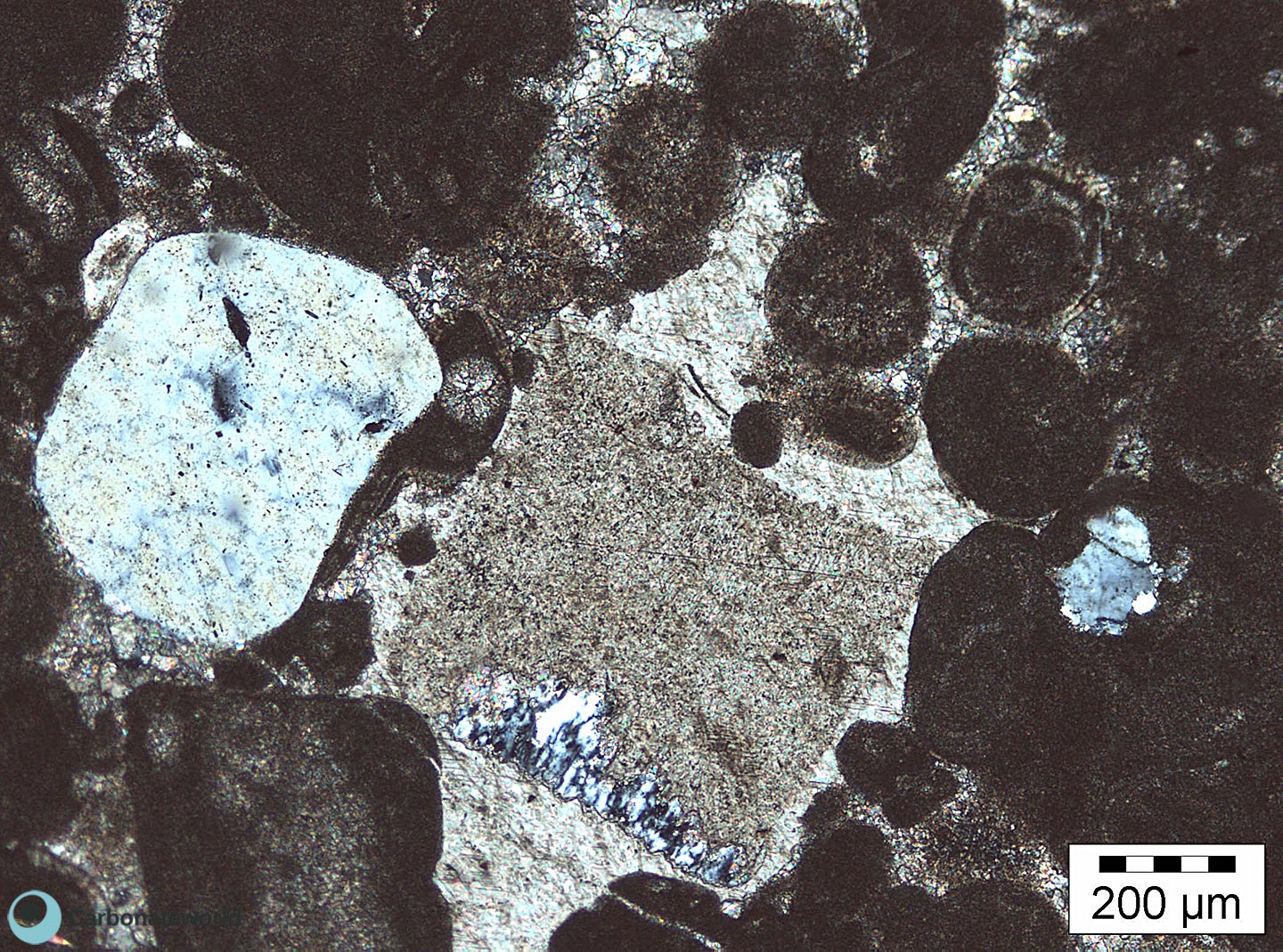

Silicification
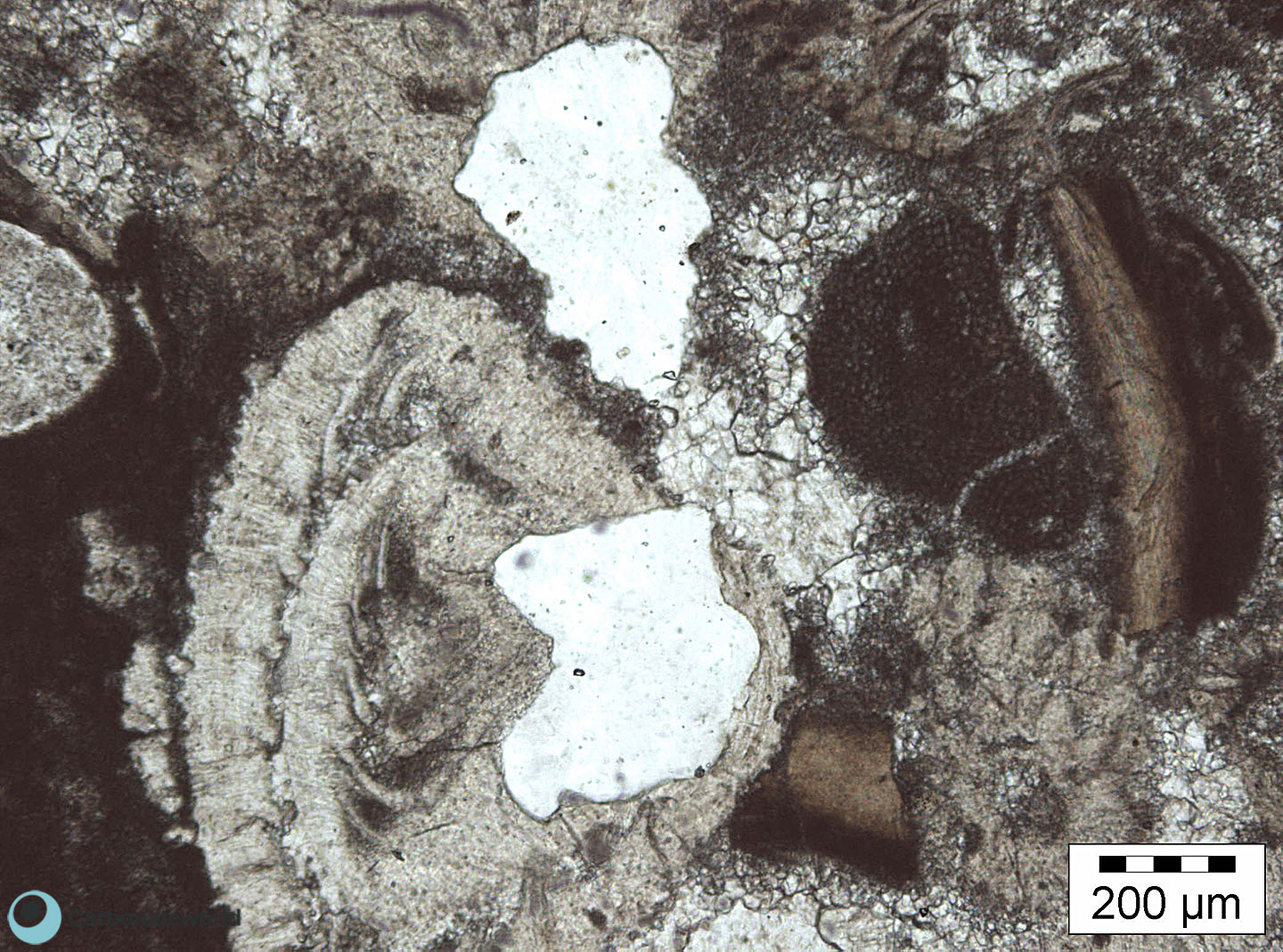

Silicification
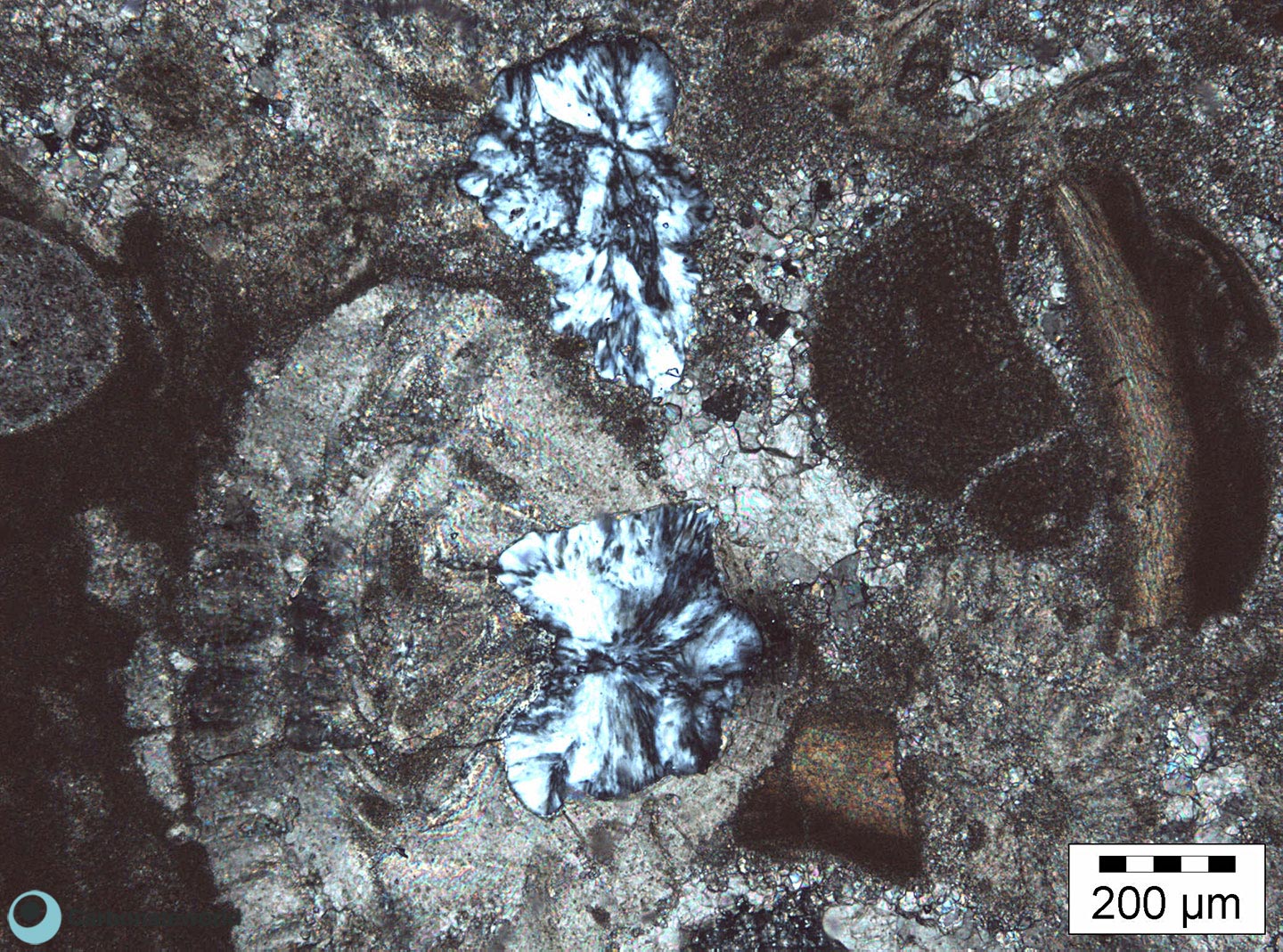

Chalcedony
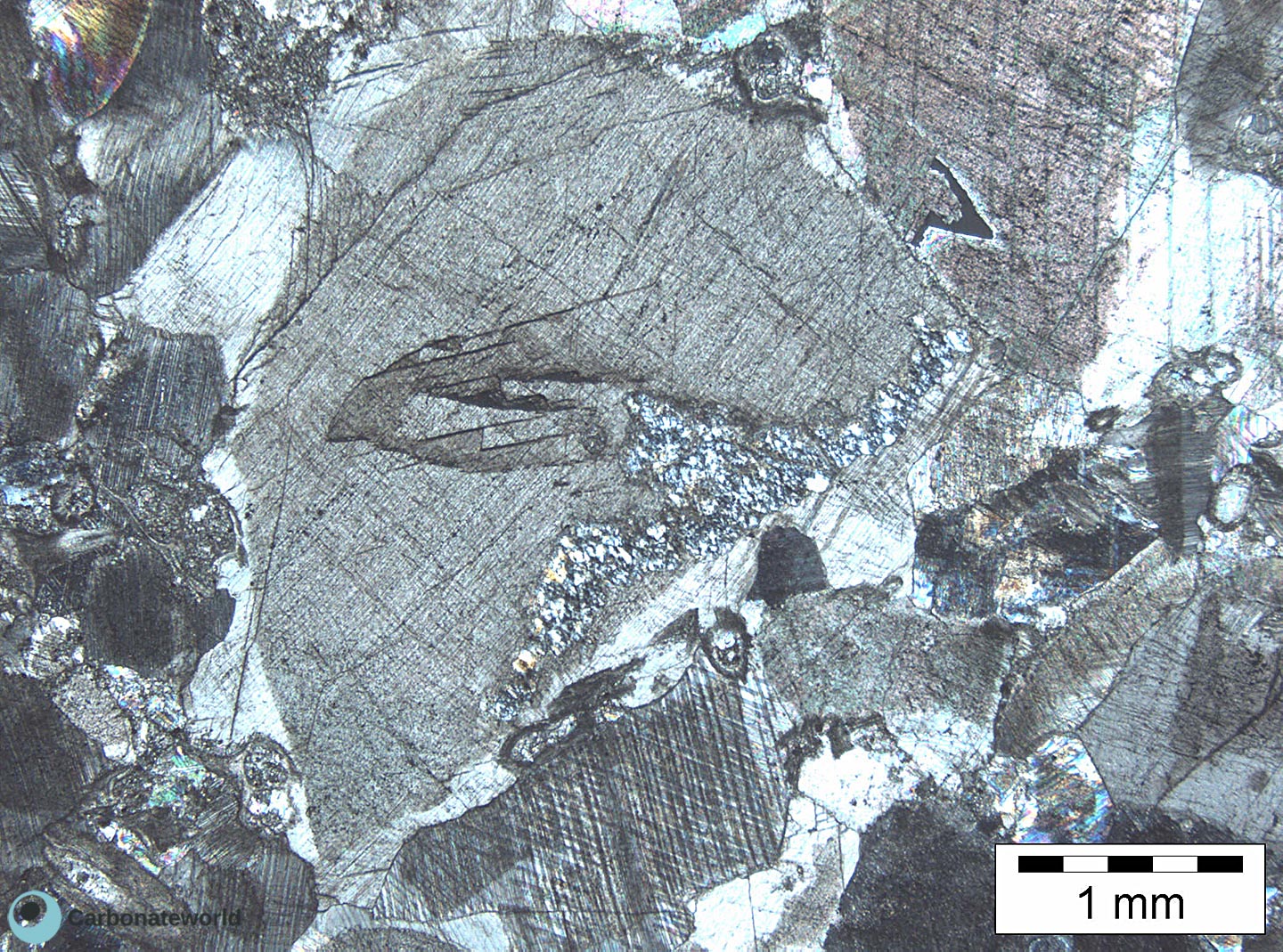

Silicification
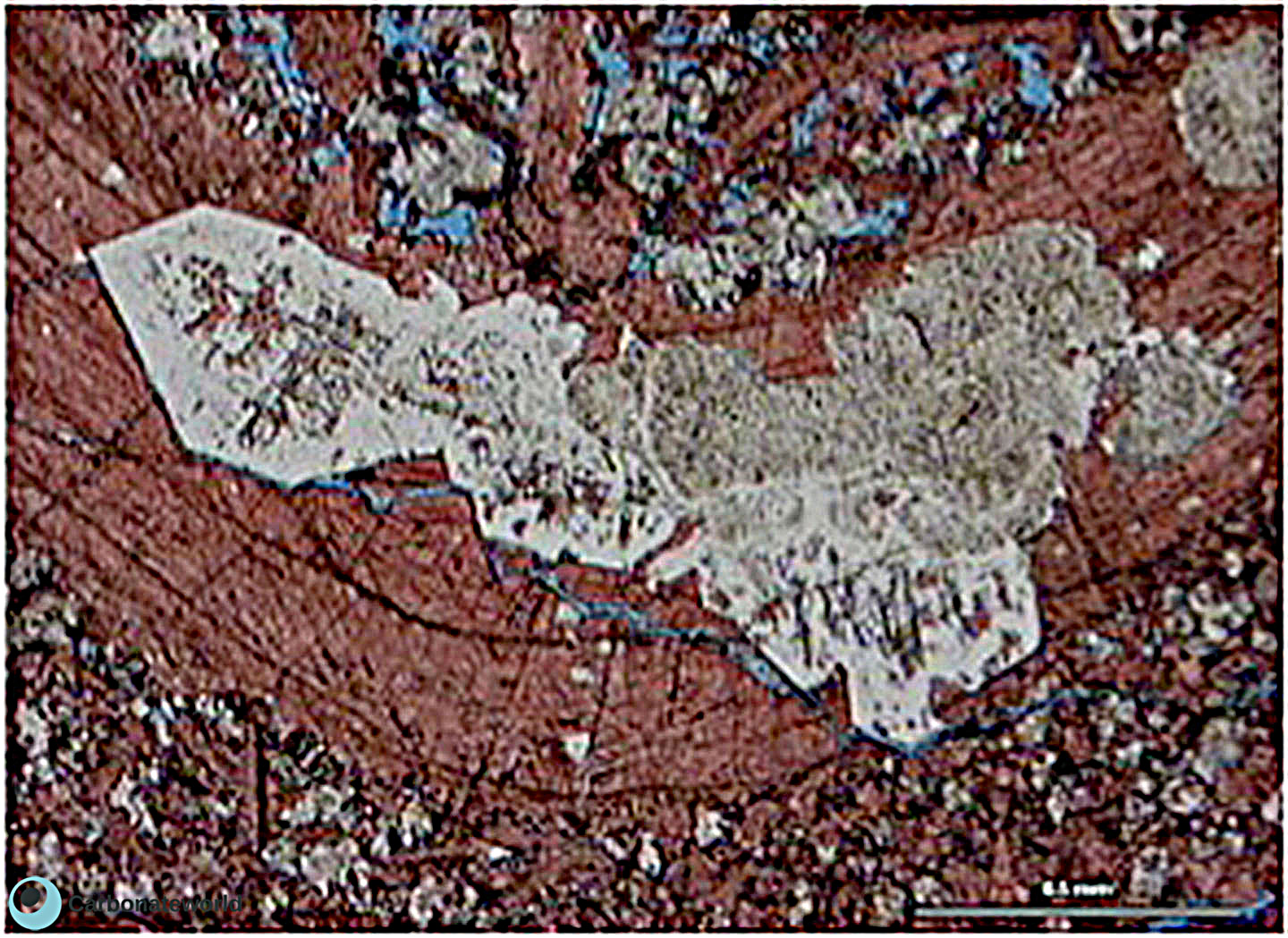

Rudist shell

Quartz
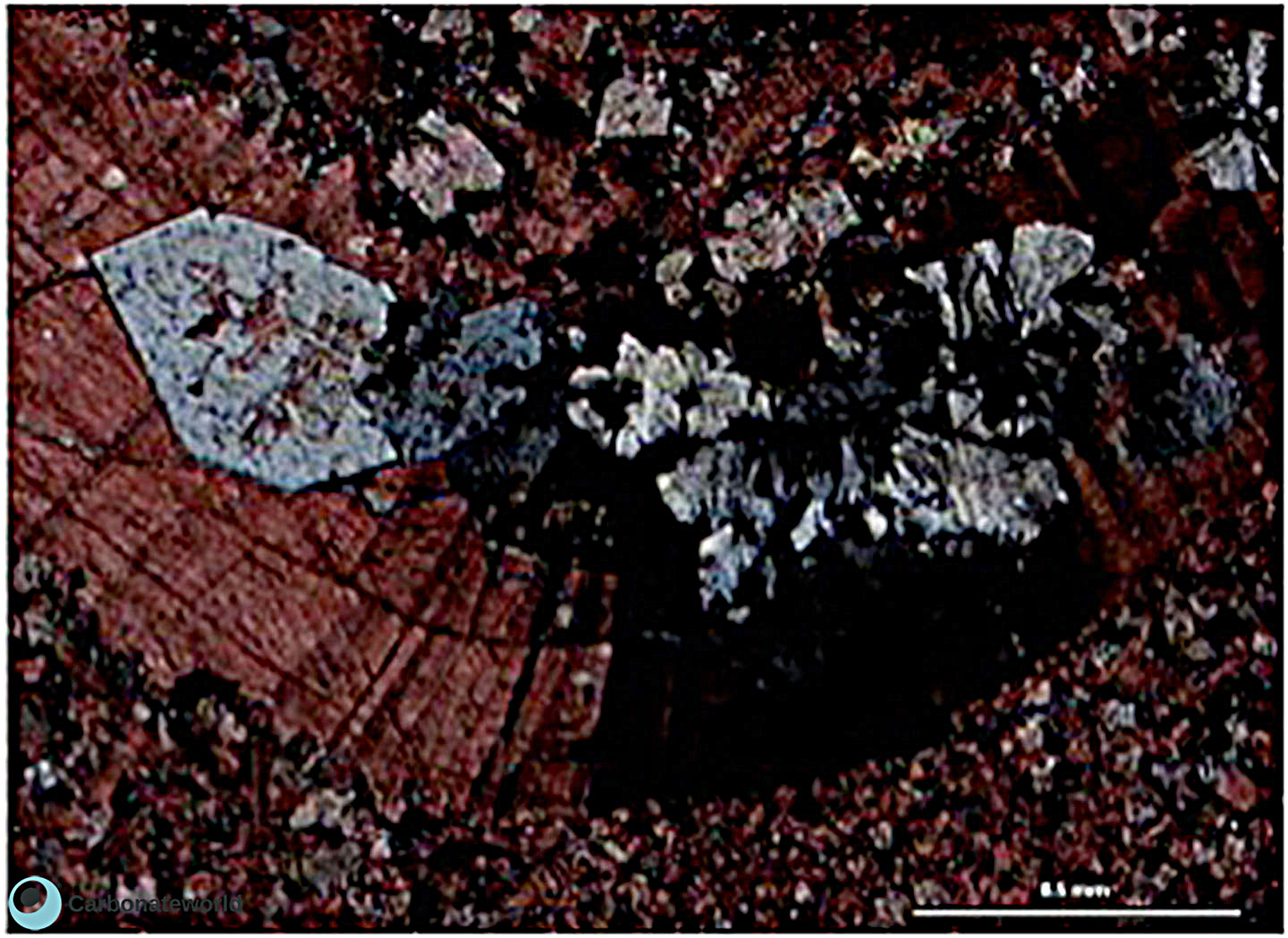

Rudist shell

Quartz
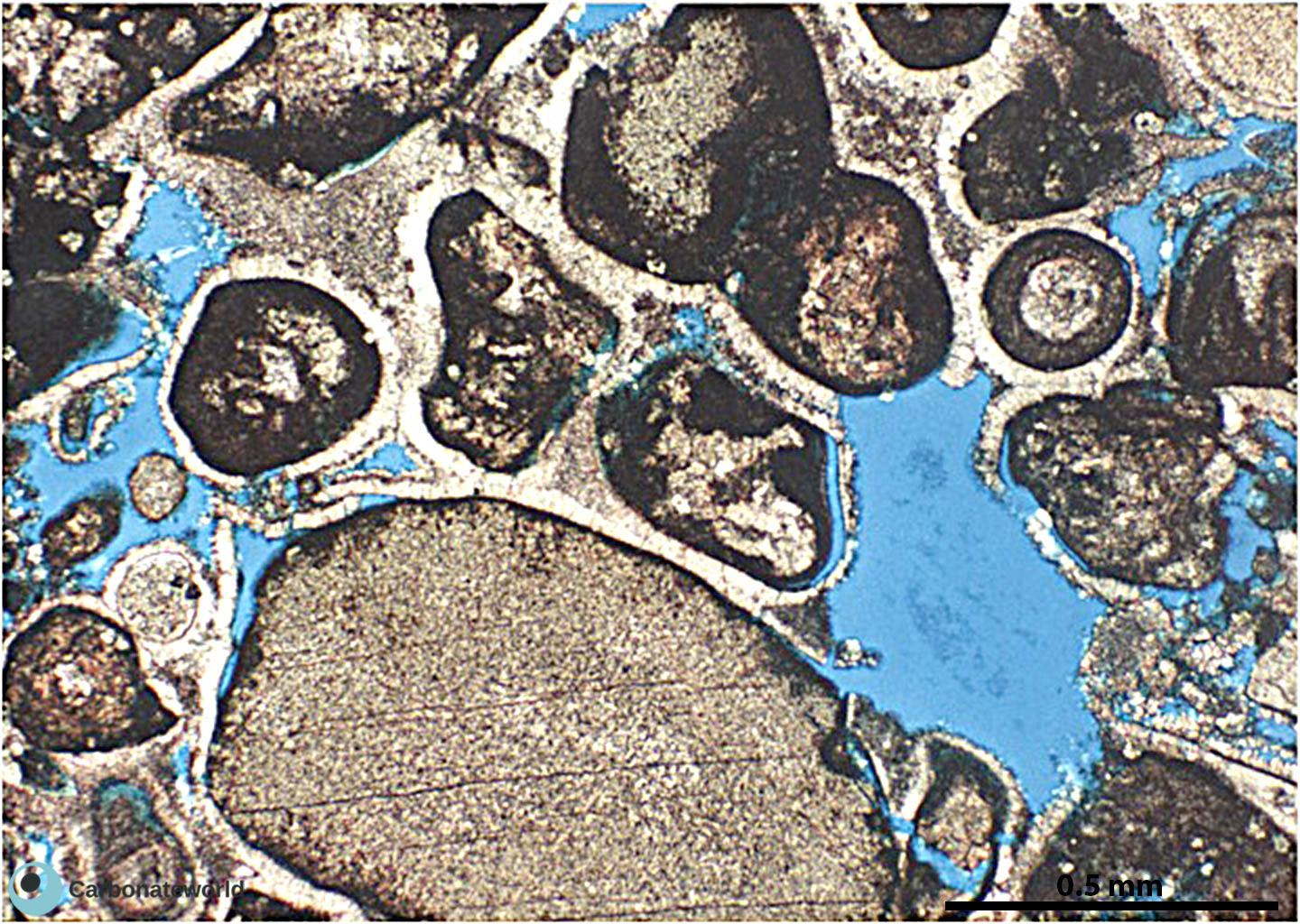

Broken isopachous fibrous cement

Interparticle porosity
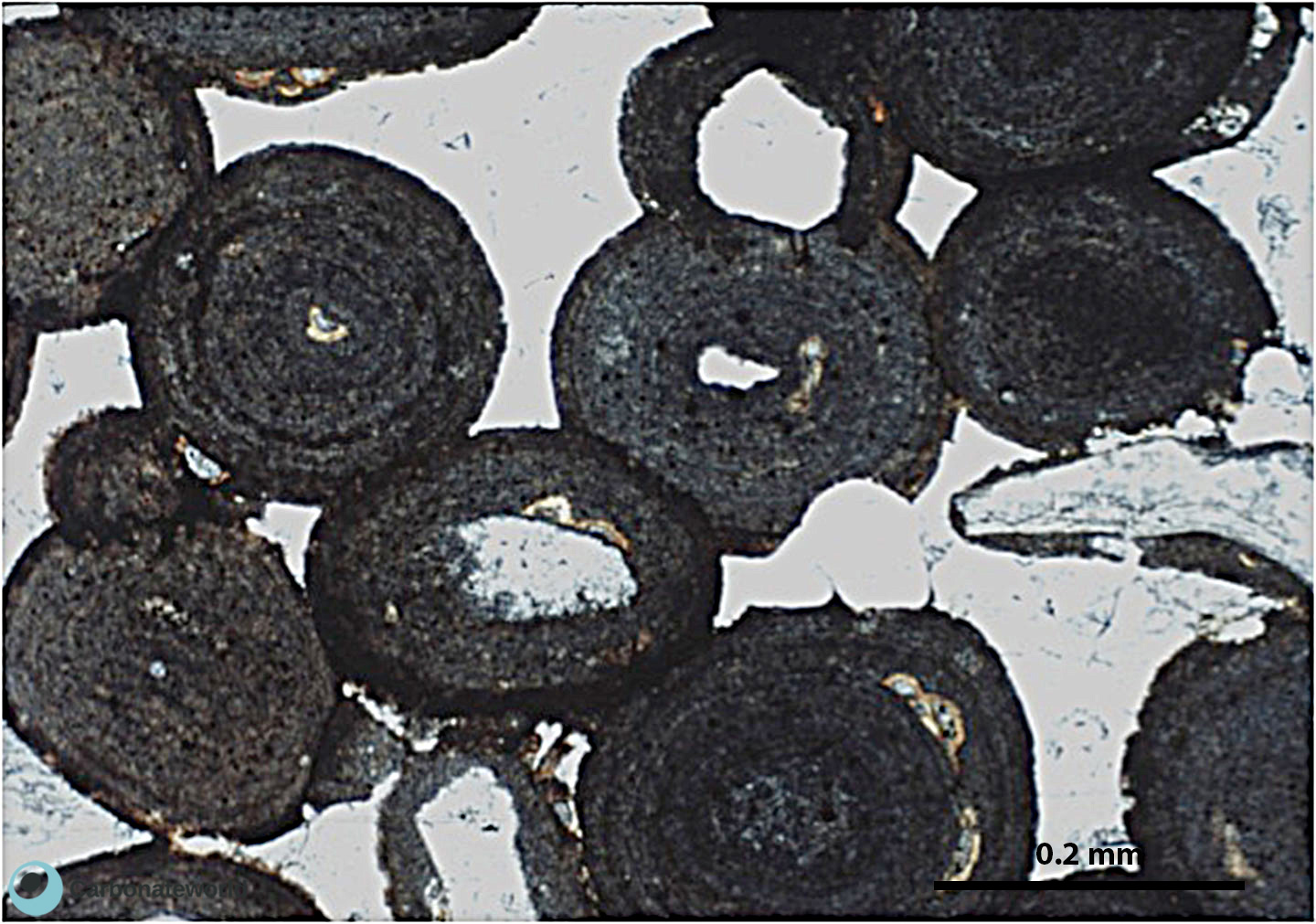

Concave-convex grain contacts

Coated grain
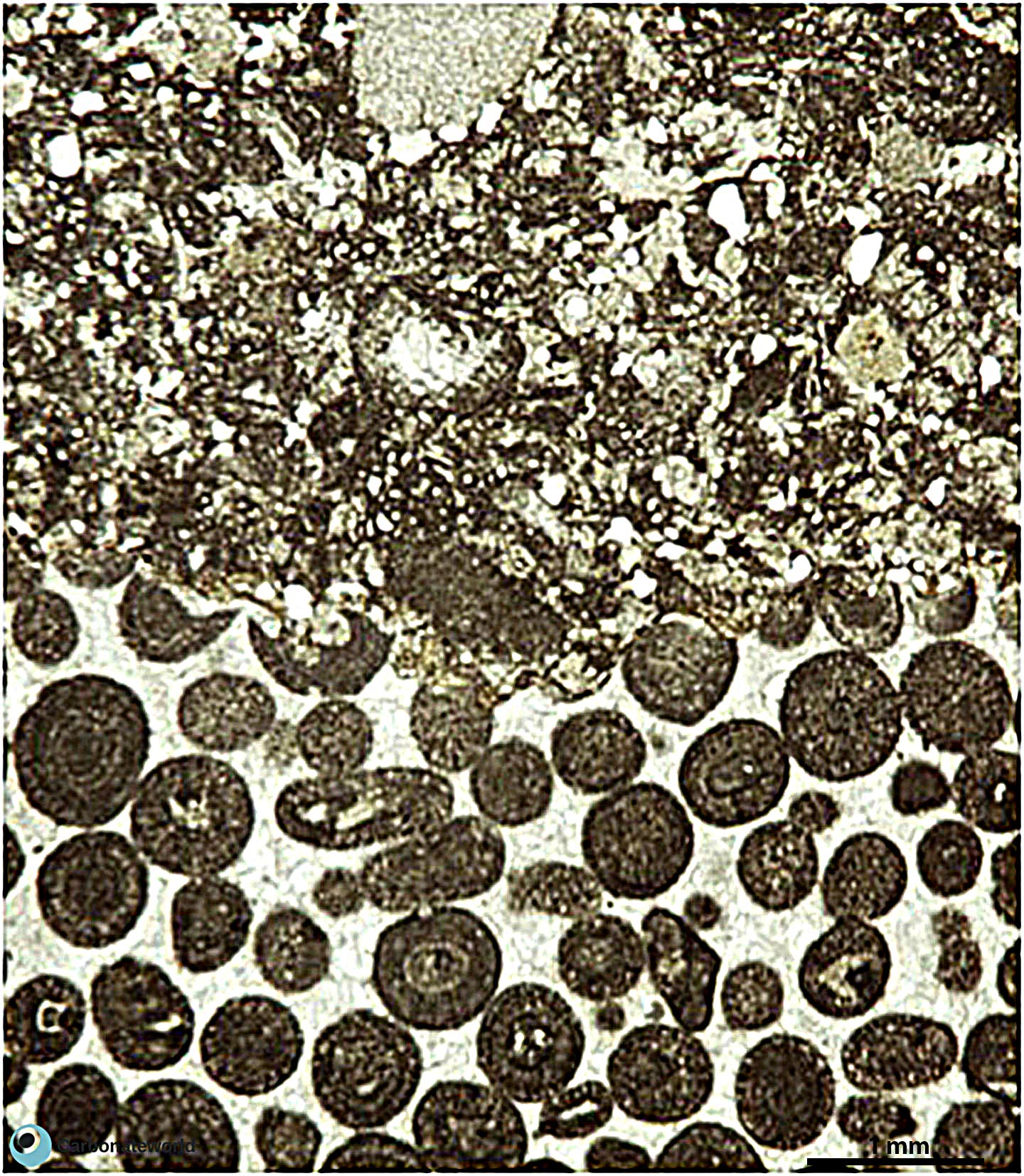

Fitted fabric

Well-cemented ooidal grainstone
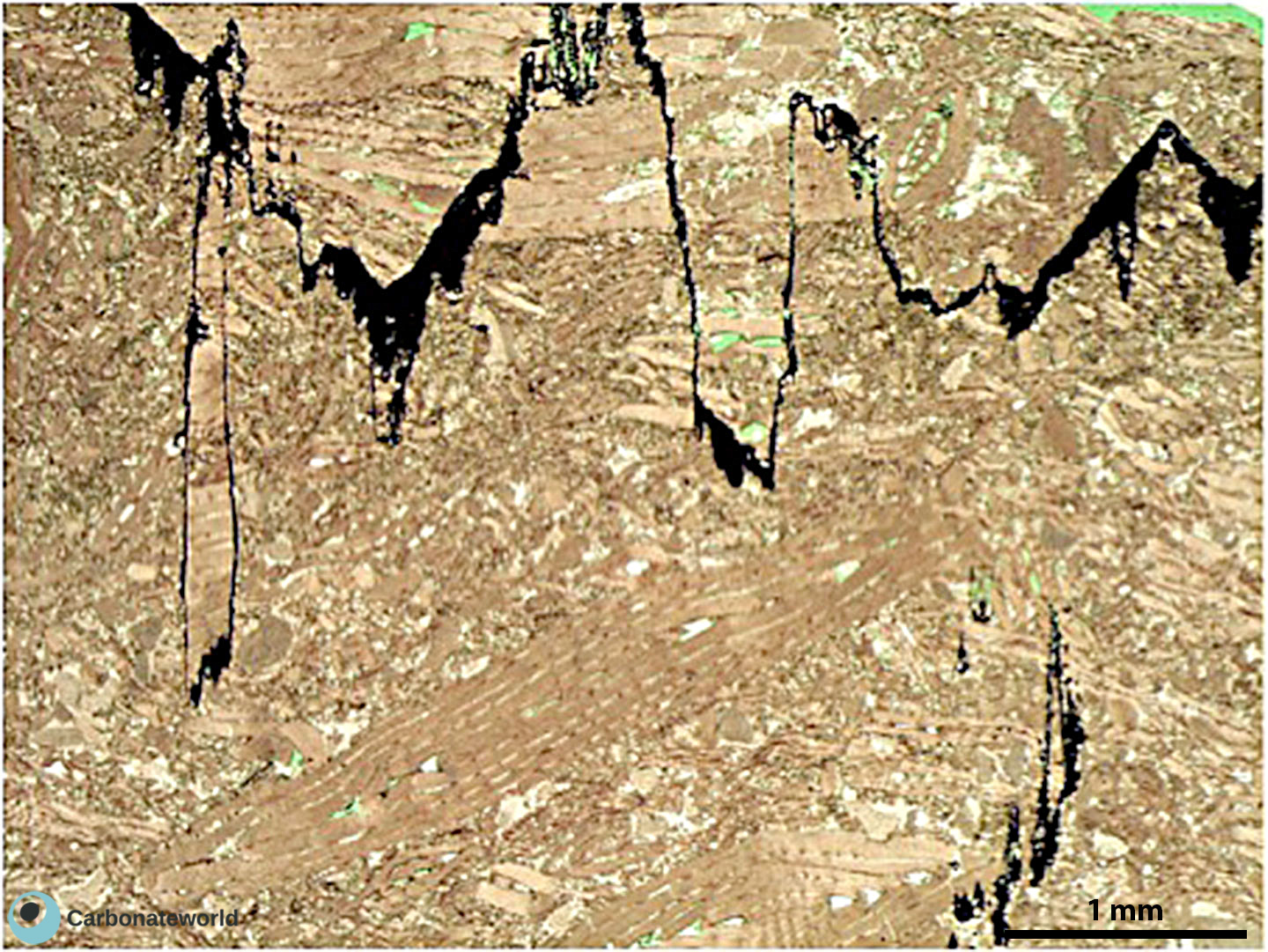

Stylolite

Nummulites
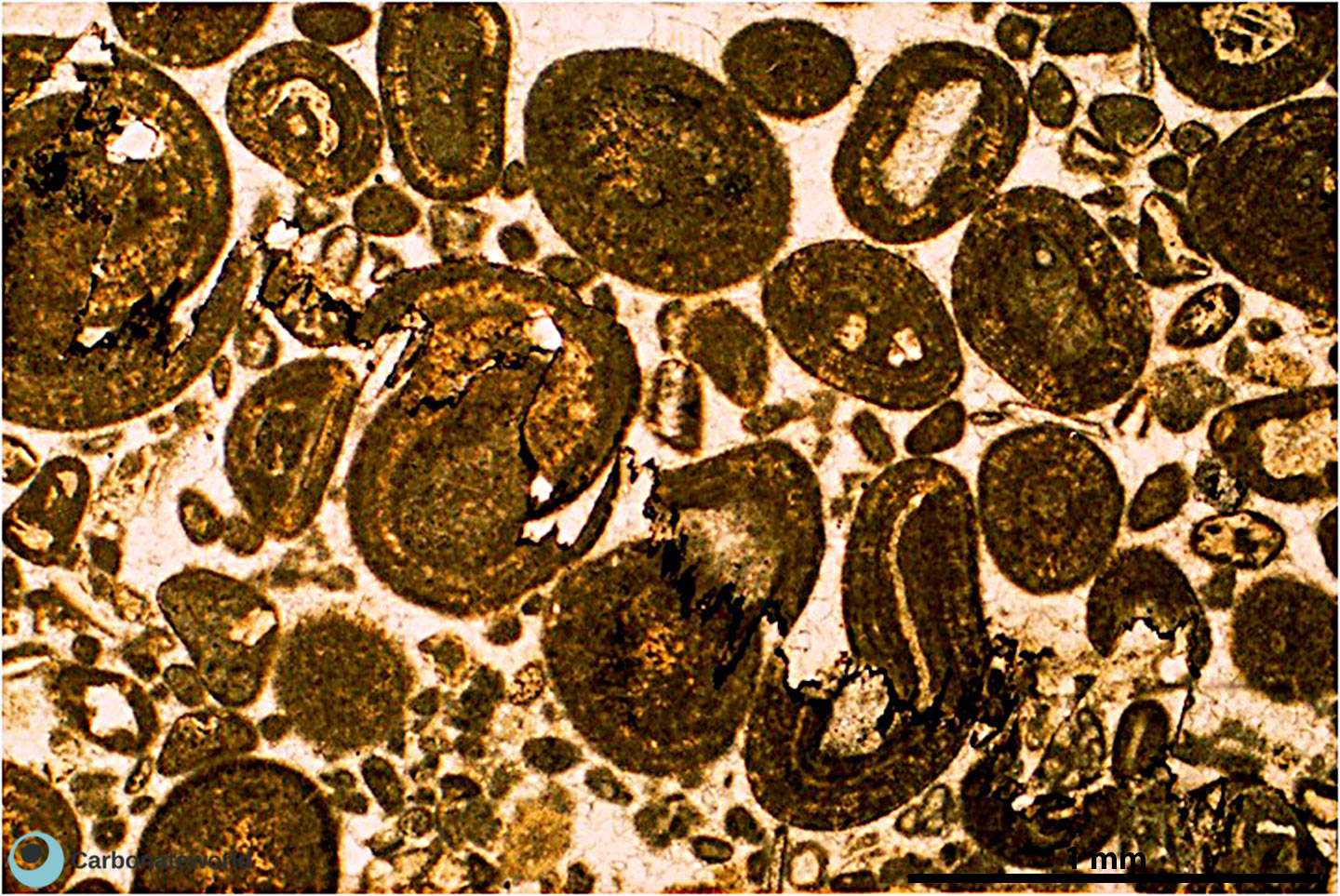

Stylolite

Ooid
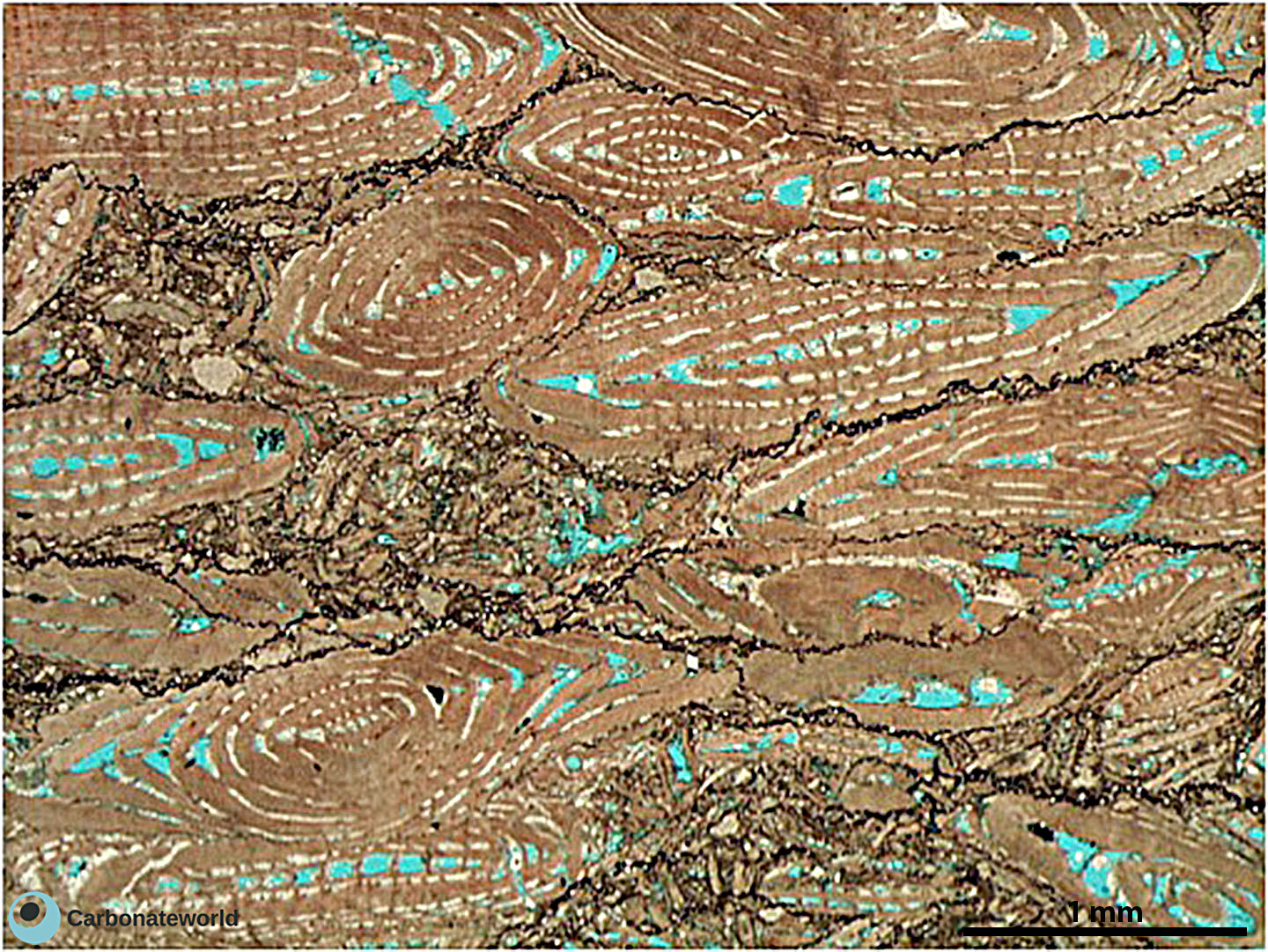

Sutured grain contact

Intraparticle porosity in Nummulites
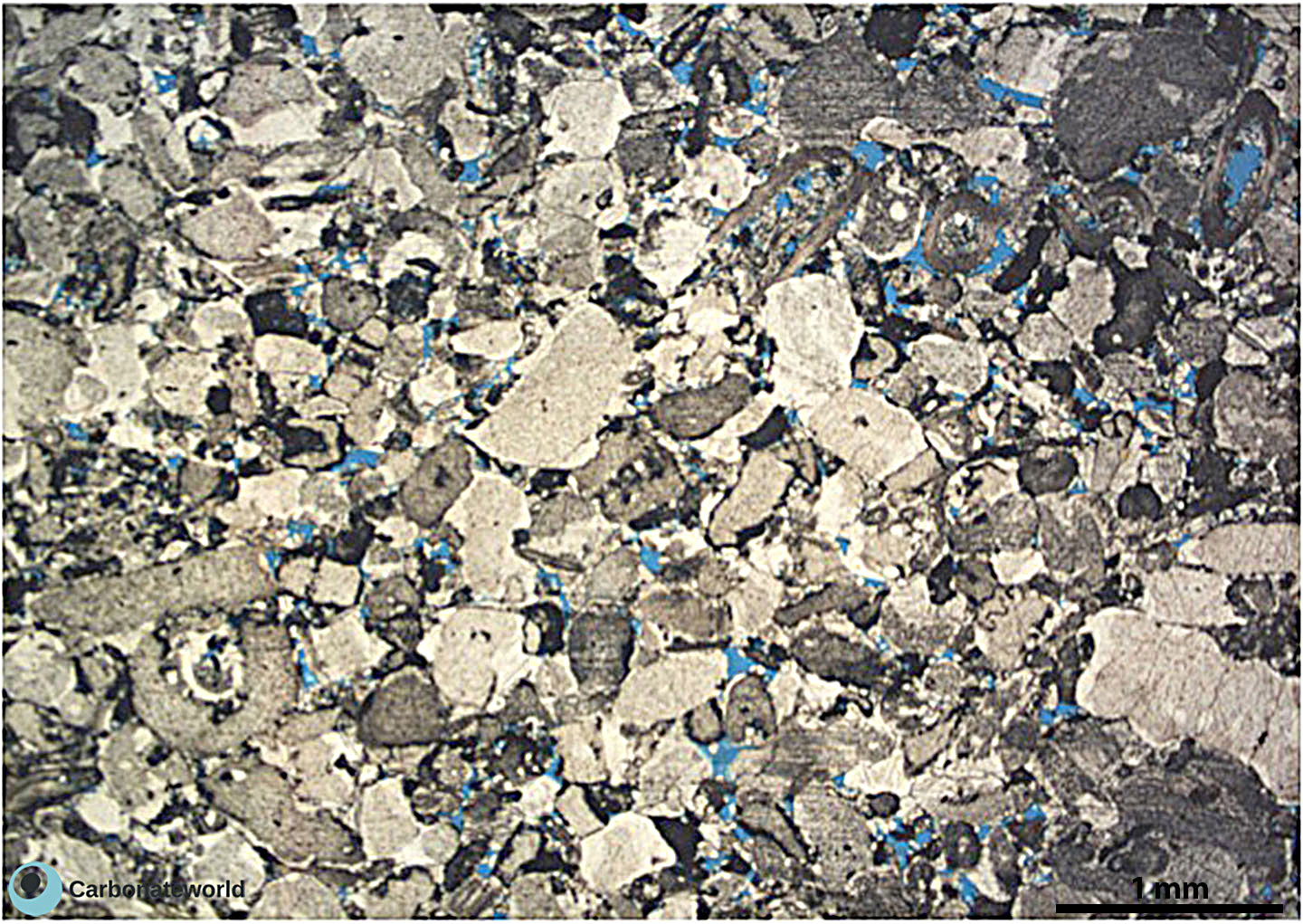

Interparticle porosity

Syntaxial cement
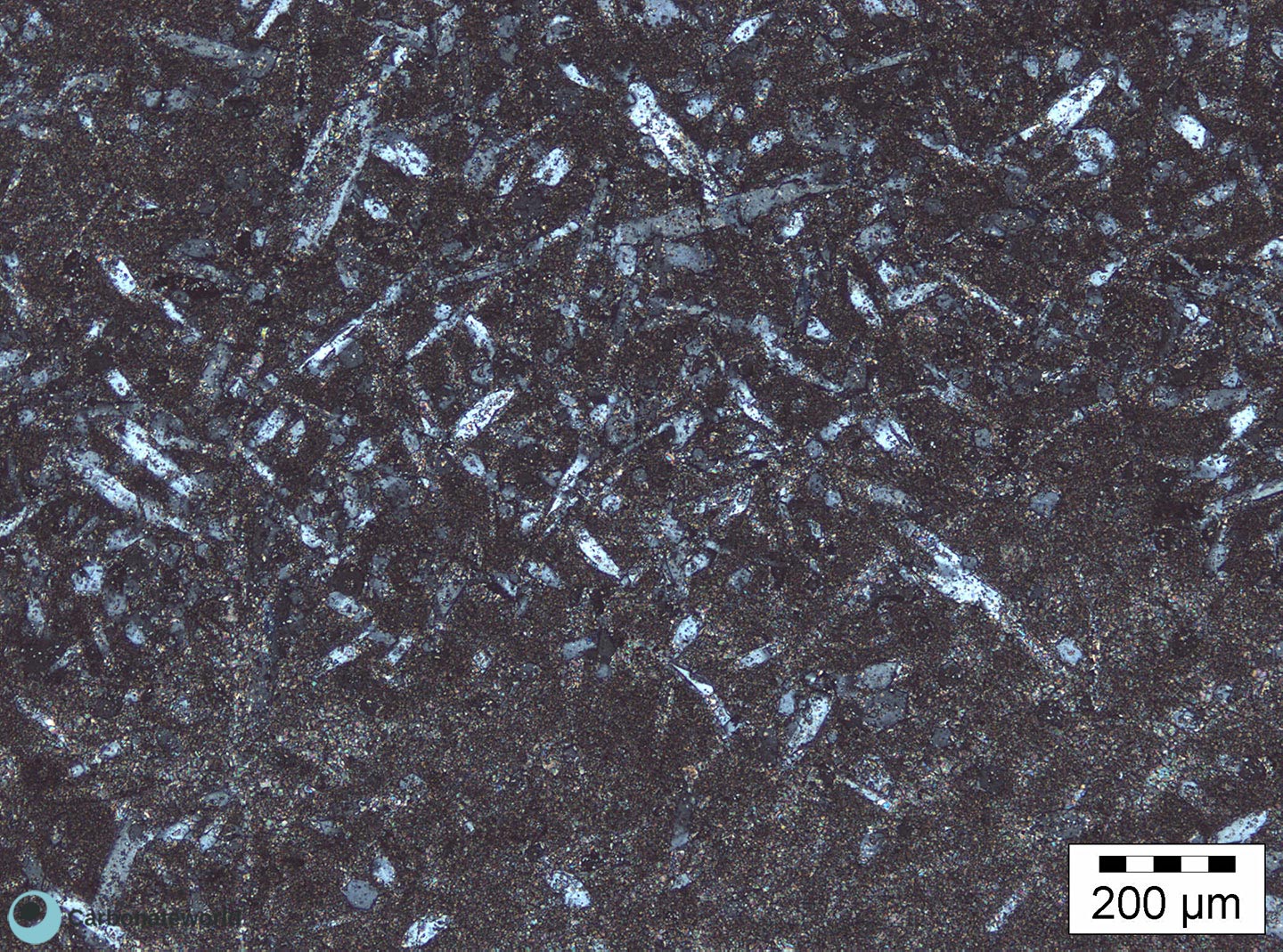

Authigenic quartz
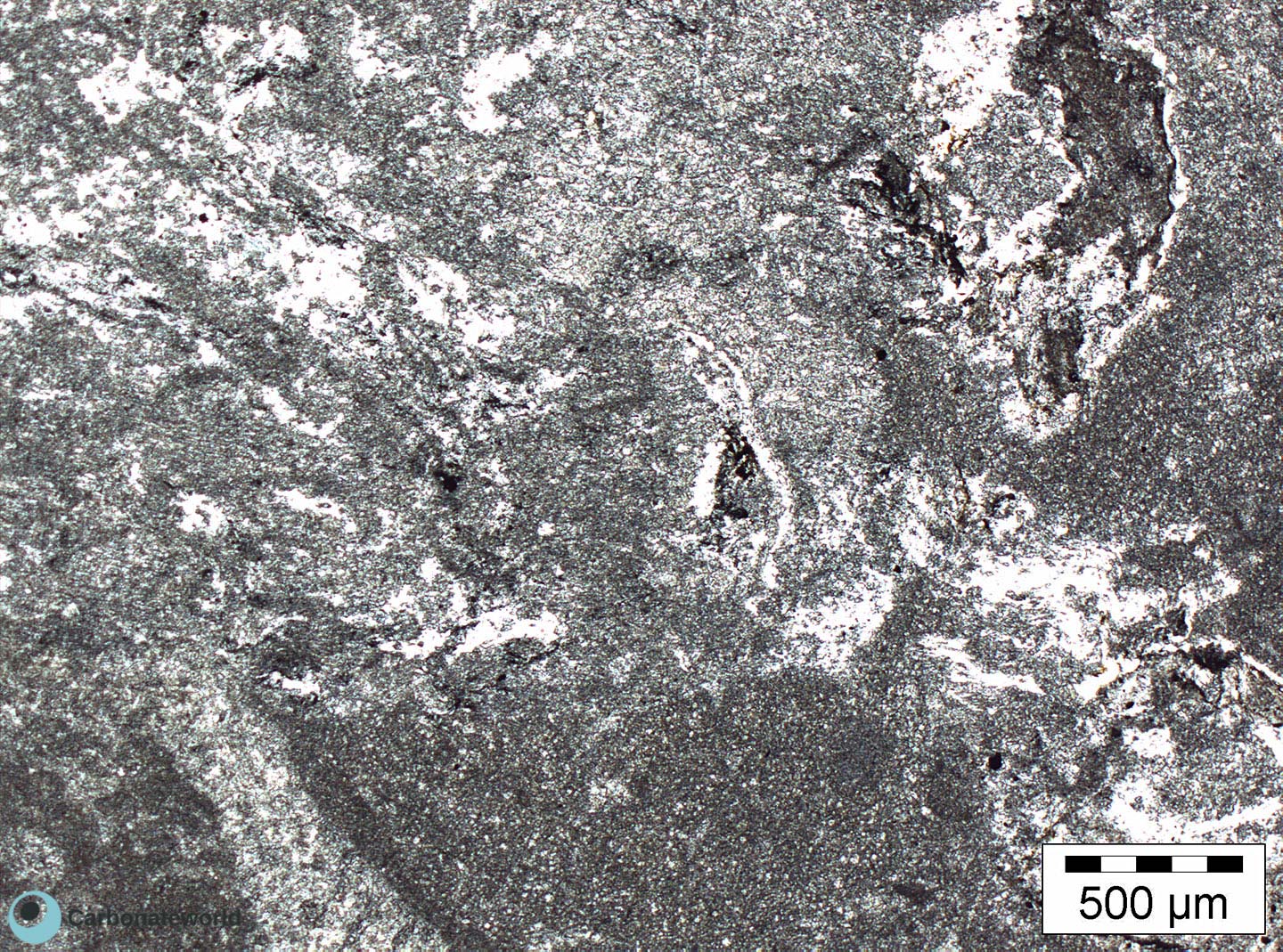

Silicification
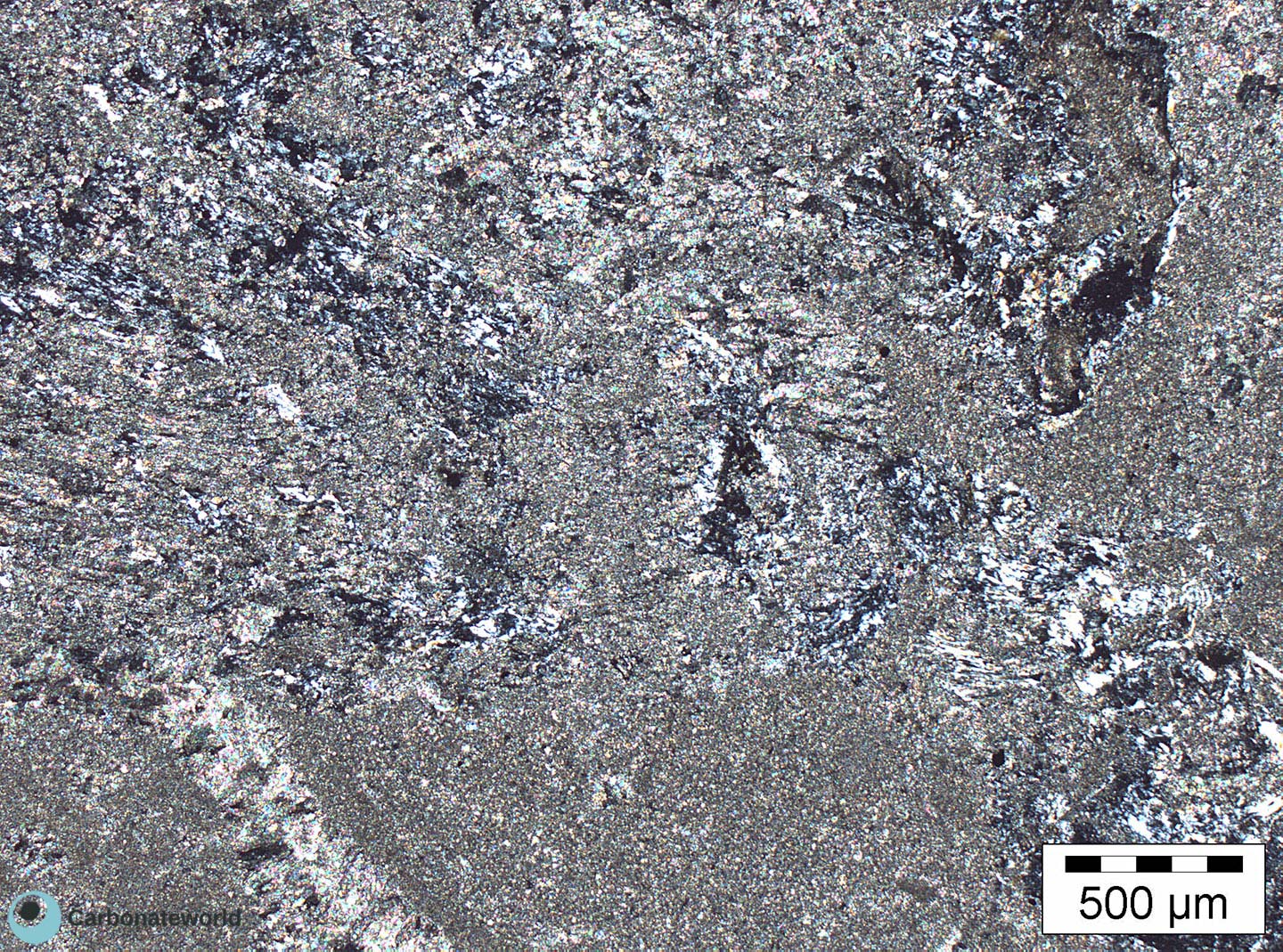

Silicification
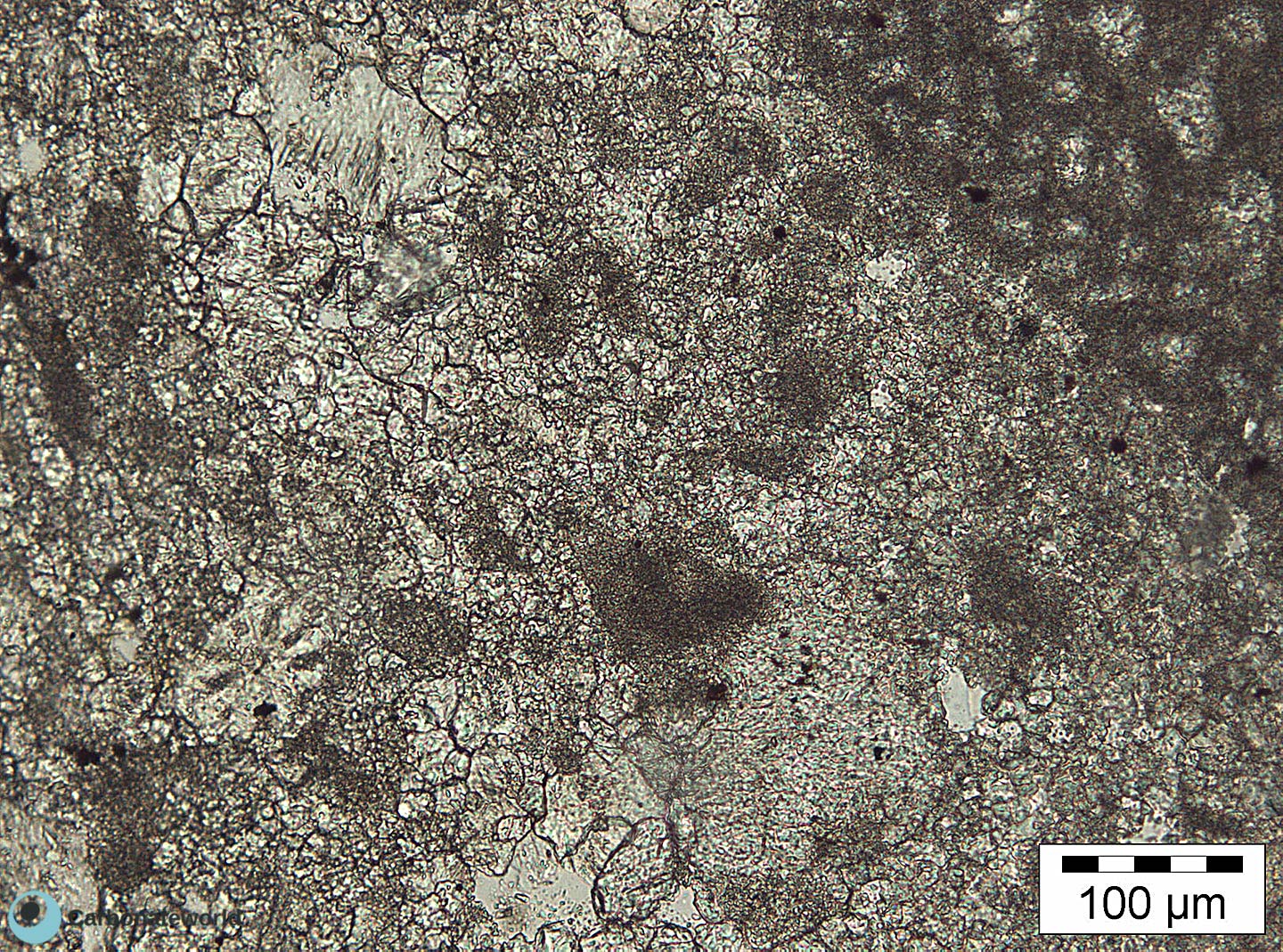

Orbitolinid foraminifer

Neomorphic microsparite

Echinoid spine
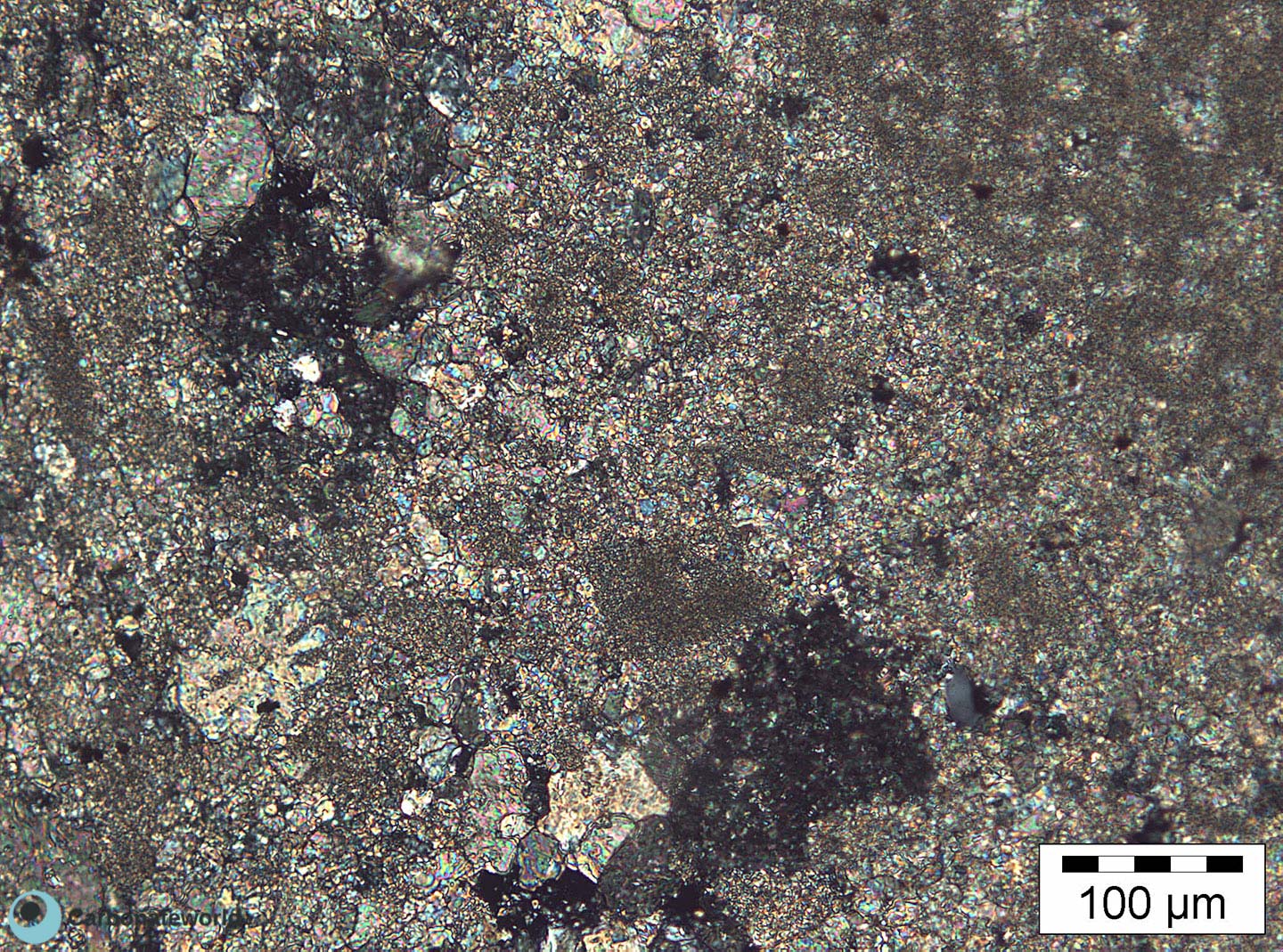

Orbitolinid foraminifer

Neomorphic microsparite

Echinoid spine
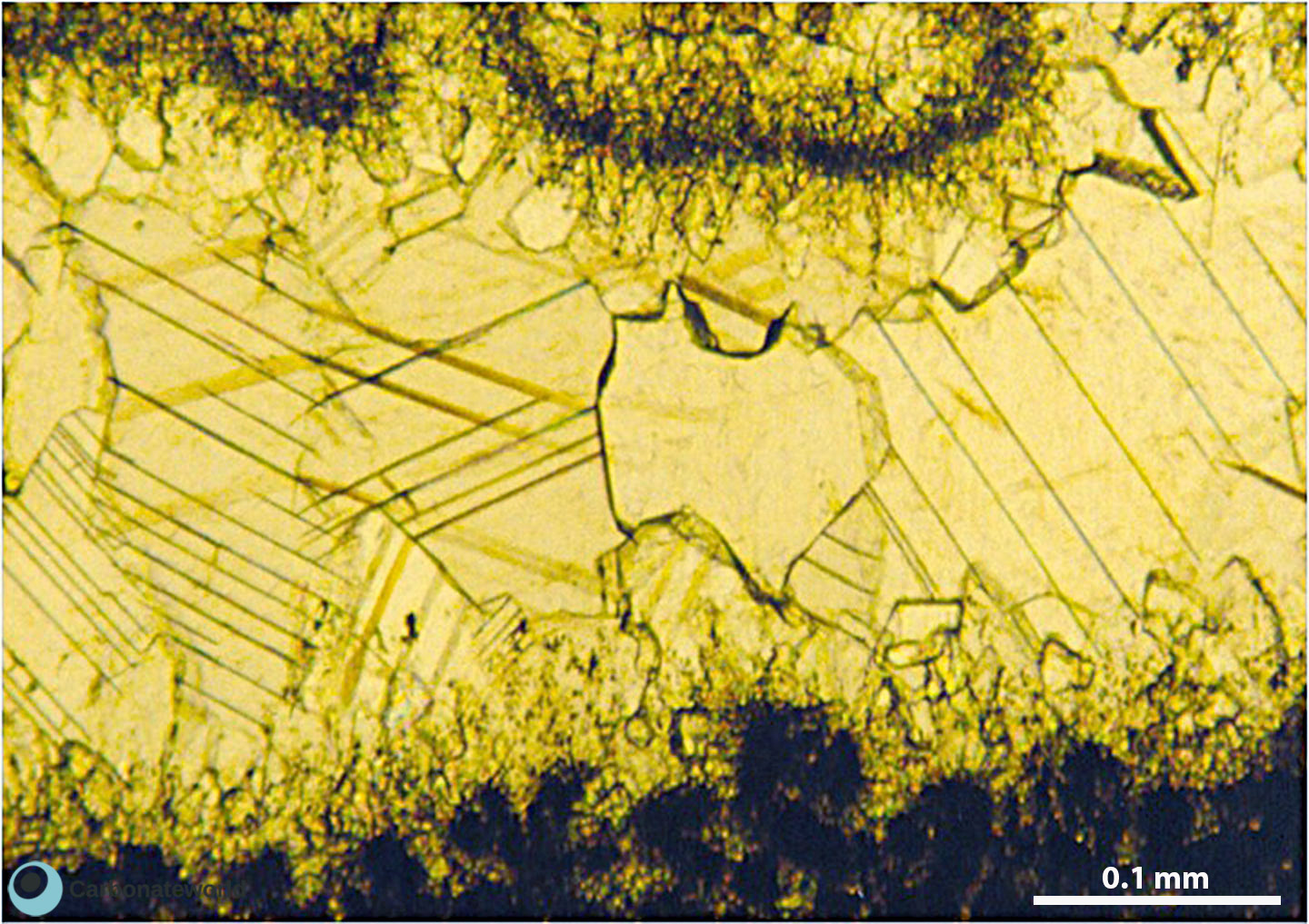

Blocky equant sparite

Scalenohedral cement
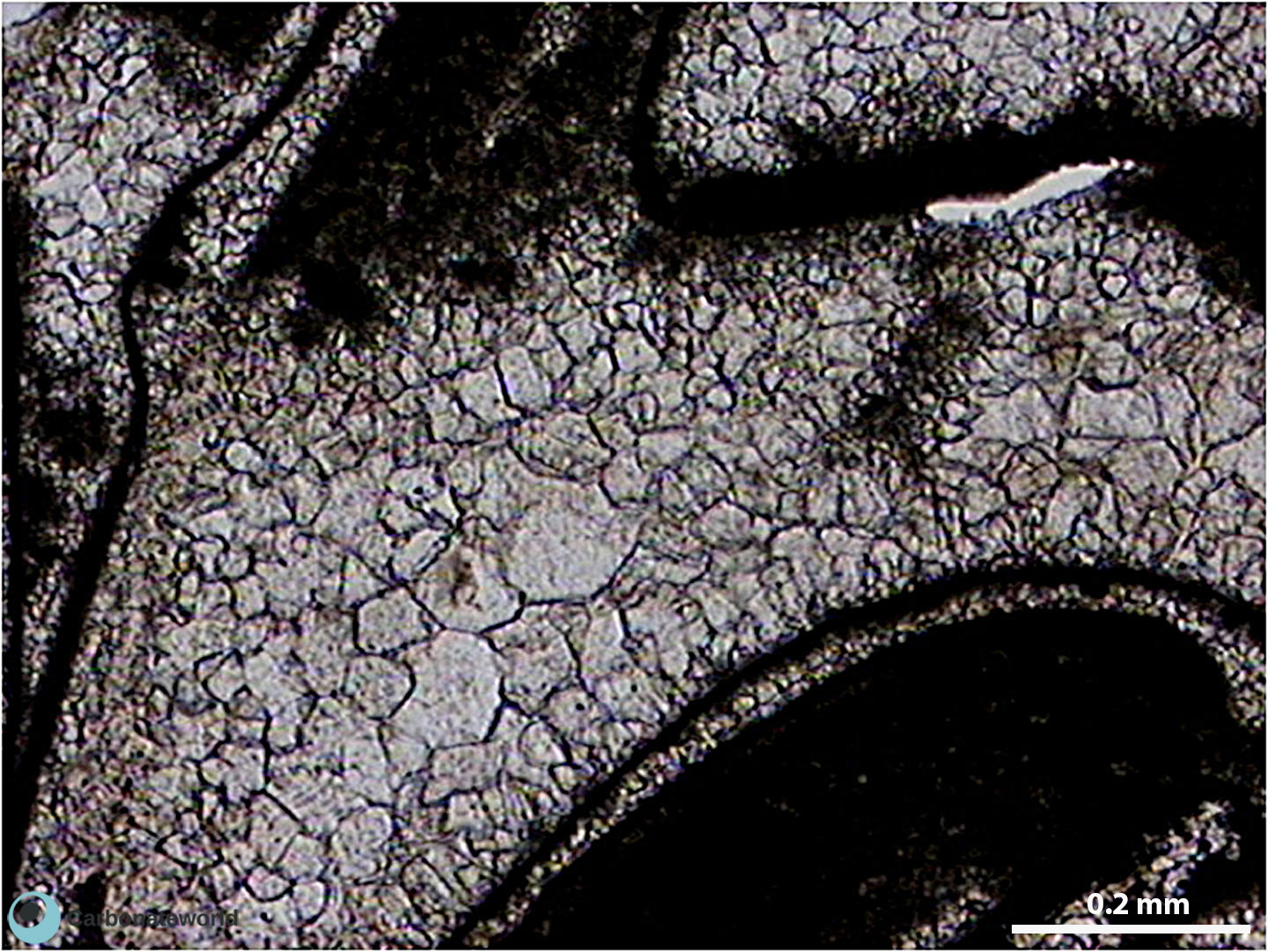

Drusy fabric
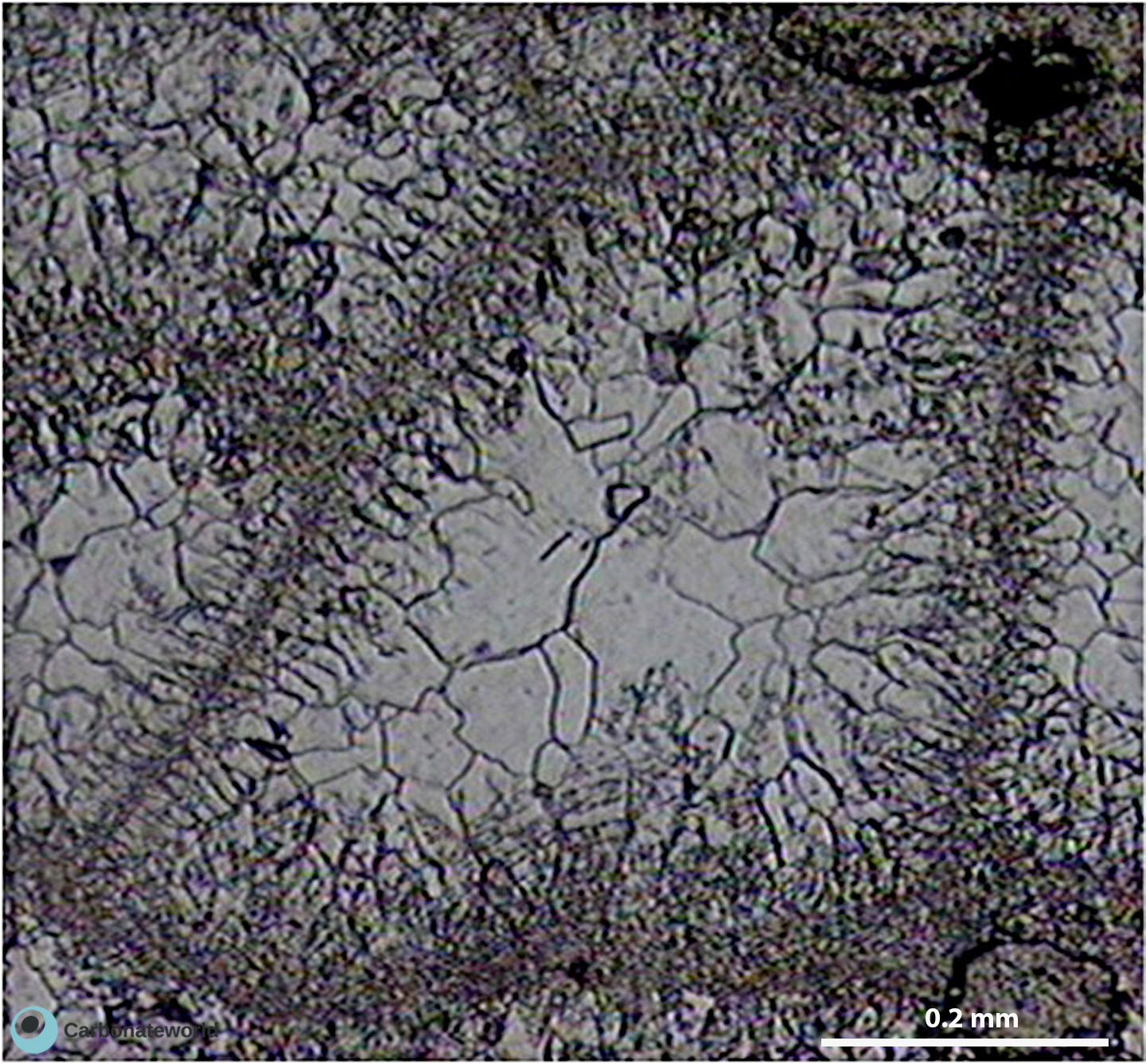

Coral skeleton

Drusy fabric
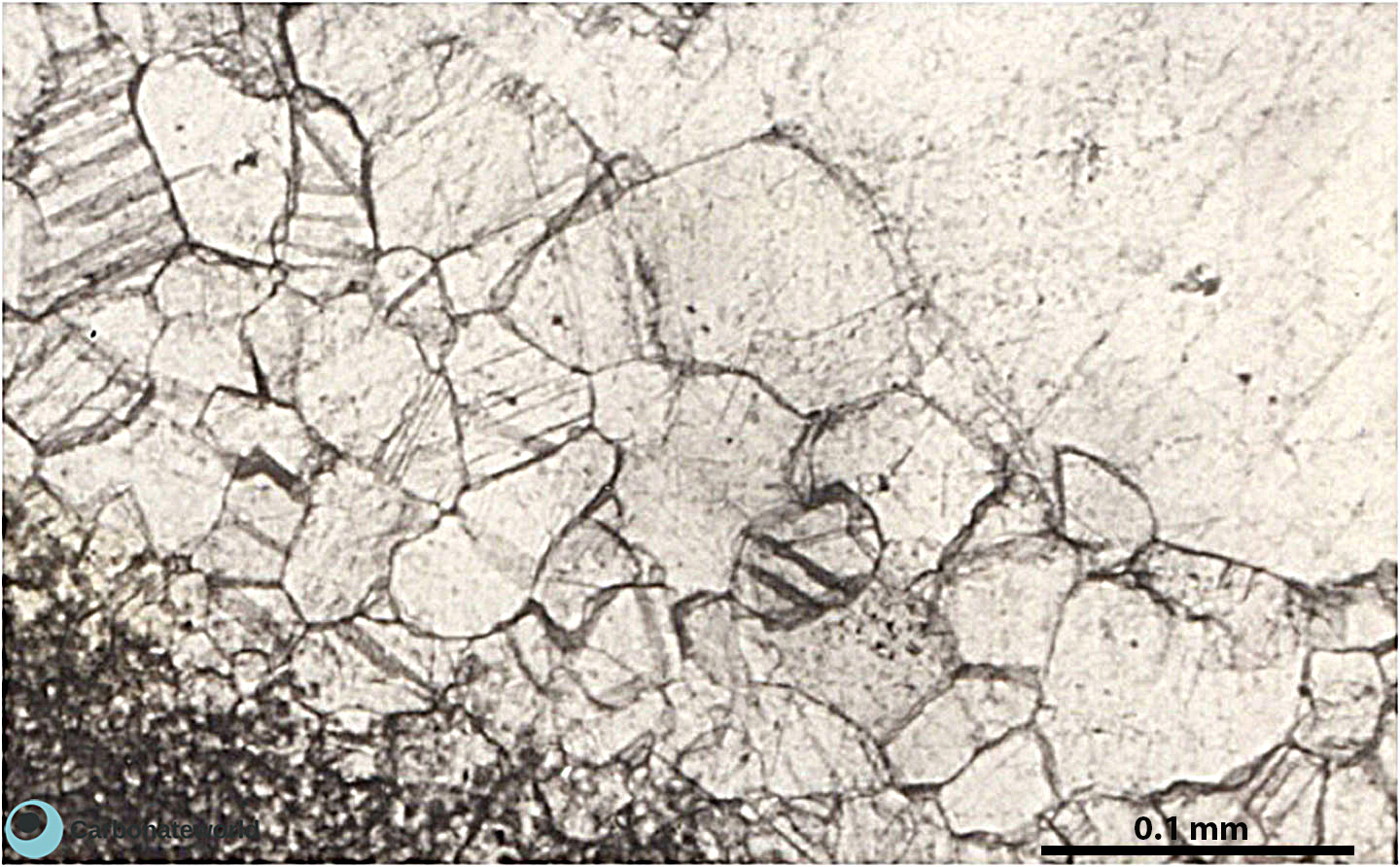

Drusy fabric
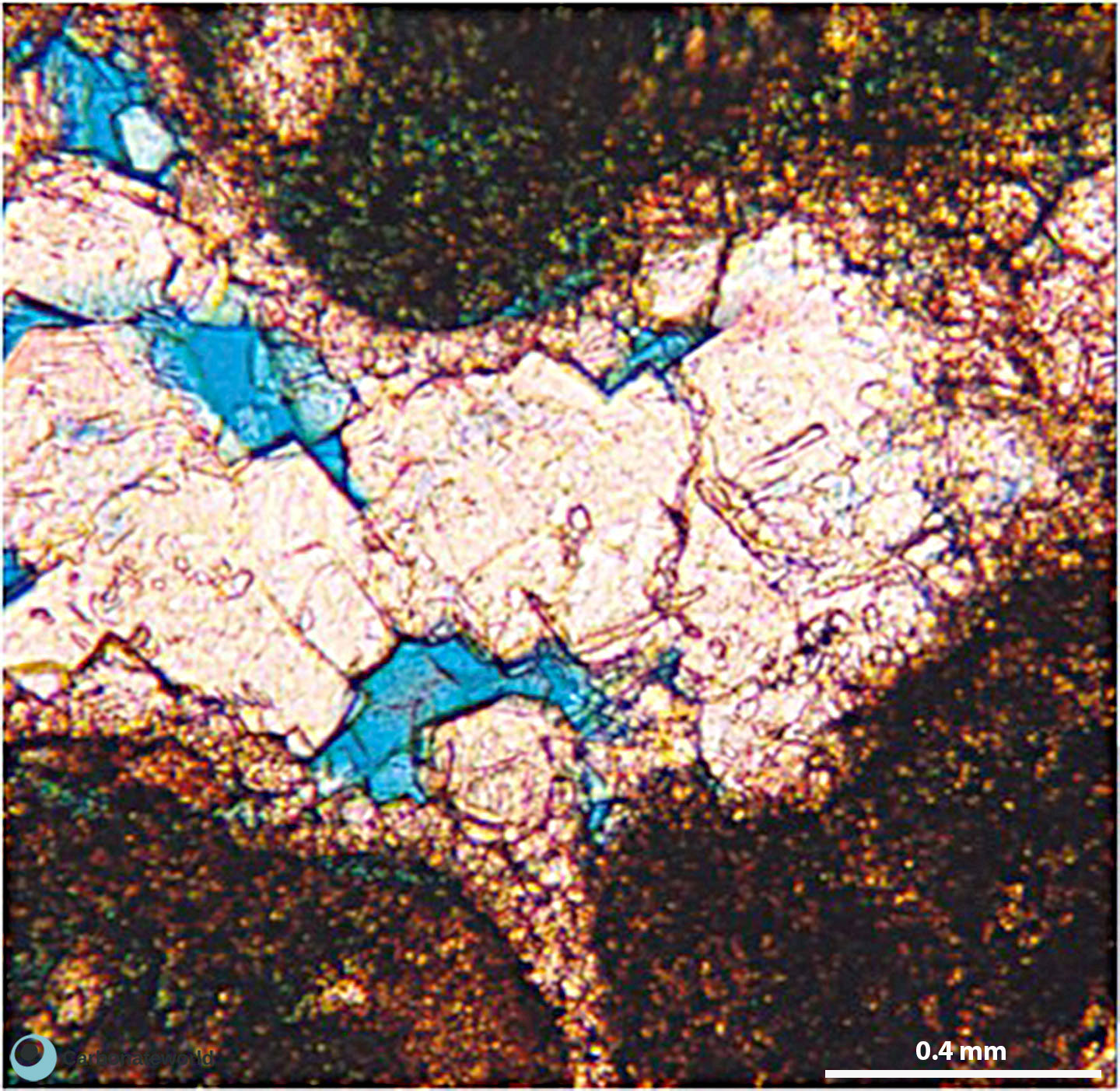

Etched burial cement

Late corrosion porosity
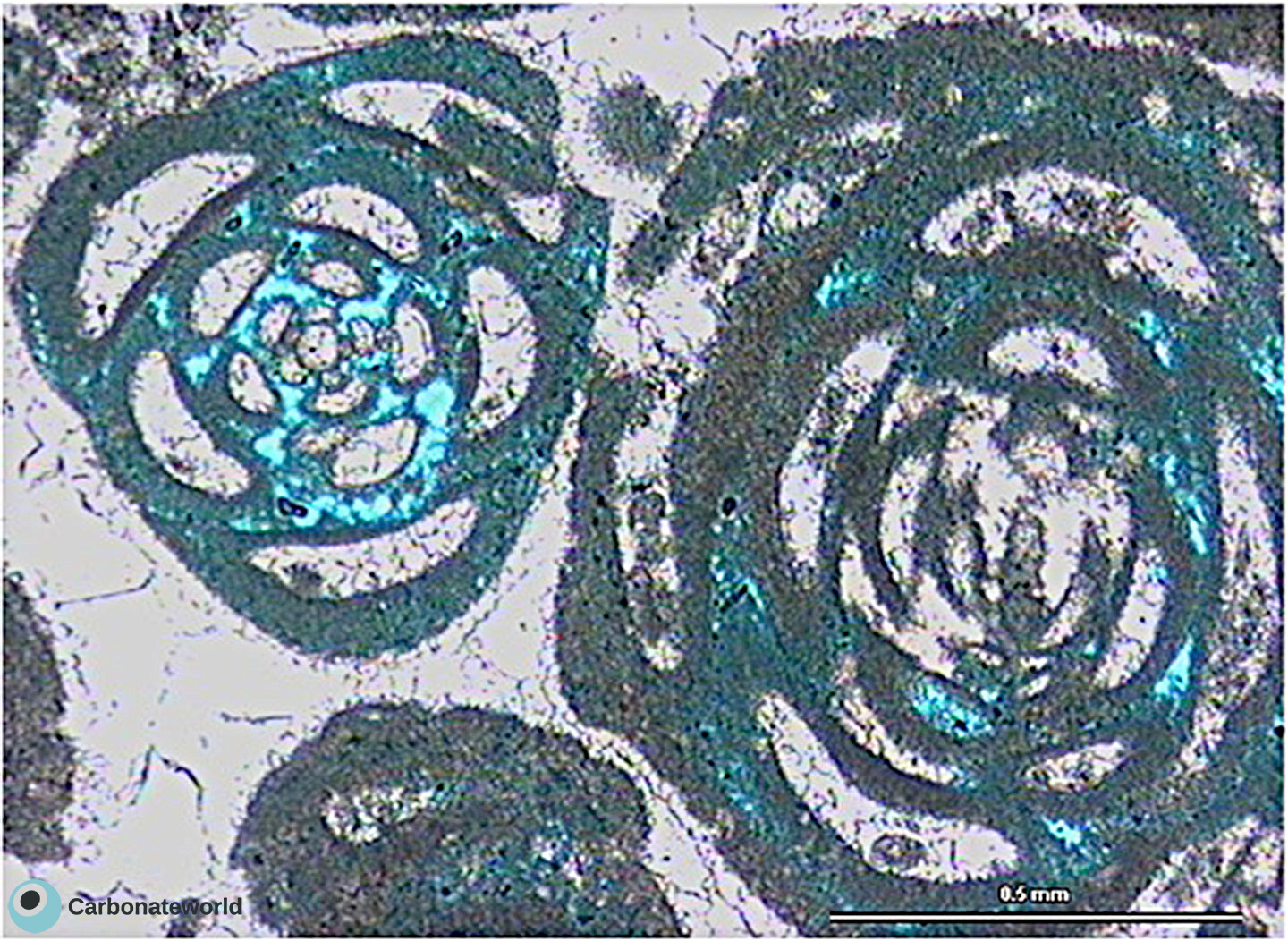

Miliolid foraminifer

Burial corrosion dissolution
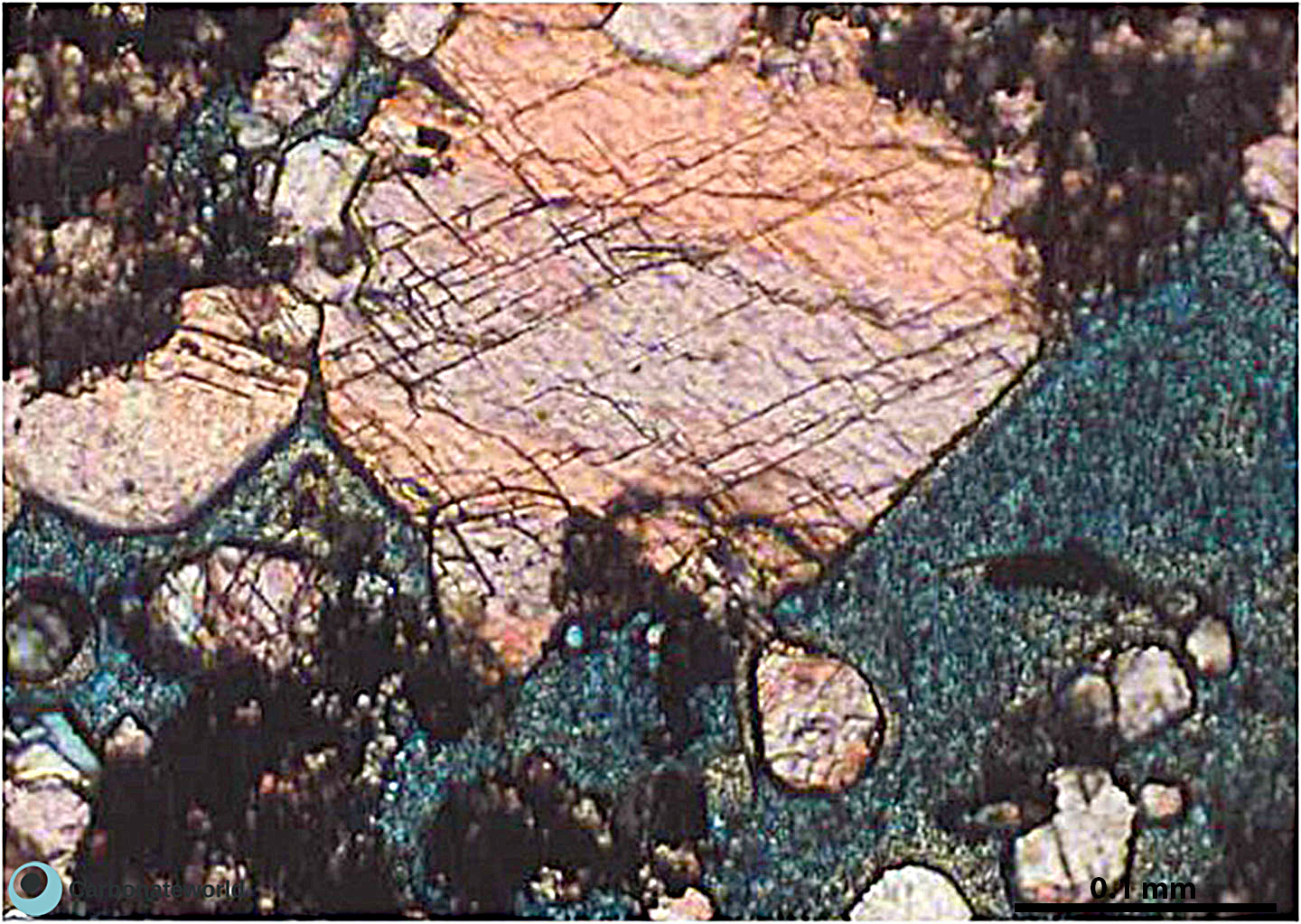

Corroded calcite cement

Secondary porosity
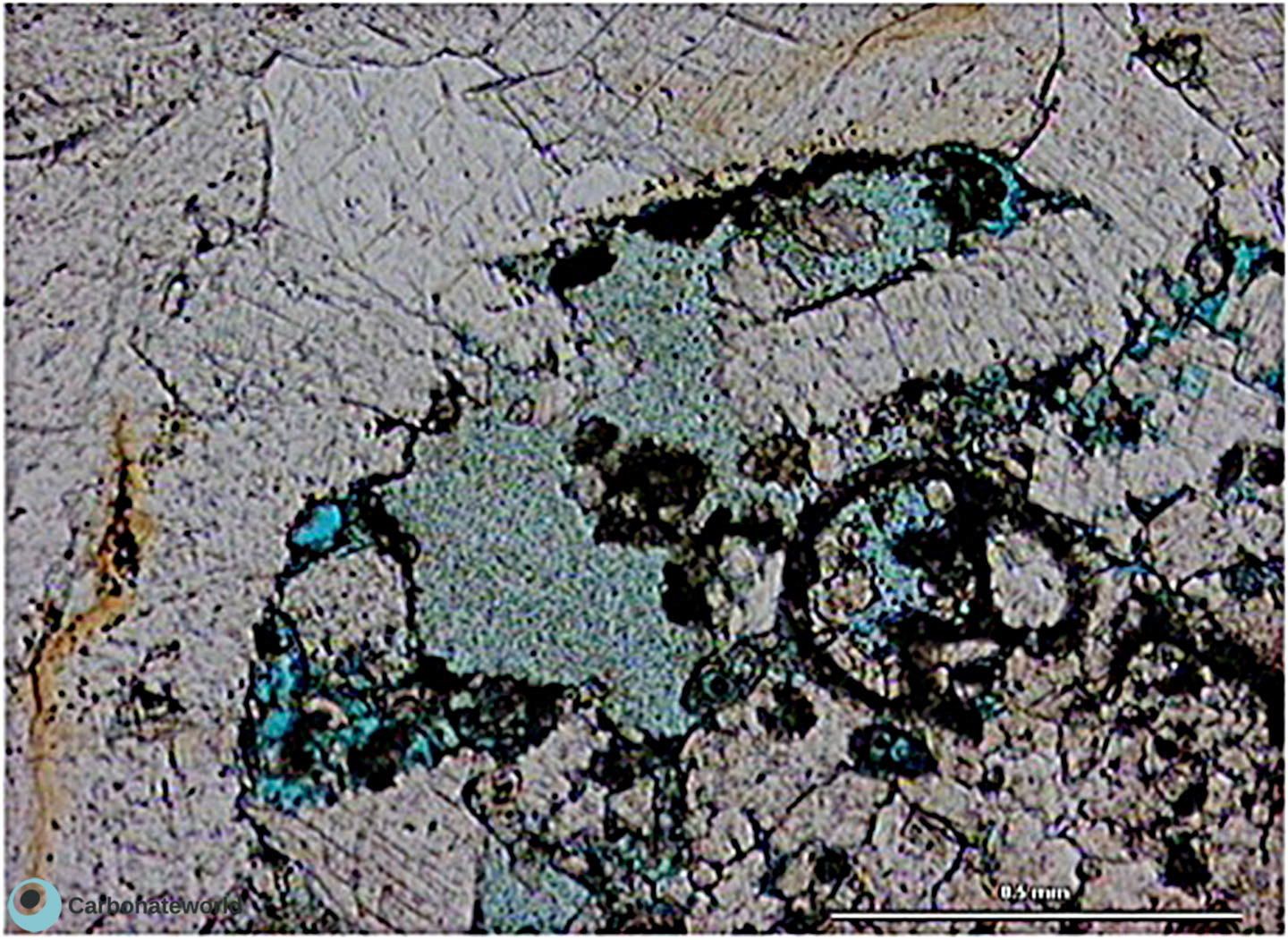

Dickite

Corroded sparite
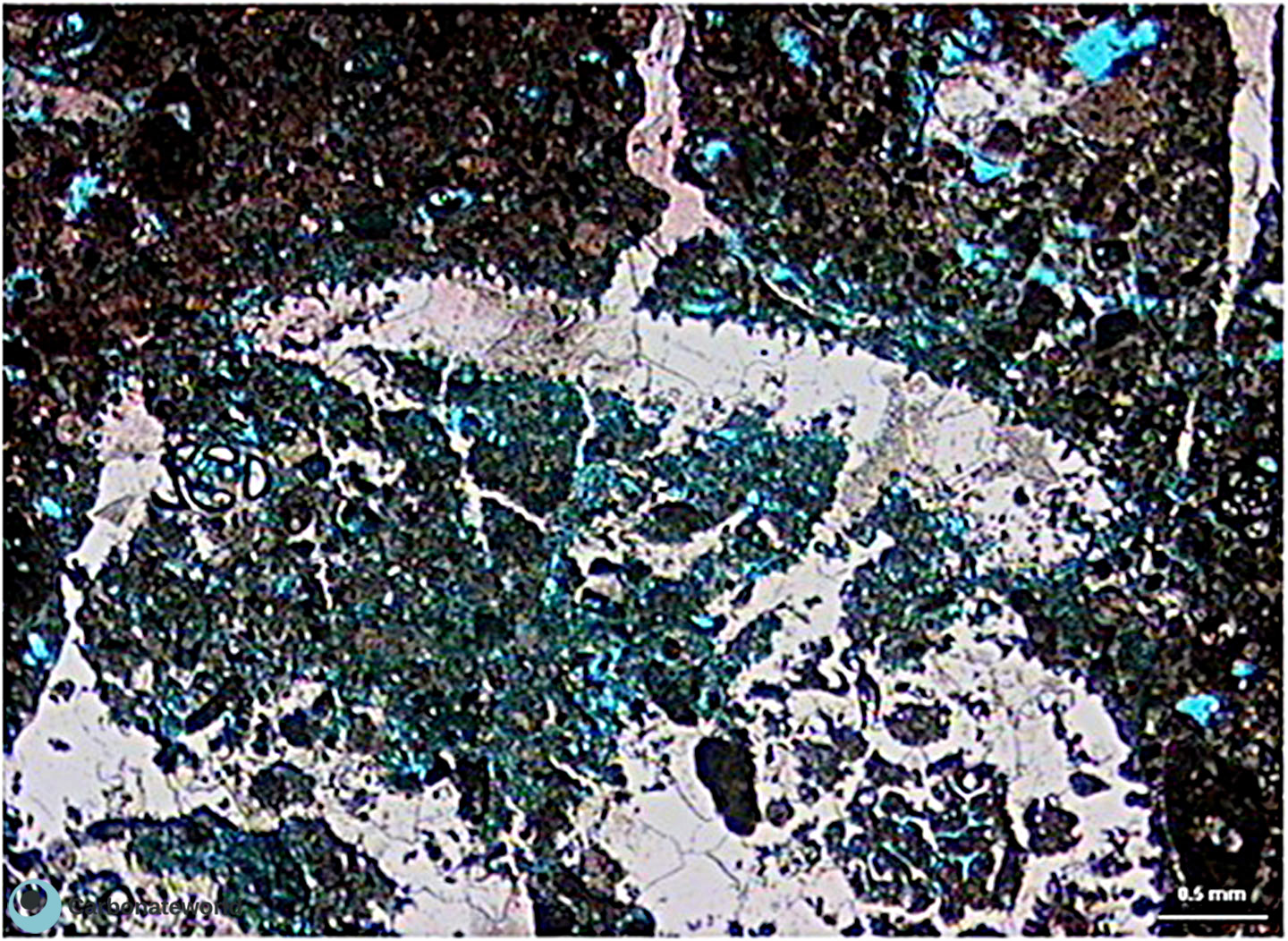

Calcite-filled veins
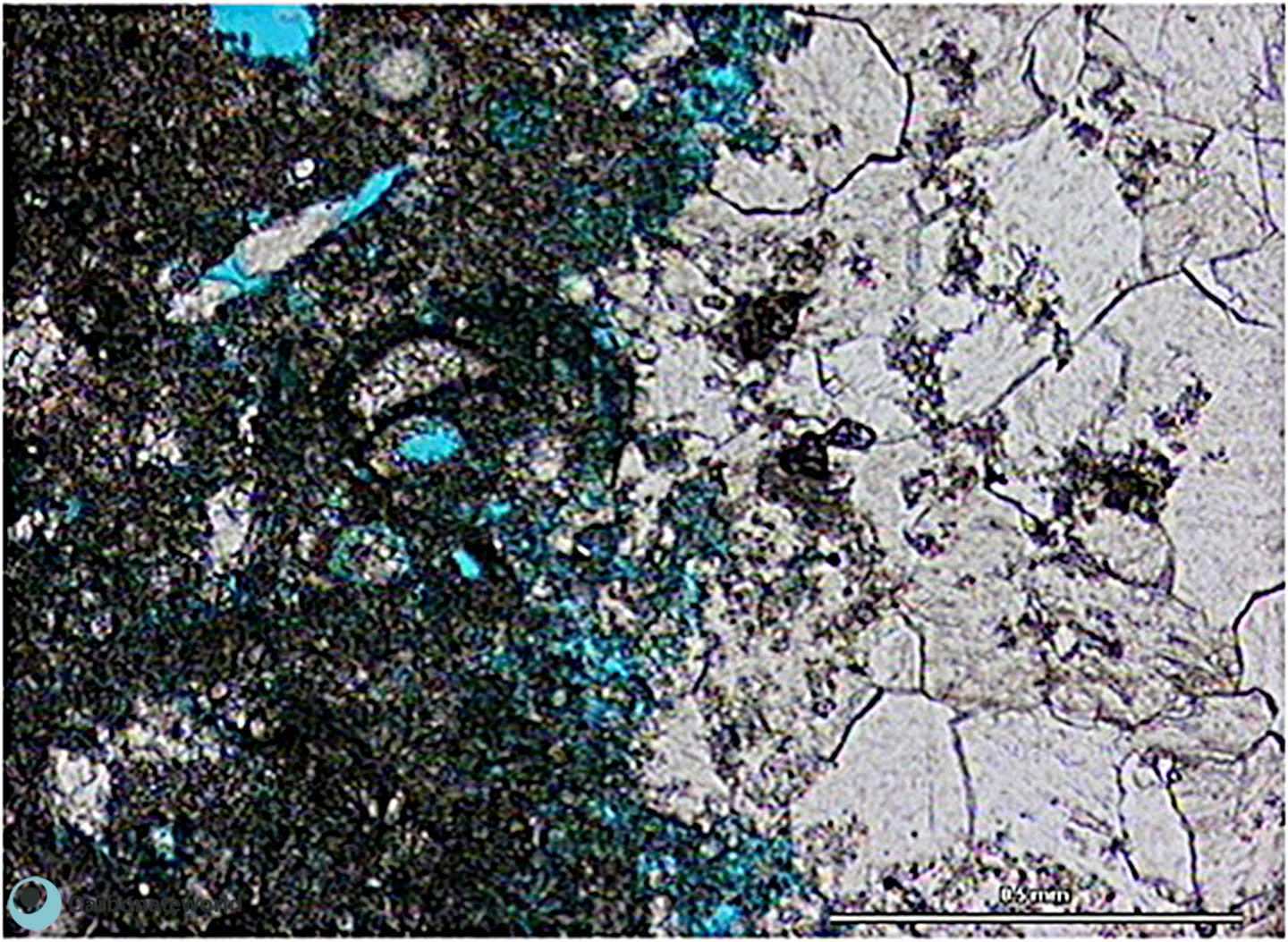

Burial corrosion
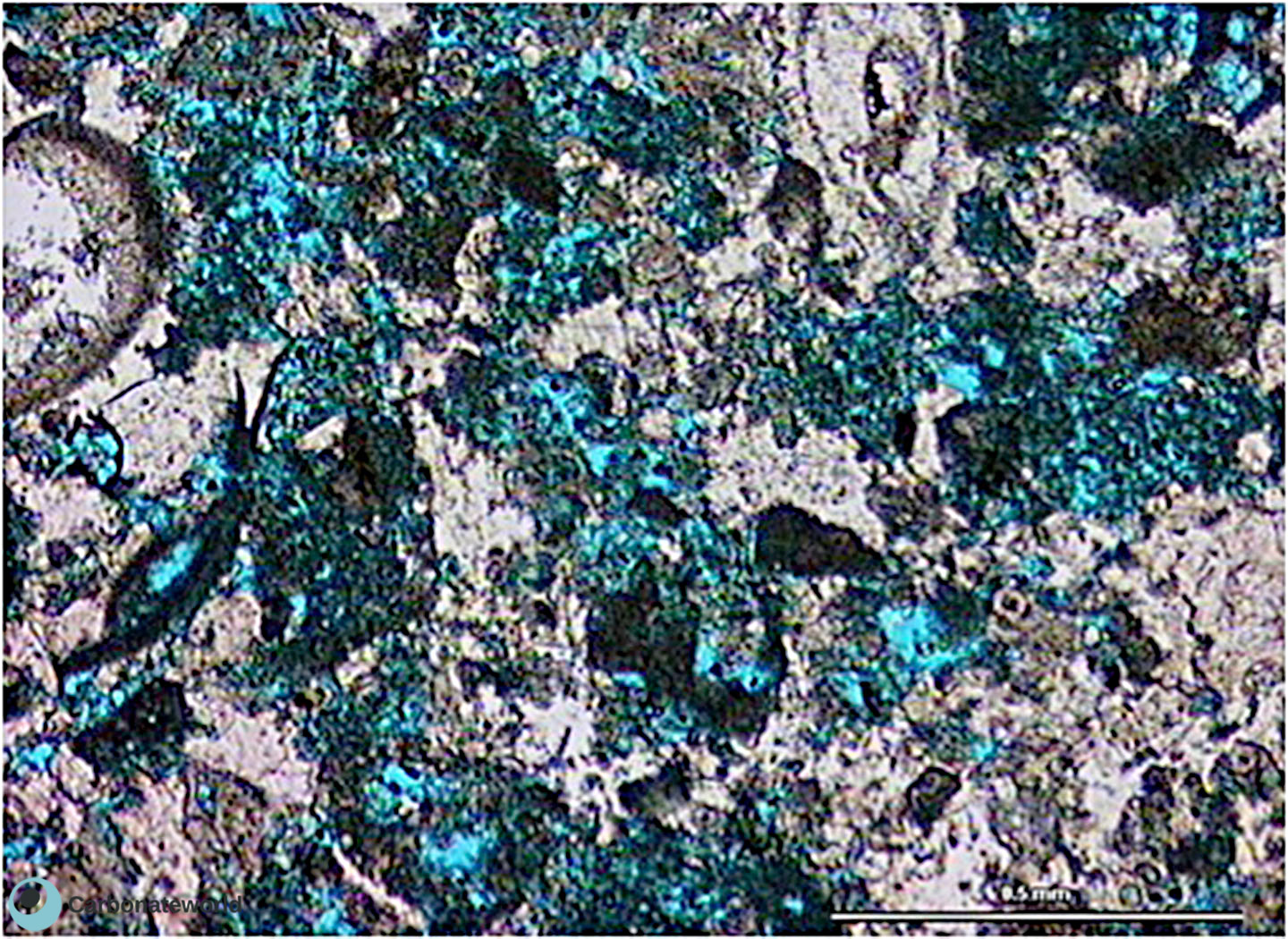

Relict cement

Burial corrosion porosity
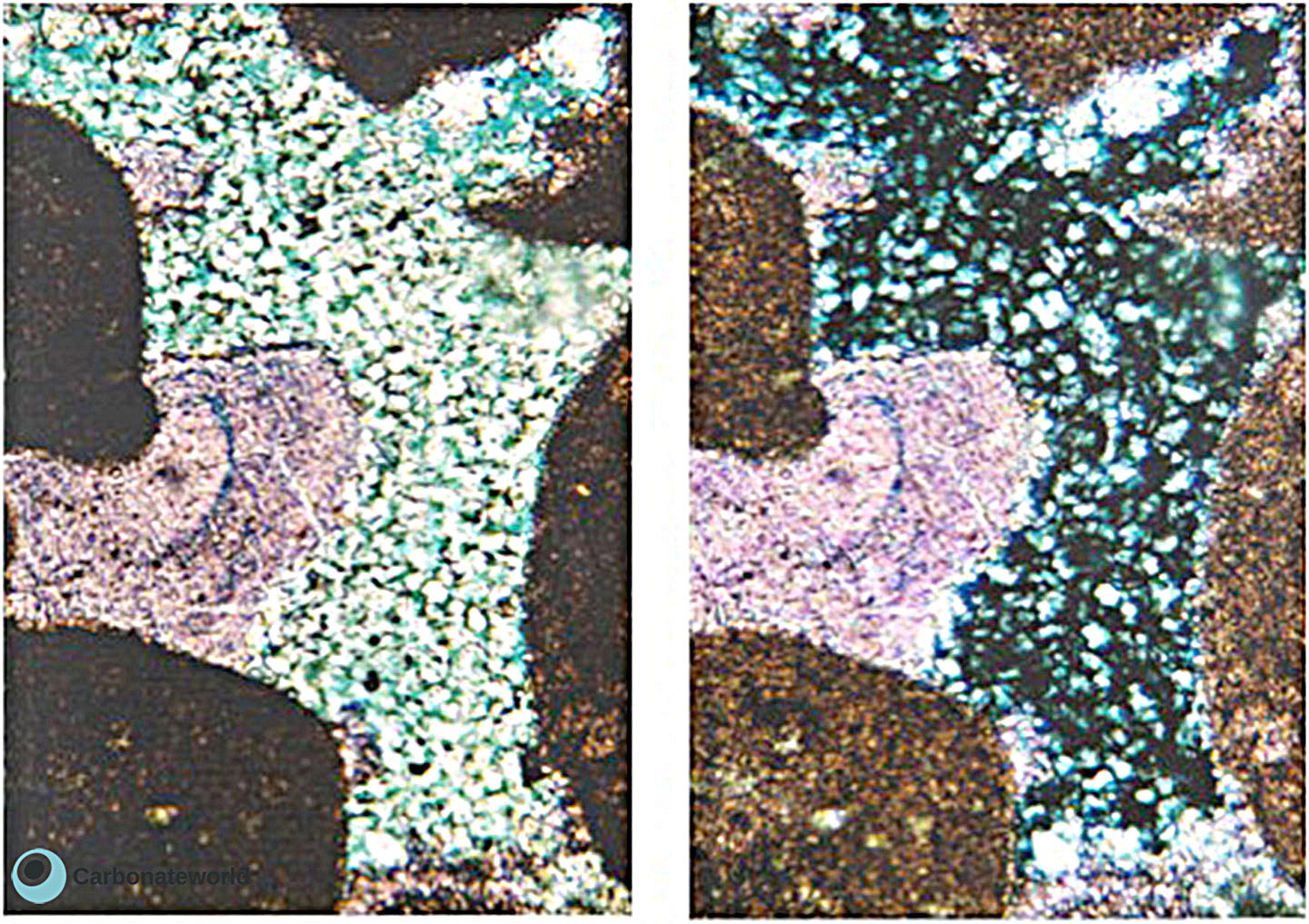

Dickite

Calcite spar
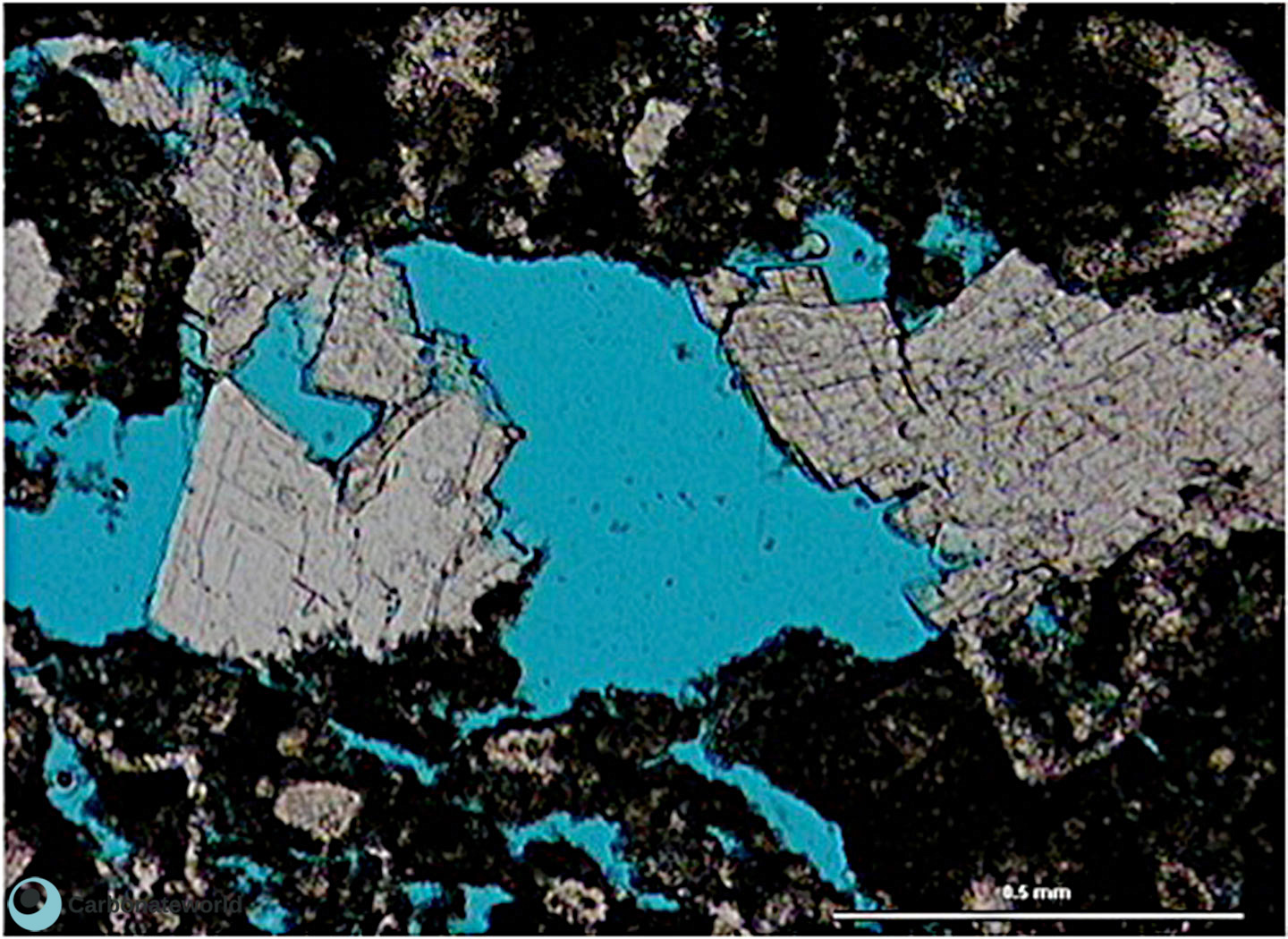

Saddle dolomite

Porosity
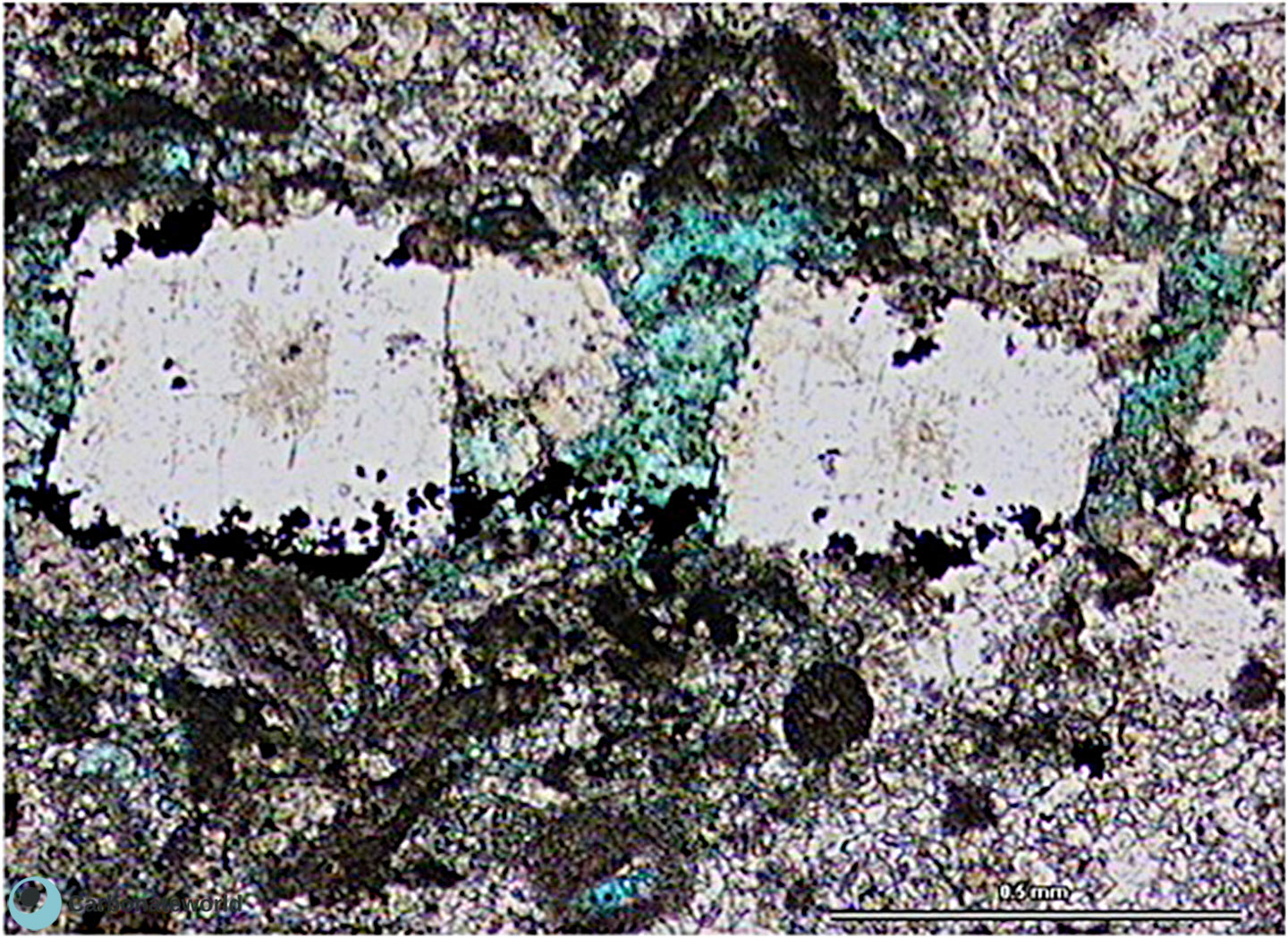

Saddle dolomite

Pyrite
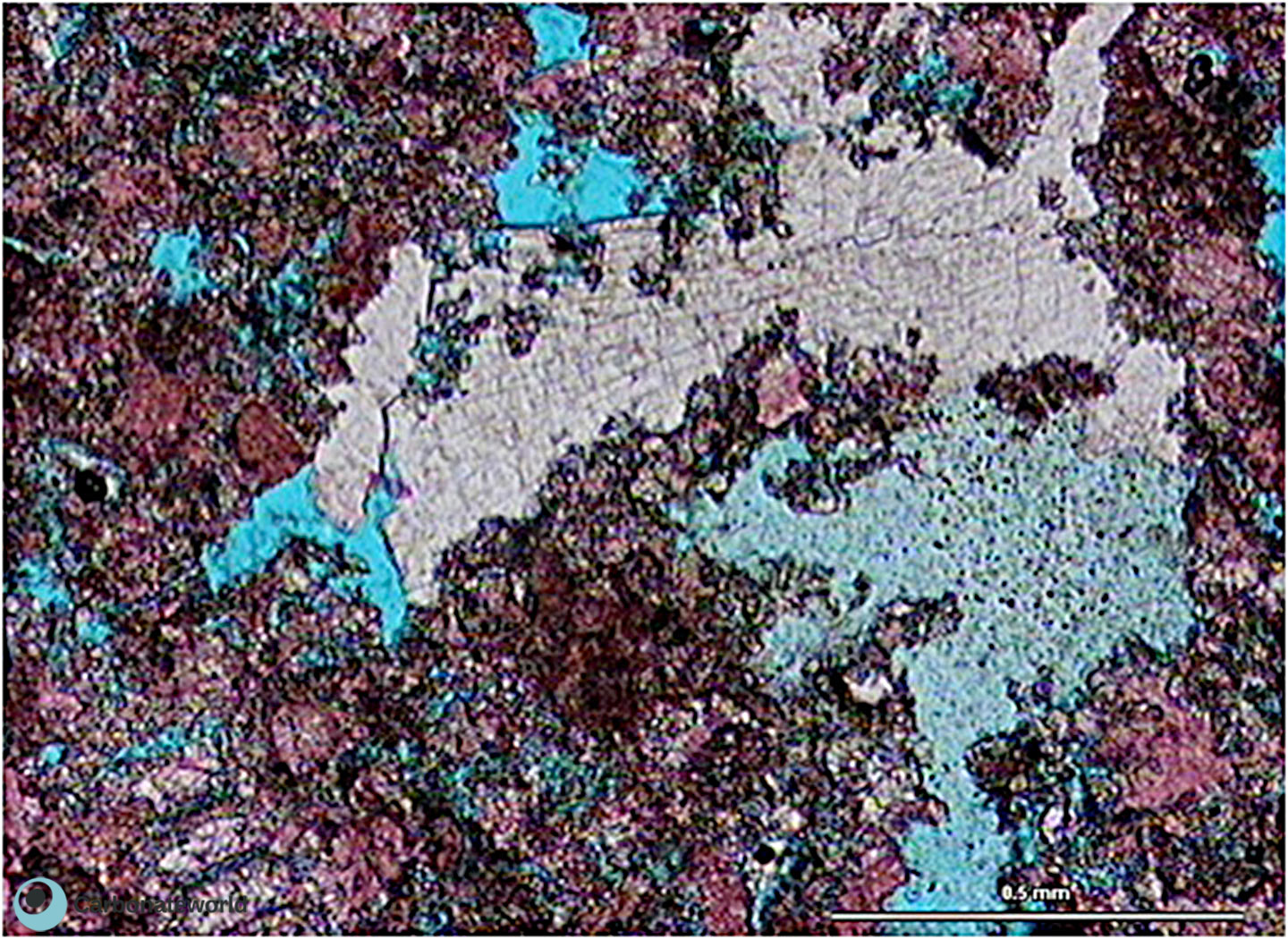

Dickite

Saddle dolomite
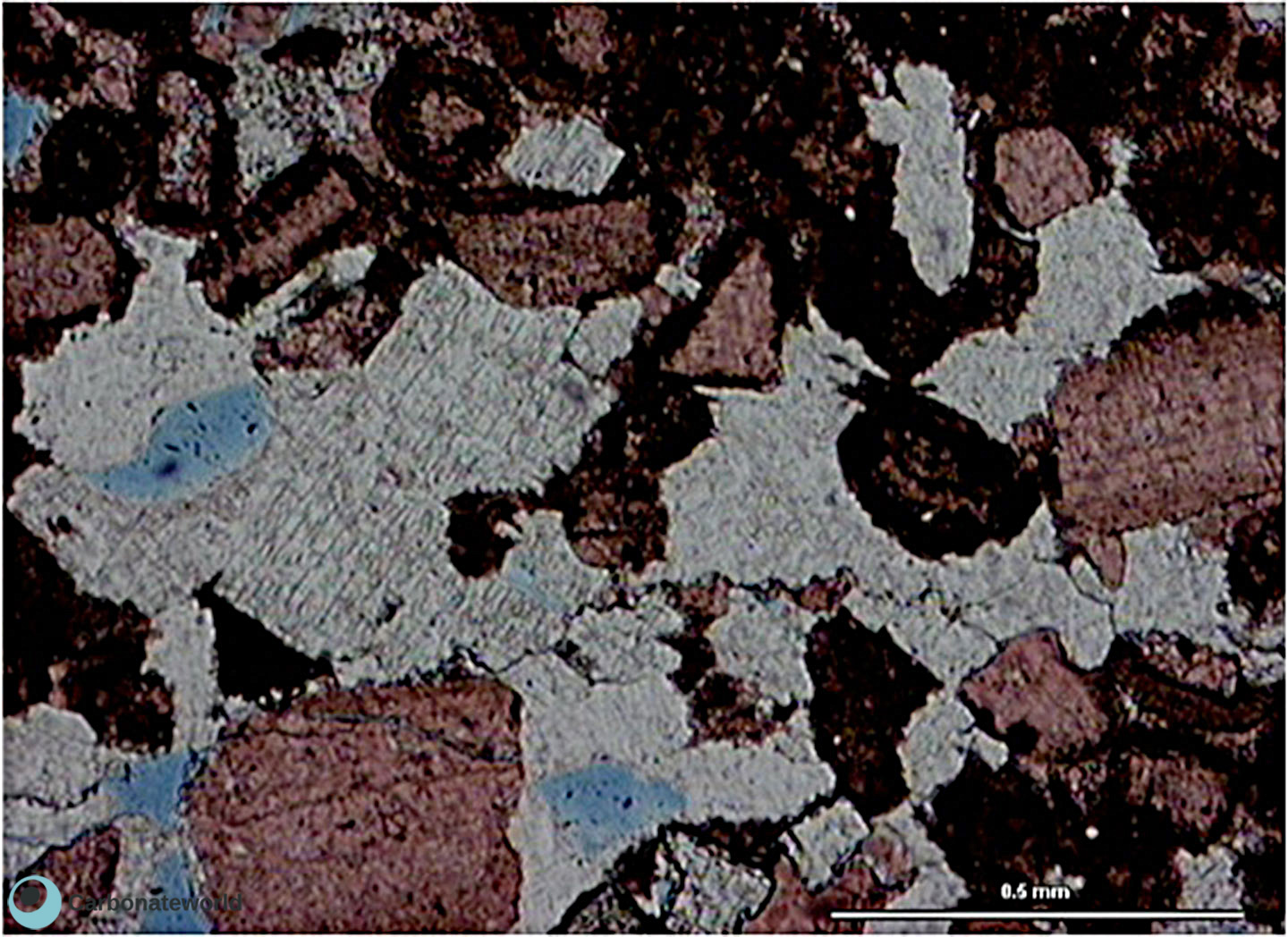

Calcite

Anhydrite
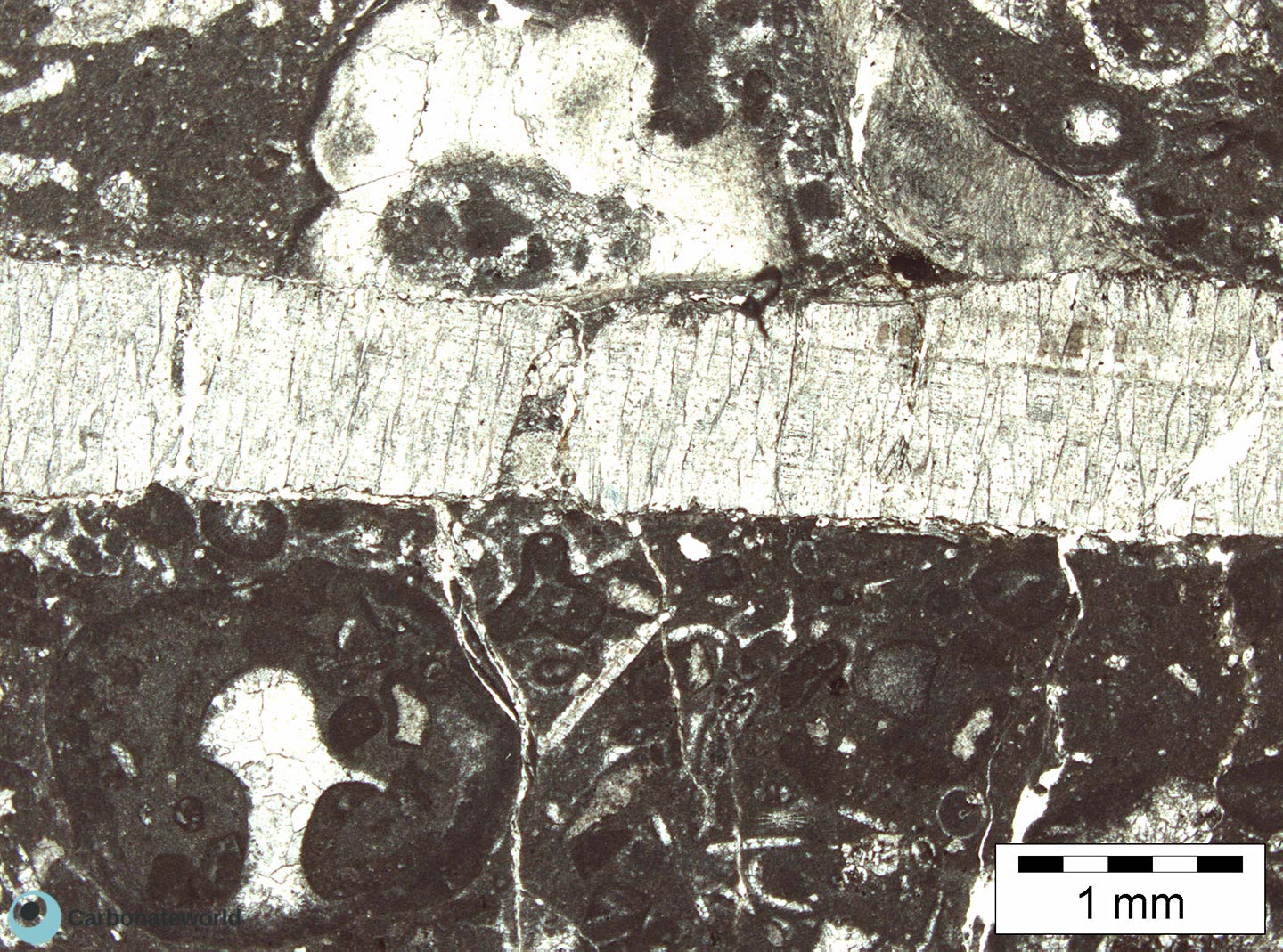

Silicification

Prismatic calcite in fracture
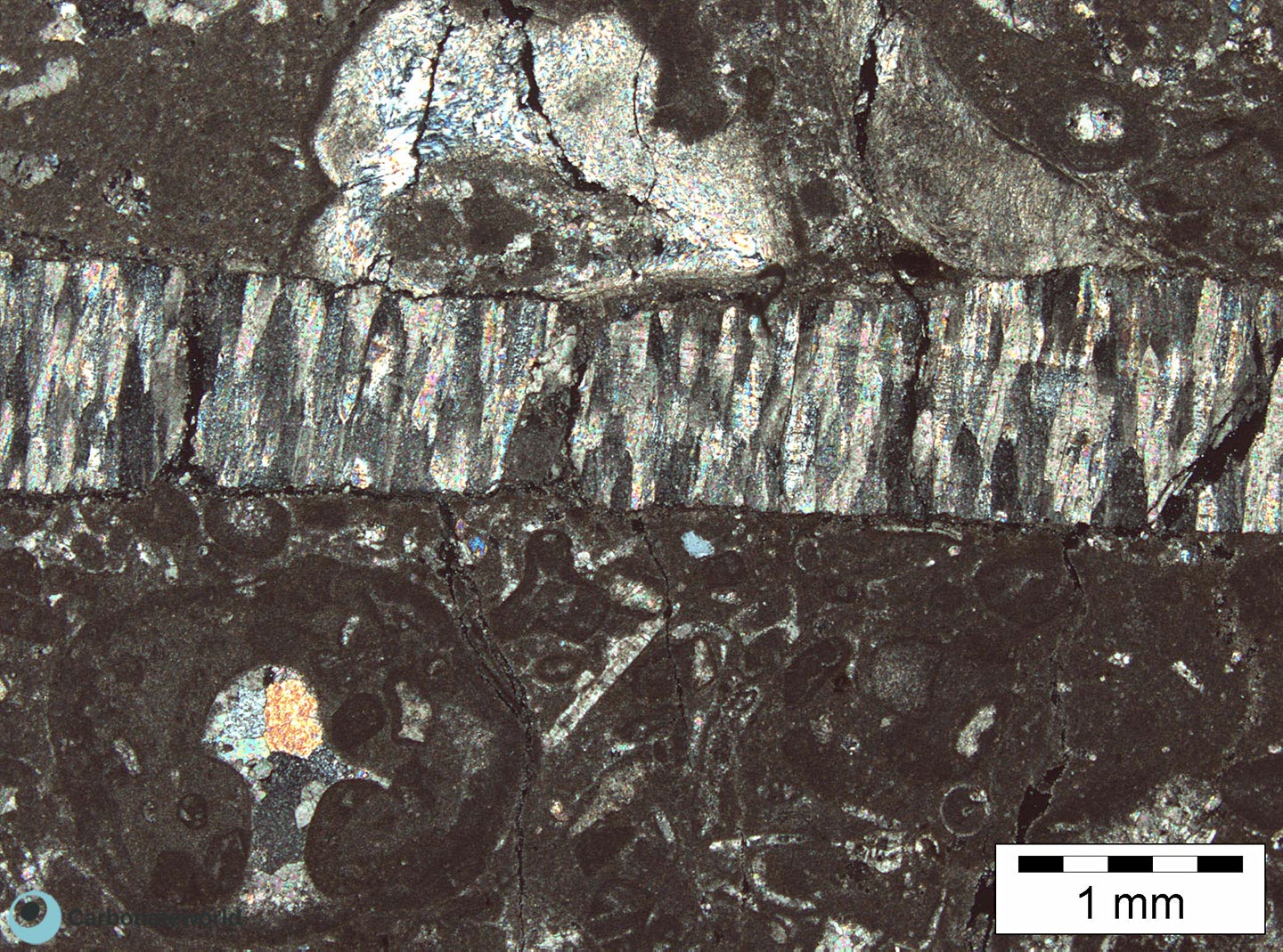

Silicification

Prismatic calcite in fracture
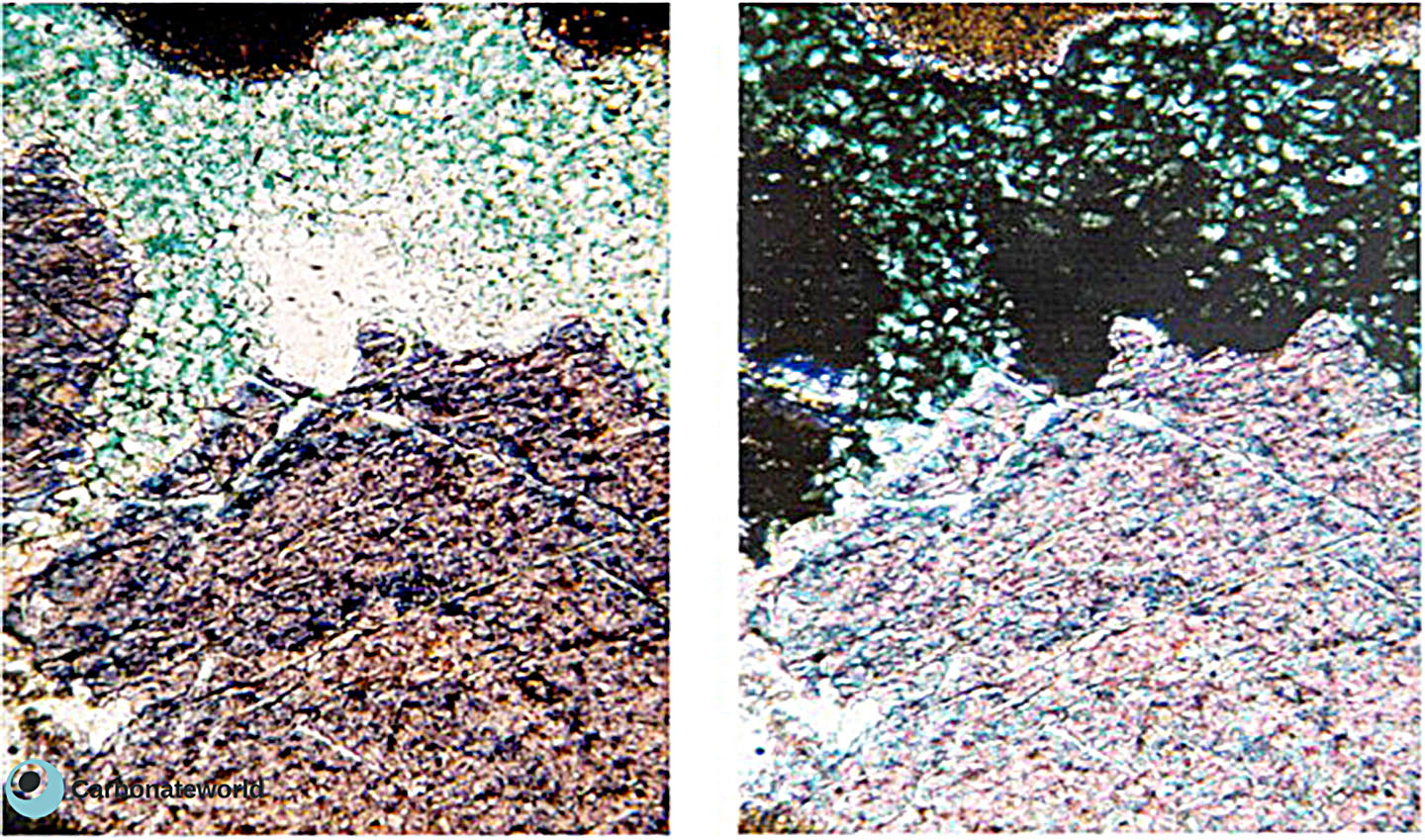

Dickite

Etched calcite cement